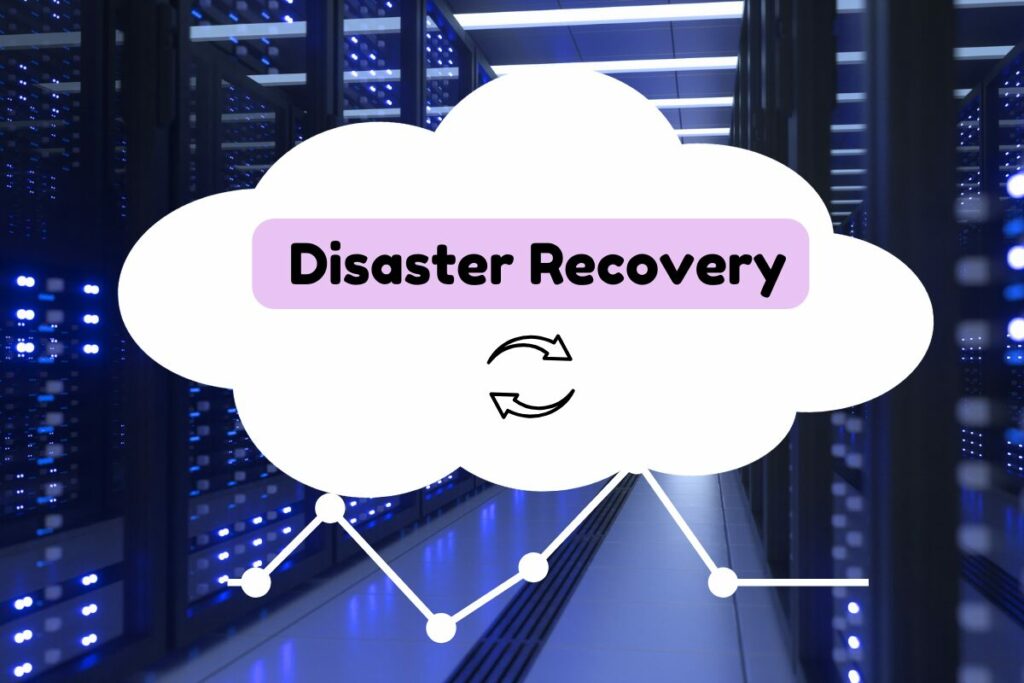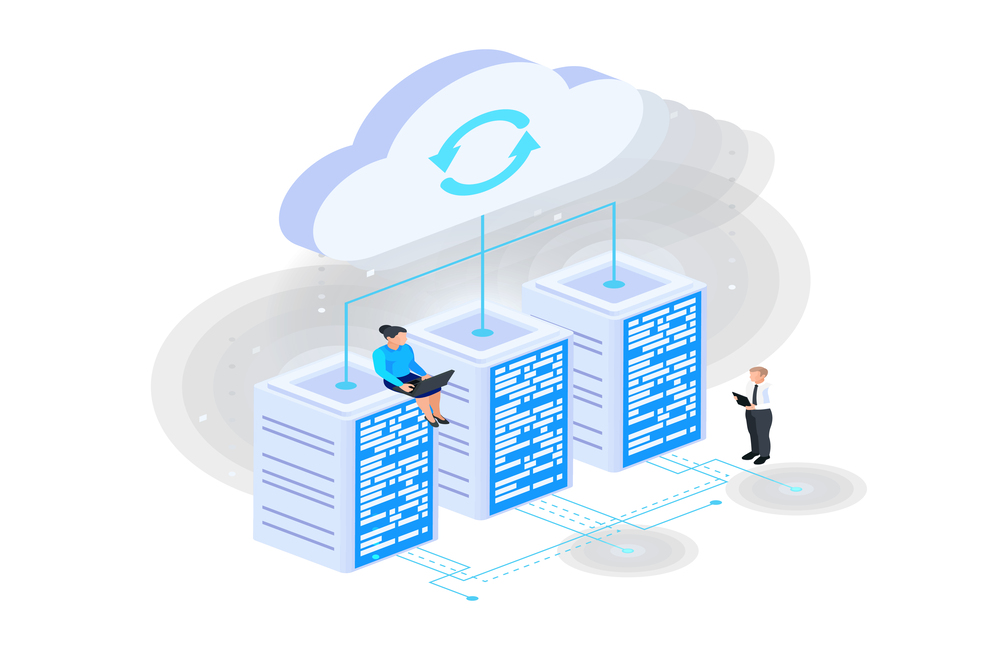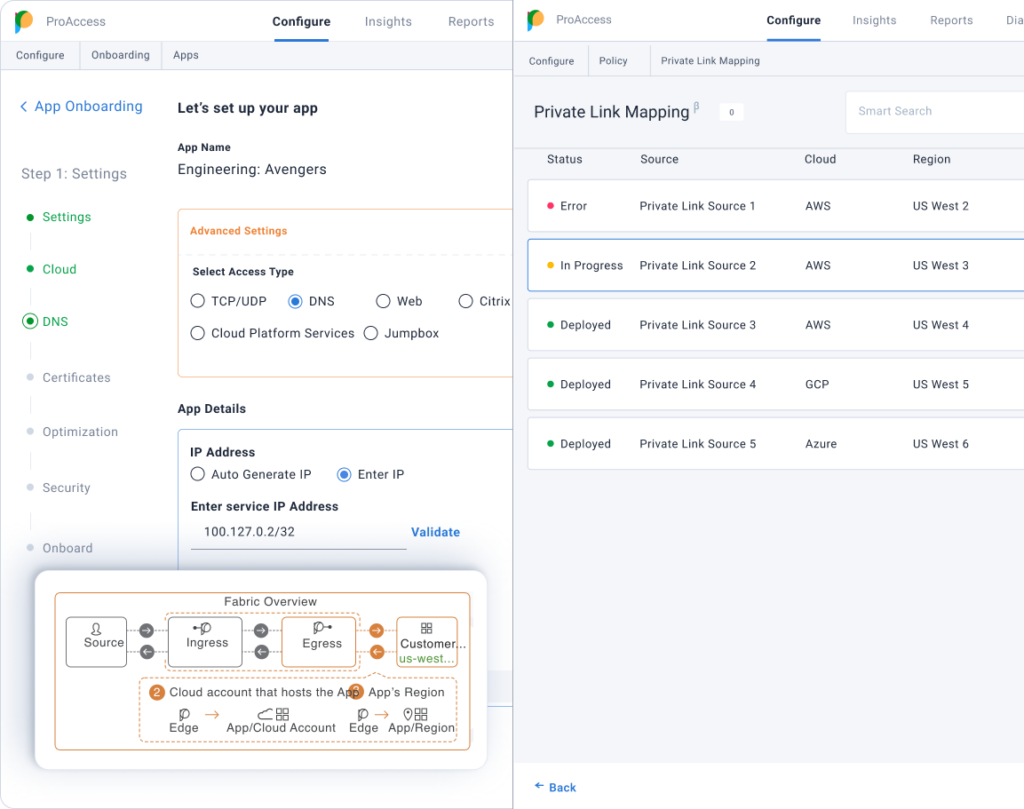CDN Tricks To Optimize Cloud Costs

Configuring your CDN smartly can help reduce overall cloud expenses significantly. While the primary goal of CDNs has always been to enhance user experience through improved performance, availability, and scalability, these benefits often come with added infrastructure costs. However, by optimizing CDN configurations, businesses can manage these costs effectively. Years ago, CDNs started providing value-added services that helped customers boost performance and coverage without excessive spending. Today, strategic use of these services can help businesses cut a substantial portion of their cloud-related costs, ensuring better performance and savings. Understanding Cloud and CDN Cost Factors Before we can effectively reduce costs, it’s crucial to understand their structure. Cloud-based web delivery expenses are typically divided into two main categories: costs related to the Content Delivery Network (CDN) and costs associated with cloud services. CDN costs cover the distribution of content closer to users, ensuring faster and more reliable access, while cloud costs are tied to storage, computing, and data transfer within the cloud environment. Understanding how these components contribute to your overall expenses is the first step toward optimizing your cloud strategy. Understanding CDN Costs CDN expenses are typically calculated based on the amount of outgoing data delivered, measured in GBs, TBs, or even PBs per month. The rates vary depending on factors like the product level, geographical coverage, and features such as static object caching versus dynamic traffic acceleration, and HTTPS support. Key considerations include: By understanding these elements, businesses can better manage their CDN-related costs and choose the most cost-effective configurations for their needs. Breaking Down Cloud Costs Cloud costs can seem complicated, but we’ll simplify it. They are generally categorized into storage, computing, and data transfer expenses. Each component has its own billing model and pricing structure, making it essential to understand how they work together. Cloud Storage Cloud storage costs are typically based on several factors, including the amount of data stored, the number of requests made, and the data retrieved from the storage. Key points to consider: Businesses should monitor these factors closely to optimize storage costs effectively. Cloud Computing Cloud computing costs vary depending on the billing model used, such as reserved instances, on-demand, or spot instances. The choice of model will determine how you are billed, whether by the second, minute, or hour. Key points include: Selecting the right compute model can significantly impact overall cloud expenses. Cloud Networking & Data Transfer When data leaves the cloud provider’s network or moves between different regions, it incurs costs. These rates vary based on the service type and the volume of data transferred. Key considerations are: Monitoring and managing data transfer is crucial for controlling cloud costs. Calculating Overall Cloud Costs To get a comprehensive view, you need to combine CDN costs with cloud costs, including storage, computing, and data transfer. Here’s a simplified formula: Overall Cost = CDN Cost + Cloud Costs (Storage + Computing + Data Transfer) h4Using advanced configuration techniques, businesses can optimize these costs. By tackling complex pricing structures with strategic solutions, it’s possible to manage cloud expenses effectively and enhance the ROI of cloud investments. Offload, Network & Compression Optimization Techniques Using CDN services to cache static content such as images, videos, JavaScript, and CSS files can significantly lighten the load on your origin server, minimizing requests to cloud storage. Typically, initial CDN caching can boost the cache hit rate considerably, depending on content type and popularity. However, you can achieve even better performance with advanced caching techniques. Introducing a second layer of caching, like tiered distribution or regional edge caches, can further enhance the cache hit ratio, reducing costs associated with cloud storage and data transfer. This method can push the cache efficiency much higher, optimizing resource usage. For maximum effectiveness, some CDNs provide a third caching layer, which acts as a primary entry point for your content. Although additional caching layers may involve extra expenses, the savings on cloud costs usually outweigh these fees. Key benefits of additional caching layers include: Optimizing your CDN strategy can greatly enhance performance while reducing costs, ensuring a more efficient and scalable cloud environment. Implementing these advanced caching techniques can lead to long-term savings and better resource management. Optimizing Network and Data Transfer Costs Understanding Dynamic Content and Its Impact on Costs Dynamic content, unlike static content, cannot be cached and must be fetched from the cloud workload repeatedly. Examples include personalized data like post-login account balances, transactional processes such as checkouts, and unique queries like flight or hotel searches. As a result, the cost-saving potential of using a CDN for dynamic content is generally lower. These elements require frequent direct cloud access, leading to increased costs as traffic volume grows. The challenge is finding ways to optimize this unavoidable expense. Understanding the nature of your dynamic content is crucial for effective cost management. Leveraging CDN for Dynamic Content Efficiency It may seem inevitable that cloud costs will rise with increased traffic, but expanding CDN usage to dynamic content can help reduce data transfer costs. This is due to how CDNs interact with the cloud workload, aggregating multiple client connections into a single, continuous connection to the cloud. This method can significantly cut costs, provided your traffic volume and geographical distribution meet certain criteria, making it a smart strategy for some businesses. Proper implementation can optimize resource usage and improve overall performance. Assessing the Suitability of CDN for Your Dynamic Traffic Not all dynamic traffic is suited for CDN optimization, so a detailed analysis of your traffic profile is essential. This includes assessing your application’s specific needs and identifying potential areas for cost savings. Our team can help determine whether this method would benefit your business. Exploring and optimizing CDN usage for dynamic content can open up new avenues for reducing your cloud expenses, providing a more efficient and cost-effective solution for your business needs. A thorough evaluation can uncover hidden opportunities for further optimization and savings. Boost Efficiency with Compression Techniques Compression methods for images, large files, and text-based content help deliver
How To Effectively Reduce Cloud Network Egress Costs?

Cloud data egress costs are often an unexpected burden for many organizations early in their cloud migration journey. Unlike fixed costs for cloud services such as virtual machines and storage, the cost of transferring data out of the cloud can be variable and unpredictable. Once organizations become aware of this, they often rethink their application architecture to minimize data transfer between network segments. This can be achieved by employing techniques like compression and deduplication or by incorporating a caching layer to reduce the volume of data moving across the network. Ideally, businesses transitioning to the cloud should plan their applications with these strategies from the start to not only lower data transfer expenses but also enhance overall performance and efficiency. Taking these proactive measures can significantly reduce unexpected costs and optimize cloud usage. What Is Cloud Data Egress? Cloud data egress refers to any data that exits a cloud provider’s network and is transferred to another location. This destination could be an on-premises data center, a different cloud data center in another region, an “availability zone” (data center) within the same cloud service, or even another virtual network within the same data center. Cloud providers often have varying and complex pricing models for data egress, making it crucial to understand how these charges are calculated. For instance, regions consist of multiple data centers within a defined geographic area, offering robust network connectivity to support high-availability applications across regions. However, when data is transferred from one region to another, it is metered and typically charged based on the volume of data moved, measured in gigabytes. Availability zones represent another key concept in cloud service architecture. While the terminology may differ slightly between cloud providers—terms like “availability domains” or simply “zones” are common—the concept remains the same: multiple data centers within the same region with separate network and power sources, designed to reduce the risk of simultaneous failure. Cloud providers encourage the use of multiple availability zones for enhanced resilience and high availability, but data transferred between these zones is also metered and may incur additional charges per gigabyte. Understanding these nuances is essential for managing cloud data egress costs effectively and planning for optimal data flow strategies. Are Cloud Data Egress Costs Significant? Organizations enjoy numerous benefits when they move IT systems to the cloud, including modern cloud economics, faster IT enhancements, higher availability, and quicker access to new technologies like machine learning and artificial intelligence. However, a potentially overlooked aspect of cloud economics is data egress costs, which can significantly impact budgets. Cloud service providers track and meter the movement of data leaving their network, whether it’s moving between regions, availability zones, or virtual networks within the same region. While inbound traffic, or data ingress, is almost always free regardless of volume, outbound traffic, or data egress, is metered and charged differently based on factors like destination, service type, and network path. How Data Egress Charges Accumulate Typically, cloud providers charge a fixed rate per gigabyte for data egress, with discounts available for high-volume transfers beyond a certain threshold. This can include standard network traffic, such as data moving between cloud virtual machines, or more cost-sensitive scenarios like serving content from cloud storage to the internet. For example, websites and mobile applications often use cloud object storage services, like AWS S3, Azure Blob Storage, or Google Cloud Storage, to serve media files. This architecture optimizes performance and developer efficiency but incurs costs for both storage read operations and data transferred to the internet. Applications with high traffic volumes, especially those hosted across multiple cloud regions, can accumulate significant egress costs if their assets are stored in a single, remote region. Although many established websites mitigate these expenses by using content delivery networks (CDNs) to distribute assets closer to users, new or rapidly expanding sites might not yet be optimized for CDN usage, resulting in higher egress charges. Beyond web applications, various cloud architectures can incur substantial data egress fees, including traffic between virtual machines and databases, virtual network peering, and private links to platform-as-a-service offerings. Understanding and managing these costs is crucial for organizations to effectively control cloud spending while still leveraging the cloud’s benefits. Taking proactive steps to optimize data flow can help mitigate unexpected expenses and ensure more predictable budgeting. Key Takeaways Why Cloud Providers Charge for Data Egress Cloud providers impose data egress charges to recover the significant infrastructure costs associated with building and maintaining their extensive global networks. These networks, which connect their data centers and facilitate seamless data transfer between locations, require massive investments, often amounting to millions or even billions of dollars. A notable example is Microsoft’s 2017 investment in a 4,104-mile undersea cable connecting the US East Coast to Spain, demonstrating the scale of infrastructure needed to support cloud services. Beyond initial construction, cloud providers continuously invest in maintaining and enhancing the reliability and performance of these networks. Egress charges help fund these ongoing improvements, ensuring that customers receive high-quality, reliable service without having to manage complex, multi-provider global networks themselves. While these charges may seem frustrating, they are a necessary part of the cost for leveraging the robust and scalable infrastructure of the public cloud. Why Cloud Data Egress Costs Seem So High One key reason cloud data egress costs appear so substantial is the difference in billing transparency between public cloud and on-premises deployments. In the cloud, all expenses—covering storage, servers, networking, and other services—are consolidated into a single invoice. In contrast, on-premises deployments typically involve multiple invoices from various vendors, spread out over time. Additionally, companies must separately cover costs for data center power, cooling, rent for colocation facilities, and software or support, which often obscures the total expense. For IT managers unfamiliar with the consolidated nature of cloud billing, receiving one comprehensive invoice can be quite a shock.Another factor is the variability of cloud costs compared to the fixed expenses of on-premises deployments. Public cloud providers offer flexible, variable-cost solutions that adjust with changing cloud computing demands, which
Cloud Computing Costs In 2024

As cloud computing continues to drive innovation, it’s crucial for business and tech leaders to look beyond initial savings on hardware and software. By carefully aligning their cloud resources with actual use cases, organizations can avoid overpaying for unnecessary computing power or storage. Choosing cloud providers with transparent pricing models for networking resources helps businesses manage their costs effectively and boost their ROI. Focusing on core infrastructure, such as compute, storage, and network, is the first step toward optimized IT. Understanding these foundational elements is key before layering additional services, which can increase costs and complexity. What Exactly is Cloud Computing? Cloud computing delivers resources and services like computing power and applications over the internet or private networks. Organizations pay cloud providers for the infrastructure, applications, and management of these resources based on their usage. Here are some key considerations to keep in mind: Understanding these aspects will allow you to make more informed decisions and avoid common pitfalls in cloud budgeting. Using tools like workload and cloud cost estimators can help businesses calculate the total cost of ownership (TCO) and make informed decisions about their cloud investments. These tools provide valuable insights into potential expenses and help optimize resource allocation. With the right planning, you can avoid surprises and maximize the value of your cloud strategy. Managing Cloud Computing Costs for Your Business Cloud computing is at a critical juncture, with investments in shared cloud infrastructure expected to surpass traditional IT spending for the first time. As more essential workloads move to the cloud, businesses must carefully manage costs by leveraging cloud economics. Here are key strategies to consider: By focusing on these areas, businesses can ensure their cloud investments are both efficient and valuable. A well-structured cloud strategy can drive innovation and increase the overall ROI of technology investments. Staying proactive with cloud management helps prevent unexpected costs and keeps operations running smoothly. Optimizing Your Cloud Usage with Right-Sized Resources No business wants to overpay for resources they don’t need, which is why selecting the right-sized cloud setup is crucial. Companies are turning to providers with tech stacks that enable them to minimize overprovisioning and avoid paying for unused capacity. To make this work: By carefully managing resources, businesses can ensure they are only paying for what they actually use. This approach not only helps in cost reduction but also in maintaining a lean and agile IT environment, ready to scale as needed. Leveraging built-in automation tools can further streamline this process and reduce manual intervention. Ongoing Optimization for Cost-Effective Cloud Usage To avoid unnecessary costs, businesses are actively engaging in practices that continuously optimize their cloud usage. This requires a proactive approach to managing cloud infrastructure with a focus on maximizing efficiency. Key practices include: Staying vigilant with these practices ensures that your cloud costs remain aligned with actual business needs. Regular audits and reviews of your cloud environment can further enhance efficiency and prevent unexpected expenses. Monitoring usage patterns closely can also reveal opportunities for additional cost savings. Built-In Security and Compliance Features Matter Cloud services often come with standard configurations, but many businesses need more robust security and compliance features. Finding a provider that offers these as built-in options is crucial for avoiding extra costs and complexity. Important considerations include: This approach helps businesses stay compliant and secure without incurring additional costs. It also reduces the complexity of managing multiple third-party tools, providing a more streamlined security solution. Making security a built-in feature from the start can save both time and money in the long run, ensuring a smooth and secure cloud experience. How Much Will Cloud Computing Cost for Your Business? Investing in cloud services can lead to significant savings and increased efficiency, but the actual cost varies depending on specific needs. A significant percentage of businesses have reported improved efficiency and cost optimization as key benefits of cloud investments. To estimate your costs: A thorough evaluation helps ensure that your cloud investment aligns with your business goals. With the right strategy, you can maximize the benefits of cloud computing while keeping expenses under control. Regularly revisiting and adjusting your cloud strategy is essential for long-term success and cost management, ensuring your business remains agile and competitive. Cloud Provider Comparison Virtual Machine Instance (4 vCPUs, 16 GB RAM, monthly) Kubernetes Cluster (100 vCPUs, 750 GB RAM, monthly) Block Storage (1×1 TB, 15K IOPS, 125 MB/sec, monthly) Public Bandwidth Transferred Out (50 TB, monthly) How Can Businesses Calculate Cloud Costs? Determining cloud costs involves using estimator tools from cloud providers to calculate the total cost of ownership (TCO). This process should include reviewing pricing models and options, such as discounts for long-term commitments or high-volume usage. Businesses must also consider hidden costs, like early termination fees or unexpected data transfer charges. To get started, here are some key steps to take: By thoroughly assessing these factors, businesses can make more accurate predictions and avoid unexpected expenses, ensuring a more manageable cloud budget. Proper planning can help align cloud investments with business objectives and maximize value. Estimating Direct Cloud Operational Expenses Calculating direct operational expenses for cloud services begins with analyzing three core areas of cloud infrastructure. These include compute resources, storage requirements, and network usage, all of which contribute significantly to the total cost. Key considerations for these areas are: Beyond these basics, you may need additional services, such as API management, monitoring, and security tools. Each added service introduces further costs, so planning for these in advance is crucial for accurate budgeting. Understanding your specific needs helps in selecting the most appropriate and cost-effective cloud services. Evaluating Cloud Pricing Models Cloud pricing models vary and can significantly impact your costs. Consumption-based or pay-as-you-go models offer flexibility to scale up or down as needed, while other options might provide cost benefits through volume purchasing or long-term commitments. Consider these models: Each cloud provider structures these offerings differently, so it’s essential to review all the details to ensure an accurate comparison. This approach helps in
What Are The Best Cloud Cost Management Strategies?

With over 90% of organizations relying on cloud computing, managing cloud costs has become a significant challenge despite the numerous benefits it offers. The pay-as-you-go model, while flexible, can often lead to unforeseen expenses if not handled properly. Many companies experience budget overruns due to uncontrolled cloud spending, making it essential to carefully monitor cloud usage and align it with actual needs. Failing to do so could result in cloud expenses consuming a large portion of your budget, impacting overall financial stability. To tackle this issue effectively, businesses need to adopt a strategic approach to cloud cost management. Here are some key strategies to ensure your cloud investment yields maximum value: By following these strategies, you can effectively manage cloud costs, allowing your organization to maximize the value of its cloud investment while maintaining a balanced budget. Implementing these best practices will not only reduce costs but also enhance overall operational efficiency. Navigating Cloud Costs: Simplifying Complex Pricing Models The intricacies of cloud pricing models and billing structures can be overwhelming for organizations and decision-makers as they explore the cloud landscape. With a wide array of choices from different providers—including pay-as-you-go options, reserved instances, and custom pricing agreements—understanding the nuances of each model can feel like a daunting task. Beyond the models themselves, the challenge intensifies due to the granular billing details associated with specific services such as compute, storage, and data transfer. Each of these services comes with its own unique pricing tiers and conditions, making it crucial to have a deep understanding of these variables to manage costs effectively and avoid unexpected expenses. To navigate this complexity, it’s essential to not only comprehend the pricing structures but also to regularly review your usage and align your resource allocation with your organization’s needs. Compute represents the processing power necessary to run applications and services in the cloud, making it one of the most significant expenses in cloud deployments. It includes the number of virtual machines (VMs) or instances used, their specifications—such as CPU and memory—and the duration they are operational. Essentially, the more processing power and time you require, the higher the cost. Storage costs are tied to the amount of data stored in the cloud and the length of time it remains there. The choice of storage class, such as standard, infrequent access, or archive, plays a crucial role in determining costs. Policies for data retention and deletion also significantly impact expenses, making it important to regularly review and optimize storage use. Data transfer involves the cost of moving data in and out of the cloud environment. This can rapidly become a substantial expense, particularly for businesses that frequently transfer data between on-premises systems and the cloud, or across different cloud regions or services. High data movement requirements can lead to unexpected cost spikes, complicating budget management. The complexity and variability of these costs often lead to unpredictability in monthly cloud expenses, making financial planning and budgeting challenging for organizations. By focusing on optimizing these three core components—compute, storage, and data transfer—you can not only reduce cloud expenditures but also improve the efficiency and effectiveness of your organization’s use of cloud technologies. Common Cloud Cost Challenges: Avoiding the Pitfalls Managing cloud costs effectively requires a deep understanding of pricing structures and careful oversight. Without these, organizations often end up over-provisioning resources or missing opportunities to optimize their cloud spend, leading to inflated costs. These unnecessary expenses usually arise from several common challenges that many businesses face while implementing cloud strategies. Among these factors, over-provisioning, underutilization, and lack of visibility are the primary contributors to unnecessary cloud spending: Over-Provisioning Over-provisioning happens when organizations allocate more cloud resources—whether it’s compute power, storage, or additional services—than their workloads actually require. This practice often stems from a cautious approach to ensure that applications perform optimally under all conditions, including peak demand periods. While this may prevent performance issues, it frequently results in many resources remaining idle or significantly underutilized. The consequence is that businesses end up paying for capacity they don’t need, leading to inflated cloud costs without any proportional increase in value or performance. By accurately assessing your workload needs and adjusting resource allocation accordingly, you can prevent over-provisioning and optimize cloud spending effectively. Underutilization Underutilization occurs when cloud resources that have been allocated are not fully utilized. While it is closely related to over-provisioning, underutilization specifically addresses the inefficiency in using the resources that are already in place. This means that although the capacity exists and is paid for, it is not being effectively leveraged to generate business value. For example, you may have instances running with high specifications, but they consistently operate at a fraction of their potential capacity. This results in organizations incurring costs for resources that aren’t delivering the expected performance or benefits. By regularly evaluating and right-sizing these resources, businesses can ensure they are getting the most value from their cloud investment and avoid unnecessary expenses. Lack of Visibility Lack of visibility into cloud usage and spending is a major factor that leads to inflated cloud costs. Without clear insights into which resources are being utilized, by whom, and for what purpose, effectively managing and optimizing cloud expenditures becomes an uphill battle. This obscurity often results in both over-provisioning and underutilization, as decision-makers lack the crucial data needed to align resources with actual business needs. This issue is widespread—studies indicate that only 3 out of 10 organizations have a clear understanding of where their cloud budget is being allocated. This lack of transparency not only hampers cost control but also stifles the ability to make informed decisions regarding resource allocation and usage. To address these challenges, organizations need a comprehensive approach to cloud cost management. This includes implementing the right tools and processes to monitor usage in real-time, promoting a culture of cost awareness, and continuously optimizing cloud resources. By enhancing visibility and fostering a proactive approach, businesses can achieve more efficient and cost-effective cloud operations. Smart Strategies for Cloud Cost Reduction Given the substantial
Why Is Cloud Computing Cost-Effective?
Cloud computing is cost-effective because you’re no longer spending big on hardware or software, and those ongoing expenses like maintenance, upgrades, or even hiring a dedicated IT team vanish too. It’s not just about the upfront savings – with cloud resources, you get added perks like stronger cybersecurity and robust data recovery measures baked right into the service level agreement (SLA). But it’s not just about saving money. With cloud services, businesses also get a boost in cybersecurity, thanks to advanced protections included in most service level agreements (SLAs). The same goes for data recovery — since your data lives in the cloud, it’s safer and easier to recover in case of an emergency. This combination of cost savings, enhanced security, and operational efficiency makes cloud computing a no-brainer for businesses looking to streamline their tech expenses while improving service quality. These key points also provide decision-makers with the insights they need to make an informed, strategic shift to the cloud. What Exactly Is Cloud Computing? At its most basic level, cloud computing refers to hosting IT resources—such as servers, storage, and applications—off-site, with access provided through the internet. Instead of maintaining physical servers and equipment in a local data center, businesses can tap into a cloud service provider (CSP) that handles all the heavy lifting. Whether it’s databases, email servers, or mission-critical software, all these resources are remotely managed and accessible from any device connected to the web. This shift fundamentally changes the way companies operate. No more constant hardware upgrades, manual backups, or space-hogging server rooms. The responsibility of managing and maintaining IT infrastructure moves to the CSP, which offers businesses the freedom to focus on growth, innovation, and customer service rather than being bogged down by IT logistics. What Can Cloud Computing Do for Your Business? Cloud computing delivers an impressive range of IT services, all of which can be accessed remotely, just like you would with an on-site server. The difference? You’re not constrained by physical limitations. Whether it’s database management, running business intelligence (BI) reports, processing applications, or securely storing data, cloud services offer all the functionalities of a traditional server farm without the burden of ownership. This flexibility allows businesses to scale their operations up or down depending on demand, optimizing both performance and cost. Moreover, it enables companies to experiment with advanced technologies like AI and machine learning without needing specialized hardware on-site. These services are provided on a pay-as-you-go model, which means businesses only pay for the resources they use, avoiding the high upfront costs typically associated with IT infrastructure. Key Benefits of Cloud Computing for Businesses When businesses embrace cloud computing fully, two main advantages quickly rise to the surface: significant IT cost reduction and access to data and applications from virtually anywhere. Cloud services don’t just save money; they also provide the flexibility to work remotely, support mobile workforces, and quickly adapt to changing business needs. Moreover, security improvements are a big deal. Over 90% of businesses that switch to cloud computing report an enhanced cybersecurity stance. Why? Cloud providers offer state-of-the-art security measures, including encryption, regular patches, and compliance with industry regulations. This takes a massive load off in-house teams, ensuring sensitive data is protected without additional overhead. The disaster recovery aspect is another big win. With business-critical data stored in multiple locations, companies are far better equipped to recover from unexpected disruptions, whether it’s a cyber-attack or a natural disaster. Beyond these key benefits, here are some additional reasons why cloud computing makes so much sense: Choosing the right cloud computing model is crucial, though. Different deployment strategies come with varied costs and requirements, so it’s important to find the right fit for your business. When done correctly, cloud computing removes the heavy burden of maintaining a local data center while delivering exceptional flexibility, scalability, and cost savings. Understanding Cloud Computing Models Cloud computing offers businesses unparalleled flexibility, allowing you to shift as much or as little of your IT operations to the cloud as you see fit. Whether you want to go all-in and move everything or selectively manage only critical systems, cloud models can be tailored to your unique business needs. Let’s explore the primary cloud computing models and how they differ in terms of management and responsibility. Infrastructure as a Service (IaaS) IaaS is ideal for companies that still want a level of control but without the headache of managing physical hardware. In this model, you are responsible for managing your operating systems, middleware, applications, and business data. Essentially, you take care of what runs on the infrastructure, while the cloud service provider manages the physical resources such as storage, networking, and servers. This model works well for businesses that want to scale their infrastructure up or down as needed without being tied down by physical assets. Platform as a Service (PaaS) With PaaS, more of the heavy lifting is handled by the cloud provider. They manage not only the hardware but also the operating system and middleware, so you can focus on your core business: developing and deploying applications. PaaS is particularly useful for developers because it provides a ready-to-go environment with everything you need to build, test, and launch apps. It’s a great way to speed up the development process while reducing costs tied to maintaining infrastructure. Software as a Service (SaaS) SaaS takes the simplicity of cloud computing to the next level by offering complete, end-to-end services that you access over the internet. With SaaS, you don’t have to worry about hardware, operating systems, or even the application itself beyond configuration and usage. The cloud provider manages it all, and you can access the software from any device with a web browser. Popular SaaS applications include things like CRM tools or payroll management systems. By eliminating infrastructure costs, businesses can shift their focus to using the software to drive growth without worrying about underlying technology. Choosing the Right Cloud Deployment Model Choosing the right cloud deployment model isn’t just a matter
Cloud Computing Costs: Service Breakdown Of 2024

While many enterprises leverage cloud services for innovation, business growth, and flexible scalability, determining the actual costs can often be ambiguous. Cloud service vendors present a wide array of payment models, and numerous additional factors play a significant role in shaping pricing. In this guide, we will delve into the complexities of cloud computing costs and shed light on the essential elements that influence them. By clarifying these key factors, we aim to provide a practical roadmap that empowers businesses to navigate the financial landscape of cloud services effectively. Understanding these pricing dynamics will enable organizations to make informed decisions that align with their operational needs and budget constraints. Overview of Cloud Service Costs The cost of cloud services can fluctuate significantly due to various contributing factors, and these costs differ substantially across providers. To help clarify, the table below outlines some of the most important pricing elements that influence cloud service expenses. These factors are key to understanding the financial commitments involved, and in the next section, we’ll delve deeper into each one to provide a more detailed breakdown. Pricing Factors Cost Network Infrastructure Costs are based on bandwidth usage. Typically measured on a monthly basis. Example: Begins at $2.50 per month. Storage Depends on storage type and volume. Often charged per user, per month. Example: Ranges from free (limited storage) to $15/user/month (unlimited storage). Maintenance and Updates Covers ongoing system maintenance and software updates. Generally calculated monthly for a set number of users. Example: Starting at $5,000 per month for 500 users. Hidden Charges May include exit fees, which are often confidential and contract-dependent. Additional costs can stem from regional availability zones and support services. By understanding these factors, businesses can make more informed decisions regarding their cloud service investments. This insight into potential costs helps avoid unexpected charges and allows for better budgeting and planning. How Much Do Cloud Services Typically Cost? Calculating the cost of cloud services can feel overwhelming due to the range of variables involved. Many cloud service providers offer pricing calculators, which allow you to select specific products and input usage details to receive an estimate. However, predicting your actual usage and the resulting charges can be challenging, as needs often evolve over time. To better understand your potential expenses, it’s helpful to explore the most common pricing models cloud vendors use. Here’s a breakdown of how different vendors typically structure their cloud computing costs. Key Factors Influencing Cloud Computing Pricing Various elements determine the overall cost structure of cloud computing services. These include the types and quantities of services utilized, computing resources needed, and the storage demands of your specific operations. Additionally, providers consider data transfer rates, which can vary dramatically based on the volume and speed at which data moves within the network. Understanding these factors helps businesses optimize their cloud expenditures effectively. Network Costs in Cloud Computing Cloud computing is built on a scalable, high-performance network infrastructure that ensures seamless data transfer and connectivity between different components. The cost here is typically tied to bandwidth usage, as well as the amount of data transmitted in and out of the cloud. By monitoring network usage and optimizing transfer rates, businesses can manage their cloud networking costs more efficiently. Understanding Cloud Storage Costs Storage is a major contributor to cloud computing expenses, with pricing depending on the type of storage (file, block, or elastic), performance requirements, and additional features. Options like automated backups, data replication, and high availability features often come at a premium, increasing the overall cost. Selecting the right storage type based on business needs can significantly impact cost savings. Investment in Hardware and Maintenance Cloud providers constantly invest in top-tier hardware such as servers, memory, and processors to maintain optimal performance. In addition to hardware, ongoing maintenance of essential infrastructure like firewalls, routers, and security updates also affects pricing. These investments ensure that clients receive reliable and secure services, but they are reflected in the overall costs. Uncovering Hidden Fees in Cloud Computing Costs Many cloud providers include hidden fees that can significantly increase your overall expenses. Being aware of these charges is crucial to managing your cloud budget effectively. Below are some of the most common hidden costs to be mindful of when selecting a provider: Data Overage Charges: Most cloud vendors set a fixed limit on data and storage usage in their pricing plans. Exceeding these limits often results in unexpected additional fees that can quickly add up. Monitoring your data usage is essential to avoid these overages. Termination Fees: If you decide to switch providers or discontinue services, some vendors impose exit fees for retrieving your stored data. These fees can make the transition more costly than anticipated, so it’s important to understand the terms before committing. Pricing Discrepancies by Region: Cloud providers frequently charge different rates based on the region or availability zone in which services are offered. Always check pricing specific to your location to avoid surprises when billing arrives. Support Fees: While basic support is often included, many vendors charge extra for advanced or personalized support services. Tracking and resolving support issues may come with additional costs, so be sure to clarify what’s included in your plan. Exploring Cloud Pricing Models Cloud service providers offer various pricing structures tailored to different business needs, ensuring flexibility and scalability. Below are some of the most popular pricing models available to organizations today: On-Demand Pricing With this pay-as-you-go plan, businesses are billed based on their actual usage, either on a per-second or per-hour basis. This model provides unmatched flexibility, allowing companies to scale their resources up or down without any upfront financial commitment. It’s particularly ideal for organizations with fluctuating demands that seek cost-efficiency without long-term contracts. For companies looking to maintain operational agility, this pricing model is a highly adaptable solution. Instance-Based Pricing In this model, costs are tied directly to the cloud instances or virtual servers a company uses, with the bill reflecting the number of servers and hosts allocated. It’s a straightforward model that suits
How Much Does Cloud Computing Cost For Small Businesses?

Cloud computing is more than just a tech upgrade; it’s a strategic move that can greatly improve a small business’s efficiency, flexibility, and capacity for innovation, all while potentially reducing costs. However, for small businesses with limited budgets, understanding how to invest wisely in cloud services is essential. This guide will break down the expenses involved in cloud computing for small businesses, offering a detailed look at different cloud hosting models, service options, and a thorough cost-benefit analysis to help you make informed decisions. We’ll cover the differences between traditional web hosting and cloud hosting, review the various cloud service models, and highlight both the measurable and intangible advantages that cloud computing can offer to small businesses. Additionally, we’ll provide practical tips on estimating and managing cloud costs to align with your business goals. The Benefits of Cloud Computing for Small Businesses Cloud computing offers a wide range of advantages for small businesses, empowering them to compete effectively in today’s digital world. By leveraging cloud services, small businesses can reduce operational costs, improve scalability, and enhance collaboration. It eliminates the need for expensive hardware, provides flexible data storage options, and allows businesses to access vital resources from anywhere, at any time. Moreover, cloud computing ensures data security with advanced encryption and backup solutions, giving business owners peace of mind. Ultimately, adopting cloud technology enables small businesses to innovate, grow, and adapt more efficiently in an ever-changing market. This flexibility is crucial for staying ahead of the competition and meeting customer demands in real-time. Here’s a breakdown of some essential advantages: 1. Cost-Efficiency Cloud computing eliminates the need for hefty upfront investments in IT infrastructure. With a pay-as-you-go model, businesses are charged only for the resources they use, leading to substantial cost savings. This model allows small businesses to allocate their budget more efficiently, focusing on growth and innovation rather than on maintaining expensive hardware. 2. Security and Compliance Cloud computing offers small businesses access to robust security features provided by reputable cloud providers, ensuring the protection of sensitive data against potential threats. These providers implement advanced security protocols, such as encryption and multi-factor authentication, which safeguard information and help maintain compliance with industry regulations. 3. Disaster Recovery and Redundancy Cloud computing enhances business resilience by providing built-in disaster recovery and redundancy features, ensuring that operations can continue smoothly even in the face of disruptions. These features are crucial for maintaining business continuity, as they enable quick data recovery and access to applications, reducing the risk of extended downtime. 4. Automatic Updates and Maintenance Cloud computing offers automatic updates and maintenance, ensuring that businesses always operate with the most up-to-date features and security enhancements without the need for manual intervention. This not only keeps systems secure but also boosts efficiency by reducing downtime and IT maintenance efforts. Traditional Web Hosting vs. Cloud Computing Web Hosting Traditional web hosting involves reserving space on a physical server to store the files and data necessary for a website to operate smoothly. In this setup, a website is hosted on a single server, sharing resources like bandwidth and storage with other websites on the same server. This can sometimes lead to limitations in performance and scalability, as the website’s functionality depends on the capabilities of that single server. Cloud Hosting Cloud hosting, in contrast, leverages a network of interconnected virtual servers to host a website’s files and data. This innovative approach eliminates the dependency on a single server by distributing resources across multiple servers. As a result, cloud hosting offers greater flexibility, scalability, and reliability. Websites can easily scale resources up or down based on demand, ensuring optimal performance even during traffic spikes. This dynamic resource allocation makes cloud hosting an ideal solution for businesses looking to maintain a robust and adaptable online presence. Comparative Analysis: Web Hosting vs. Cloud Hosting Criteria Web Hosting Cloud Hosting Resource Allocation Limited to a single server, with shared resources among multiple websites. Utilizes resources from a network of virtual servers, ensuring higher availability and redundancy. Scalability Restricted scalability due to fixed resources. Superior scalability, allowing dynamic adjustment of resources in alignment with demand. Flexibility Rigid and less adaptable to fluctuating traffic and demands. Enhanced flexibility to manage varying traffic loads and operational needs. Performance Susceptible to performance issues due to shared resources. Consistently high performance from accessing diverse resources across multiple servers. Reliability and Uptime Vulnerable to downtime due to dependence on a single server. Increased reliability and uptime due to the distributive nature of resources. Cost-Efficiency Often follows a fixed pricing model, regardless of usage. Operates on a pay-as-you-go model, promoting cost-efficiency based on actual resource consumption. Security Security may be compromised due to shared server environments. Enhanced security protocols with data distributed across multiple servers. Suitability Best for small to medium websites with stable, predictable traffic. Ideal for larger websites and applications with fluctuating traffic patterns and resource demands. In summary, while traditional web hosting is suitable for smaller websites with predictable traffic and limited resource needs, cloud hosting offers a more robust, scalable, and flexible solution for businesses that require high performance, reliability, and security. The choice between the two should be based on the specific needs, growth potential, and budget of the business Cloud Service Models – IaaS, PaaS, SaaS Cloud computing is available in various service models, each designed to meet specific technical requirements, allowing small businesses to select a solution that best fits their operational goals and strategies. Understanding these models—Infrastructure as a Service (IaaS), Platform as a Service (PaaS), and Software as a Service (SaaS)—is crucial for businesses to leverage cloud technology effectively. By choosing the appropriate cloud service model, small businesses can optimize their resources, improve productivity, and support growth, all while aligning with their unique operational strategies. Cost-Benefit Analysis for Small Businesses Moving to the Cloud Cloud computing provides small businesses with significant flexibility and scalability, reducing the need for substantial initial investments in hardware, software, and IT support. However, a thorough cost-benefit analysis is essential to understand
Cloud Cost Optimization: 10 Best Practices To Reduce Your Cloud Bill

Growing data processing, storage, and computational requirements have driven startups and small to mid-sized companies to increasingly depend on cloud infrastructure. However, with this shift comes a significant challenge. The same scalability and flexibility that make the cloud appealing can lead to unpredictable and difficult-to-control expenses, particularly for businesses with fluctuating workloads. Alongside major costs such as payroll and office leases, cloud-native companies are seeing a rise in their cloud spending. Without strategic planning and proper oversight, cloud expenses can quickly consume a business’s budget. Thankfully, cloud cost optimization offers a solution. By utilizing the right strategies and tools, businesses can gain better control of their cloud resources, reducing waste and ensuring cloud investments align with their overall objectives. This guide provides practical steps to help you optimize cloud costs effectively—while maintaining both performance and security. What is Cloud Cost Optimization? Cloud cost optimization is a systematic strategy aimed at managing and reducing the expenses tied to your business’s cloud computing services. This process involves more than just cutting costs superficially; it requires a deep analysis of your current cloud usage to pinpoint areas of inefficiency. By identifying these inefficiencies, you can eliminate unnecessary expenditures and ensure that you’re getting the most value out of every dollar invested in cloud resources. The ultimate objective of cloud cost optimization is to enhance visibility into your cloud environment. This ensures that resources are not only used efficiently but also that they align with essential factors like performance, security, and availability. The process also involves continuous monitoring and adjustments to maintain the optimal balance between cost and operational effectiveness. By leveraging a thorough and ongoing approach, businesses can sustain long-term savings while maintaining a high level of cloud service quality. The Importance of Prioritizing Cloud Cost Optimization Cloud cost optimization is not a one-off task but an ongoing strategy that provides numerous advantages—from achieving a more cost-efficient cloud environment to ensuring your business remains competitive in a fast-paced market. Enhance Resource Efficiency Cloud cost optimization involves adjusting your resources to match your actual needs, avoiding the common pitfall of over-provisioning. By rightsizing resources, you ensure that you are only paying for the capacity you truly require, preventing wastage. The result is a cloud system that aligns with your business demands while maintaining financial efficiency. Eliminate Unnecessary Expenses Cloud expenses can easily spiral out of control if not carefully monitored. Prioritizing cloud cost optimization allows you to cut unnecessary spending, ensuring funds are redirected to vital business areas such as product development, employee expansion, and innovation. This approach not only improves your financial health but also empowers your business to grow strategically. Retain Your Competitive Advantage With optimized resources and streamlined costs, your business can channel its focus on innovation and time-to-market improvements. Cloud cost optimization enables you to prioritize key initiatives like product development or market expansion, ensuring you stay ahead of competitors. By focusing on efficiency, you can fast-track projects that attract customers and drive growth. Achieve Budget Control and Predictability An optimized cloud budget is not just cost-effective; it’s also predictable. Implementing robust cost control measures enables you to accurately forecast your cloud expenses, preventing unexpected costs. This predictability allows for better financial planning and more strategic allocation of resources, making it easier to achieve long-term business goals. Boost Oversight and Transparency The process of cloud cost optimization offers enhanced visibility into how and where your cloud budget is being utilized. This transparency, paired with detailed cost reporting, fosters better accountability and aligns your technology spending with overall business objectives. Clear insight into your cloud usage ensures that every dollar is spent wisely, promoting operational efficiency. 10 Proven Practices for Cloud Cost Optimization Grasping the importance of cloud cost optimization is just the beginning of the journey. The true challenge arises when it comes to pinpointing and applying effective methods that will help manage and lower your cloud expenses. By focusing on a set of actionable strategies, businesses can not only minimize their cloud costs but also enhance their overall cloud infrastructure efficiency. Let’s explore specific techniques to keep your cloud spending in check while maximizing the value derived from your cloud environment. 1.Understanding Your Cloud Bill It’s tempting to skim over your cloud bills, only focusing on the final total, but that approach can leave hidden costs unnoticed. To master cloud cost management, you need to dive deeper and thoroughly understand your cloud bill along with the complexities of cloud pricing. Breaking down each charge and identifying what each line item represents allows you to pinpoint where your money is going, giving you the insight necessary to optimize costs efficiently. Here are key sections of your cloud bill to be aware of: By understanding each of these components, you’ll be in a better position to control cloud spending and make informed decisions for future optimizations. 2. Select a Cloud Provider with Transparent Pricing Navigating the complexities of cloud pricing can lead to unexpected costs and fluctuating bills, making financial planning a challenging endeavor. Choosing a cloud provider with a transparent and easy-to-understand pricing structure can significantly reduce these risks. This approach enables your organization to accurately predict costs and implement effective budgeting strategies. Prioritize cloud providers that offer comprehensive, itemized breakdowns of your usage and associated costs. This level of detail allows you to monitor spending trends, easily track cloud resource consumption, and pinpoint areas that require optimization. A predictable pricing model not only keeps your cloud expenses manageable but also provides the financial clarity needed to operate confidently. 3. Pinpoint Unused and Unattached Cloud Resources An essential component of any cloud cost optimization strategy is the identification of underutilized and inefficiently used cloud resources. These resources, though they may seem harmless, can slowly and silently drain your budget without delivering any tangible benefits to your business operations. By addressing these inefficiencies, companies can significantly reduce unnecessary costs. To efficiently address this, consider implementing these proactive measures: 4. Optimize Your Computing Resources to Match Your Needs Right-sizing your computing
Using A Zero Trust Approach For Cloud Cost Optimization

When organizations choose to adopt a zero trust strategy, they often grasp its critical importance in strengthening cloud security protocols. However, a vital aspect that sometimes gets overlooked is its influence on cloud cost management and maintaining stringent budget control. To effectively prevent excessive cloud expenses and to guarantee that you are maximizing the value derived from your cloud budget, it is essential to implement a zero trust approach across all dimensions of your cloud management practices. By doing so, you not only secure your data but also streamline costs associated with cloud services. This article aims to delve into the significant financial advantages that a zero trust framework can provide, demonstrating how it leads to more efficient resource utilization and ultimately helps in achieving greater fiscal responsibility within your organization. Understanding the Zero Trust Approach A zero trust approach is a security framework built on the foundational principle of not automatically trusting any user or device, regardless of their location within the network. This mindset is crucial in minimizing unauthorized access and significantly lowering the risk of cyberattacks. By adopting this strategy, organizations can prevent costly mistakes that arise when users access areas of the workload that fall outside their specific job responsibilities. In a zero trust model, reliance on traditional security hardware or parameters like VPNs and firewalls is minimized. Instead, every user and device is viewed as a potential threat, even those already inside the network. Access is not granted simply because a user has been previously authenticated or is currently connected to the network. Each access request undergoes rigorous scrutiny, requiring a comprehensive assessment of the authenticity of the user’s credentials. Moreover, all data transmissions must pass through stringent authentication, authorization, and encryption processes, leaving no room for exceptions. User sessions are often restricted and may involve advanced identity verification techniques, such as Multi-Factor Authentication (MFA), to enhance security further. Additionally, a zero trust approach bolsters protection against insider threats—security risks arising from individuals within the organization, such as employees or contractors, who may misuse their access for malicious intents or inadvertently compromise security. By continuously verifying and monitoring all users, devices, and activities, this model eliminates the presumption of trust for anyone inside the organization. Access is granted strictly based on specific permissions, significantly reducing the likelihood of unauthorized actions or data breaches stemming from insiders. How a Zero Trust Approach Drives Cloud Cost Optimization In 2023, the average cost of a security breach reached an alarming $4.4 million, a figure that continues to rise each year. Such breaches can potentially cripple a business, leading to devastating financial consequences and even permanent closure. Therefore, investing in robust cloud security—through both resources and training—is not just advisable but essential. A zero trust approach plays a pivotal role in generating substantial cost savings while enhancing security. Here’s how adopting this model leads to effective cloud cost optimization: Detailed Access Control The zero trust model promotes the concept of “least privilege access,” ensuring that users and applications receive only the essential level of access needed to perform their specific tasks. By implementing this principle, organizations can significantly reduce the risk of unauthorized access and resource misuse. This approach not only safeguards sensitive data but also helps in keeping operational costs in check by preventing unnecessary consumption of cloud resources. In doing so, businesses can foster a more secure environment while optimizing their cloud service expenditure. Continuous Monitoring The zero trust framework emphasizes the importance of constant monitoring of network traffic, user behaviors, and application usage patterns. By quickly detecting and flagging any suspicious or unauthorized activities, organizations can effectively combat security threats. This proactive approach not only protects valuable data but also helps in managing unexpected cost increases linked to potentially malicious actions or inefficient use of cloud resources. By staying vigilant, businesses can ensure a safer environment and maintain control over their cloud expenditures. Dynamic Resource Scaling Implementing a zero trust strategy enables organizations to adjust their cloud resources in real-time according to current demand. Scaling resources up or down in response to changes in traffic optimizes costs effectively. This approach prevents issues related to overprovisioning, which leads to wasted resources, and underutilization, which can hinder performance. With this adaptability, organizations can ensure efficient use of their cloud assets while minimizing unnecessary expenses. Strengthening Identity and Access Management (IAM) Adopting a zero trust approach significantly enhances identity and access management (IAM) practices within organizations. This strategy incorporates essential elements such as user authentication, role-based access control, and multi-factor authentication. By ensuring that only authorized users have the appropriate access to cloud resources, businesses can minimize the risk of expensive security breaches while maintaining smooth operational efficiency. This robust framework not only protects sensitive information but also streamlines access, making it easier for teams to perform their tasks securely. Data Encryption Zero trust places a strong emphasis on data encryption both during transit and at rest. This practice not only bolsters security but also aids organizations in adhering to data protection regulations. By complying with these regulations, businesses can avoid penalties and expensive legal repercussions. Ensuring that sensitive information remains encrypted safeguards it from unauthorized access while promoting trust and accountability in data management. Automating Security In a zero trust environment, automating security tasks like identifying vulnerabilities and responding to threats is essential. This automation significantly lowers the risk of security incidents that can lead to financial losses and damage to an organization’s reputation. By streamlining these processes, companies can react quickly to potential threats, ensuring a more robust security posture while protecting their assets and brand integrity. Ensuring Compliance Through Regular Audits Regular audits and compliance checks are vital components of the zero trust strategy. By upholding high standards of compliance and visibility, organizations are better equipped to prevent fines and regulatory repercussions that may arise from data breaches and security violations. These proactive measures not only safeguard sensitive information but also enhance overall security posture, enabling businesses to operate with confidence in their compliance efforts.
5 Hidden Cloud Computing Costs & How to Avoid Them

Controlling expenses and engaging in strategic planning are crucial steps at the outset of your cloud journey. In this article, we’ll explore effective practices and strategies to help you navigate the often-overlooked hidden costs of cloud services. Essential Insights to Keep in Mind By understanding these key facts, businesses can better prepare themselves to optimize their cloud spending and enhance overall efficiency. Taking proactive measures now can pave the way for a more sustainable and cost-effective cloud experience in the future. Uncovering the Hidden Costs of Cloud Infrastructure The array of services offered by cloud providers is both enticing and overwhelming, leading many clients to set high expectations for innovation, convenience, and speed. According to Gartner, public cloud computing is projected to account for a staggering 50% of total business IT spending by 2025. However, amidst this optimistic outlook, it’s crucial to address the potential challenges and hidden costs associated with cloud migration that we often prefer to ignore or postpone discussing. Recognizing these pitfalls early can help organizations navigate the transition more effectively and avoid unexpected financial burdens down the line. Here are five prevalent mistakes that can unexpectedly inflate your expenses and strain your budget: 1. Ineffective Cloud Storage Management Failing to manage your cloud storage effectively can lead to unforeseen costs associated with maintaining redundant or outdated data. It’s essential to conduct regular audits and clean-ups of your storage systems to eliminate unnecessary files and optimize your storage capacity. 2. Overprovisioning Resources Overprovisioning is a common pitfall, particularly in the early stages of cloud initiatives. When you overestimate your resource requirements and acquire more cloud capacity than needed, you inadvertently create a scenario of “cloud waste,” leading to unnecessary financial drains on your budget. 3. Underutilization of Virtual Machines Operating virtual machines (VMs) that aren’t being fully utilized can contribute to wasted resources and escalate costs. To maximize efficiency and curb excessive spending, it’s crucial to continually monitor and adjust your VM usage, ensuring they are aligned with your actual needs. 4. Incorrect Geographic Location Selection When selecting a cloud provider, it’s not just the provider’s capabilities that matter; the geographic location of your cloud services is equally vital. Opting for the wrong data center location can lead to elevated data transfer costs and latency issues that may hinder performance and overall user experience. 5. Hidden Data Transfer Fees As previously highlighted, the costs associated with data transfers can add up quickly. Transferring substantial volumes of data in and out of the cloud can impose significant fees, making it crucial to strategize your data transfer processes to minimize these charges effectively. By being vigilant about these common pitfalls, you can safeguard your budget against unexpected costs and make the most of your cloud investment. Understanding the Hidden Costs of Cloud Computing Cloud computing can offer numerous advantages, but it’s essential to recognize the hidden costs associated with networking, storage, data transfer, and CPU usage. By understanding these elements, you can take proactive steps to optimize your cloud expenditures and prevent any unwelcome financial surprises down the line. To manage your cloud costs effectively, consider right-sizing your resources, selecting the most suitable regions, identifying idle workloads, and opting for the appropriate cloud storage plans. Implementing these strategies not only enhances your resource utilization but also ensures you don’t overspend on services you don’t fully utilize. In the sections that follow, we will delve deeper into these best practices, equipping you with the insights needed to make informed decisions. Unveiling the Real Expenses of Cloud Services The actual expenses associated with cloud services can be more manageable than you might think. Many organizations, especially those transitioning to cloud solutions, often select capacities, virtual machines (VMs), services, or applications that ultimately go unused or are underutilized. To mitigate unnecessary costs, it’s crucial to identify these inefficiencies as soon as possible and recalibrate your usage. By doing so, you can enhance resource allocation and optimize your cloud strategy. Fortunately, a variety of effective tools and strategies are available to pinpoint these problematic areas, offering tailored recommendations to help streamline your cloud operations. Embracing these solutions not only reduces waste but also maximizes the return on your cloud investment. Steering Clear of Hidden Costs in Cloud Computing By implementing effective cost management techniques, you can potentially slash your cloud expenses by as much as 30%. In this section, we will delve into actionable strategies designed to help you identify and avoid unexpected costs, ensuring that your cloud spending remains manageable and predictable. Tactics for Reducing Unforeseen Expenses in Cloud Computing Transitioning your enterprise to the cloud can be overwhelming, especially when navigating the intricacies of cost management. However, you’re not alone in this journey; embracing cost-control strategies early on is crucial to sidestepping common pitfalls and optimizing your budget from the outset. By proactively learning about cost-saving measures, you position your business for long-term financial health in the cloud environment. 1. Explore the Various Billing Models and Select the Optimal One Understanding the different billing models offered by public cloud vendors is crucial for effective cost management. Vendors typically provide options such as forward billing, which charges a flat fee irrespective of actual resource usage, and pay-as-you-go (PAYG) models, which allow you to pay solely for the resources you consume. Choosing the right billing structure can significantly impact your budget, so take the time to analyze your usage patterns and needs before making a decision. 2. Leverage Autoscaling to Optimize Resource Management Harnessing autoscaling capabilities can dramatically enhance the efficiency of your cloud environment. This powerful feature automatically adjusts the scaling of resources and applications in accordance with real-time usage, ensuring that performance remains consistent under varying conditions. For instance, online retailers often experience significant traffic fluctuations, especially during sales events, and autoscaling provides the flexibility needed to manage these peaks effectively. By adopting this dynamic approach, you can maintain user satisfaction while minimizing unnecessary costs. 3. Implement Infrastructure as Code (IaaC) for Efficient Resource Utilization Transitioning to infrastructure as code
How Can You Save On The Cloud?

When it comes to cloud savings, there are two main angles to consider. First, just by moving your infrastructure and services to the cloud, you can reduce costs compared to traditional on-premise setups. That’s one of the biggest reasons why so many companies are migrating to the cloud—you’re no longer dealing with upfront hardware purchases or the hassle of physical server maintenance. But once you’ve made the switch, you’ll need to keep your eye on the second layer: managing and optimizing ongoing cloud expenses. Cloud costs can quickly spiral out of control if left unchecked. Some smart strategies to consider include: One important thing to remember is that the cloud is designed to charge based on usage, but that doesn’t mean you’ll always only pay for what you use. Many cloud services charge for resources that aren’t fully utilized. According to Gartner, about 70% of cloud costs are wasted, which means optimizing your cloud spend is all about gaining visibility, identifying waste, and eliminating it. With the right tools and processes in place, you can gain control over your cloud budget and maximize your ROI. 4 Key Financial Benefits of Cloud Computing Cost savings have been a major driver for cloud adoption, and it’s easy to see why. By leveraging cloud infrastructure, businesses can unlock multiple financial benefits that go beyond simple cost-cutting. Here’s a deeper look at the primary ways cloud computing can impact your bottom line: 1. Reduced Maintenance Costs One of the biggest advantages of cloud computing is reduced maintenance overhead. When you shift your infrastructure to the cloud, the provider takes over the operational management of the services and hardware, as defined by your SLA. This includes things like patching, system monitoring, and routine maintenance tasks. For businesses, this means less time and fewer resources spent on keeping systems running smoothly. That said, remember that cloud providers use a shared responsibility model. They’ll handle some parts of the stack (like servers, storage, and networking), while you’ll remain responsible for other areas (like your data, applications, and user management). The more you offload to the cloud, the more you stand to save in terms of internal operating costs, as your team will no longer need to manage those components. 2. Lower Capital Expenses Before the cloud, companies had to buy and maintain expensive physical hardware that could handle peak traffic or compute loads—even if that equipment sat idle most of the time. This led to a lot of wasted resources and capital tied up in underutilized assets. With cloud computing, you can provision just-in-time resources. Need extra compute power? Spin it up on demand. No longer need that resource? Shut it down and stop paying for it. This dynamic scalability means that you can convert large capital expenditures into more manageable operating costs, paying only for what you use. In the short term, this shift results in significant cost savings. However, it’s also important to consider the long-term cost comparison between cloud and on-premise infrastructure. While the cloud offers flexibility and reduced upfront costs, heavy usage over time can sometimes lead to higher operating expenses than purchasing equipment outright. It’s a balance each organization needs to evaluate based on their needs. 3. Cost Agility One of the cloud’s strongest financial benefits is the agility it offers when it comes to allocating resources efficiently. In an on-premises data center, there’s only so much flexibility in how you use and shift your resources. If you need to scale quickly or repurpose hardware for new tasks, it often takes time, effort, and investment. In the cloud, you can instantly react to changing business needs. Whether it’s spinning up new servers in a different geographic location or shifting workloads to a different infrastructure type, cloud computing gives you the tools to move fast. This kind of cost agility helps reduce waste, making sure that you’re always putting your IT budget where it can deliver the most value. 4. Enhanced Resilience and Downtime Protection Downtime is the enemy of every business. Whether it’s lost sales, productivity, or reputational damage, even short outages can lead to significant financial losses. This is where the resilience of cloud computing shines. Cloud providers offer redundancy across multiple data centers in different physical locations, so even if one data center goes down, your services can keep running without interruption. Cloud infrastructure also makes disaster recovery simpler and faster. Instead of setting up expensive and complex backup systems in your own data center, the cloud allows you to create remote disaster recovery sites with just a few clicks. The ability to backup and restore systems quickly means you can avoid costly downtime and ensure business continuity at a fraction of the cost. By understanding how to optimize cloud expenses and leverage its financial benefits, businesses can not only save money but also enhance operational efficiency. Whether it’s cutting down on maintenance, reducing capital expenditures, or improving resilience, cloud computing offers a pathway to more streamlined, cost-effective operations. 5 Key Strategies to Cloud Cost Savings Managing cloud costs doesn’t have to be overwhelming, but it does require a strategic approach. By following these five tried-and-tested methods, you can significantly reduce cloud spending while ensuring your applications stay fast, secure, and scalable. 1. Optimize Your Existing Resources Before Making Long-Term Commitments When it comes to cloud pricing, committing to long-term plans like reserved instances (RIs) or enterprise savings plans can offer tempting discounts. However, rushing into these agreements could end up costing you more in the long run. These deals lock you into specific cloud services or configurations for 1-3 years, which might work for your needs now, but could become an issue as your business or infrastructure evolves. Before making any long-term commitments, take a close look at your current cloud setup and optimize what you already have. This includes right-sizing underutilized resources—think of it like trimming the fat. A deep dive into your current cloud usage can reveal inefficiencies where you’re overpaying for computing power or storage
The 7 Biggest Cost Benefits Of Cloud Computing
Explore how cloud computing can slash costs and learn strategies to maximize your cloud service investments. Cloud computing offers both costs and savings, and the potential impact can be significant. While using cloud services does involve some expenses, the overall benefits often outweigh these costs, especially for businesses aiming to grow efficiently. By harnessing the power of the cloud, companies can transform their operations and drive down costs in ways that traditional on-premises solutions simply can’t match. With thoughtful budgeting and strategic use of cloud resources, even startups and smaller enterprises can scale their operations swiftly and efficiently, enabling them to develop products faster and more affordably than ever before. 7 Key Benefits of Cost Efficiency with Cloud Computing Let’s dive into how cloud computing can significantly reduce the costs of running applications, impacting your business both directly and indirectly. Lower Infrastructure Expenses Cloud service providers deliver a fully built environment with the necessary infrastructure, sparing businesses from the time-consuming task of setting up and managing on-premises servers. This approach eliminates the need for extensive planning and costly hardware investments, leading to lower upfront capital expenditures. In fact, about 39% of companies report that they have fully achieved their cost-saving objectives through cloud adoption, highlighting the efficiency of this model. Access to pre-built infrastructure not only saves valuable time but also cuts down on labor and operational costs, while preventing the redundancies often found in traditional setups. However, it’s essential to remember that organizations not yet fully integrated into the cloud will need to adjust their current network infrastructure to align with cloud computing realities. A careful evaluation of your existing setup and following a detailed checklist can provide valuable guidance during your cloud migration journey, ensuring that your transition is smooth and optimized for cost savings. Improved Scalability at a Reduced Cost The flexible pay-as-you-go model offered by most cloud providers allows you to pay only for the services you actually use, making it easier to tailor your resources to your specific needs. Unlike traditional on-premises software, which often comes bundled with unnecessary tools that you end up paying for through your licensing agreement, cloud solutions let you customize and upgrade your services as your operations require. By practicing diligent capacity planning, your cloud costs should only rise in alignment with your growing operations and the corresponding increase in revenue. This adaptable pricing structure not only enhances financial efficiency but also positions cloud computing as an economical option for agile startups and small businesses looking to scale effectively without breaking the bank. Simplified and Cost-Effective Maintenance With automatic software updates and proactive maintenance handled by cloud service providers, businesses can enjoy peace of mind, as most worries and costs related to downtime are significantly reduced. When evaluating the costs and benefits of cloud computing, the convenience of minimal maintenance requirements undoubtedly falls in the favorable category. Moreover, the cloud’s inherent mobility allows your team to access systems from virtually anywhere, enabling them to address issues more swiftly as they arise. This combination of flexibility, included updates, and ongoing maintenance translates into considerable savings for businesses in terms of both labor costs and operational efficiency. Ultimately, this streamlined approach to maintenance not only enhances productivity but also contributes to a more positive bottom line. Reduced Operational Expenses When it comes to lower labor costs, partnering with a cloud vendor that manages most of the back-end maintenance can empower small businesses to expand without the necessity of hiring a full team of IT specialists. By keeping your team lean or opting to outsource certain IT functions, you can allocate your budget toward more strategic initiatives like research and development or impactful marketing campaigns. Additionally, there are significant practical considerations involved in managing an on-premises server room, including the high costs associated with maintaining equipment and cooling systems, which can lead to steep electricity bills. By transitioning to the cloud, not only do these overhead expenses vanish, but your team also gains the flexibility to collaborate remotely. This shift can eliminate the need to lease physical office space, further enhancing your cost savings and allowing for a more agile operational structure. Security Benefits of Cloud Computing Distributing your data across multiple servers significantly reduces the risk of lasting damage from cyber threats. When a cybercriminal breaches an on-premises system, they potentially compromise a much larger portion of your network, increasing the severity of the attack. Data breaches and security incidents are notoriously costly, with the average expense reaching $9.44 million in the US in 2022. The financial repercussions often extend beyond immediate costs, as reputational harm can lead to a significant loss of trust from clients and partners. By utilizing cloud hosting and integrating sound security practices, you can effectively fortify your defenses against unauthorized access. This strategic approach not only protects your sensitive information but also serves as a cost-saving measure in the long run, as it makes your data less accessible to malicious actors, ultimately safeguarding your bottom line and enhancing your business’s credibility in the marketplace. Rapid Data Recovery As mentioned previously, downtime can severely impact your revenue streams. However, interruptions to services can sometimes be unavoidable due to factors such as power outages, severe weather, or other unforeseen events. Fortunately, cloud computing offers near-instantaneous data recovery, making it significantly less expensive and time-consuming compared to restoring on-premises systems. Moreover, if your physical location suffers structural damage, it could lead to permanent data loss and create a myriad of associated costs and inconveniences. By leveraging cloud solutions, you can effectively eliminate the risks of such scenarios, ensuring that your data remains secure and accessible regardless of external circumstances. This proactive approach to data management not only protects your critical information but also shields your business from the financial burdens that often accompany service disruptions, allowing you to maintain operations with minimal interruption. Enhanced Quality Control The cloud provides a naturally collaborative and adaptable environment, facilitating seamless data and analytics sharing among team members and clients. This level of
How Can You Ensure Network Security If You Don’t Control The Network?

In today’s complex landscape of multi-cloud operations, businesses face significant challenges with managing data exfiltration and countering malicious traffic spanning multiple cloud service providers. The lack of visibility, control, and robust network security in these environments makes them vulnerable to advanced threats. Cybercriminals globally are constantly devising new ways to bypass traditional security protocols, putting sensitive data at risk. Furthermore, the organizational structure of enterprises can exacerbate these vulnerabilities. Many companies operate with separate cloud teams dedicated to different providers, leading to inefficiencies and increased response times to security threats (MTTR). This separation results in organizational redundancies and complicates the implementation of a unified strategy to effectively protect against and mitigate malicious activities across all cloud platforms. To navigate these challenges, a coordinated and comprehensive approach to multi-cloud security is essential for today’s enterprises. What Exactly is “Data Exfiltration”? We’ll delve into the realm of unauthorized data access, where sensitive information is redirected to unapproved third-party locations. This form of data breach can lead to substantial reputational and financial harm for any organization. Understanding the intricacies of how data exfiltration occurs is crucial for safeguarding your company’s valuable assets. Data exfiltration can unfold in various ways: it might happen through phishing, where corporate data is intercepted by adversaries. Alternatively, malware could infiltrate and spread across your network, compromising additional devices. This malware might remain dormant, evading detection by security systems, only to subversively exfiltrate data or accumulate information over time. Moreover, there are instances where an insider might intentionally transmit sensitive data to a malicious host, or an employee might exploit the organization’s cloud resources for activities like cryptocurrency mining, channeling critical information to places like the Bitcoin blockchain. But what exactly is a botnet, and why is it important for you to be vigilant about it? Essentially, a botnet is a collection of interconnected devices, often spread across the globe, that a hacker controls. This control is exerted via Command & Control (C&C) software based at a command center. This software enables the hacker to dispatch commands to compromised systems to execute actions like Distributed Denial-of-Service (DDoS) attacks against other entities, pilfer data, distribute spam, or gain unfettered access to the infected device and its network capabilities. Awareness and proactive measures against such threats are key to protecting your organizational infrastructure. Improving Your Security Posture Through Distributed Threat Enforcement The ubiquity of internet access in cloud environments presents a significant business risk. If the infrastructure is compromised, traditional IDS (Intrusion Detection Systems) and IPS (Intrusion Prevention Systems) might struggle to detect and mitigate issues such as data exfiltration, crypto-mining, and Tor activities. This is largely due to the inherent lack of visibility and insufficient alerting mechanisms within these systems. To enhance your organization’s security posture, consider integrating distributed threat inspection services. These services complement existing security solutions by adding a crucial layer of protection, helping to safeguard your assets more effectively. Adopting a repeatable network architecture that includes a common data plane is a straightforward yet powerful strategy. This approach not only secures your network but also sets the stage for distributed threat enforcement to naturally follow. With such a setup, your network can offer enhanced threat visibility across all gateways. This visibility allows for quicker threat identification and enables automatic remediation measures, significantly improving response times and security efficacy. Implementing this model simplifies enterprise processes, workflows, and security investments. It not only reduces risk but also accelerates the resolution of security incidents by providing actionable context. This streamlined approach to network security not only fortifies your defenses but also enhances operational efficiency, making it easier for your organization to manage and scale its security measures as needed. Managing Security in Multi-Cloud Architectures Cybercriminals employ various stealth techniques, often going undetected for extended periods while conducting data exfiltration or managing botnet operations, with the repercussions becoming apparent only after significant damage has occurred. This challenge is exacerbated in multi-cloud environments where different teams manage different cloud services. This fragmentation often hampers timely detection and necessitates enhanced coordination among teams to fortify security measures effectively. A proactive security measure to consider is the implementation of an Intrusion Detection System (IDS). This system continually monitors your network, searching for known threats as well as unusual or malicious traffic patterns. Upon identifying potential security issues, the IDS promptly triggers alerts. It functions by analyzing known attack signatures and deviations from normal network activities, providing a critical layer of defense against cyber threats. Additionally, integrating third-party Software-as-a-Service (SaaS) security solutions can further bolster your defensive strategy. This approach requires redirecting network traffic towards the SaaS provider for thorough inspection and analysis, often outside your immediate network. These services typically operate through a default routing system or through agents installed directly on network workloads. It’s also crucial to be aware of shadow IT activities, which can introduce new environments or alter traffic routes, potentially compromising the security infrastructure. Meet My Solution: ThreatIQ with ThreatGuard ThreatIQ with ThreatGuard introduces a groundbreaking approach to cloud network security within the Prosimo platform, providing extensive threat visibility across multiple clouds. This multi-cloud native network security solution is adept at identifying and intercepting traffic headed to known malicious destinations, ensuring your network remains secure. Picture this: integrated threat visibility and control are embedded right into the network data plane by default. This creates a robust, complementary security framework that supports multiple cloud environments seamlessly. The beauty of this system lies in its simplicity and its capability to provide comprehensive protection without complicating your existing security setup.ThreatIQ leverages real-time Netflow data sent to CoPilot for meticulous threat analysis. The system’s default setting enables continuous threat inspection, which occurs at every network transit point. CoPilot scrutinizes all traffic, matching it against a database of known malicious hosts, showcasing how an intelligent data plane can enhance security awareness. On the other hand, ThreatGuard serves as the remediation mechanism, acting on the insights provided by CoPilot. If blocking is activated, these insights are communicated to the Prosimo Controller, which then disseminates firewall
Cloud Migration With AI: A Seamless Transformation

In today’s fast-paced digital world, businesses are always looking for new ways to work smarter and more securely. Cloud migration stands out as a major breakthrough in this effort, enabling companies to transfer their operations and data to cloud-based platforms. But the real game-changer comes when businesses combine cloud migration with Artificial Intelligence (AI). This powerful duo doesn’t just streamline operations—it revolutionizes them. Cloud Migration and AI Integration Discovering Cloud Migration Fundamentally, cloud migration involves transferring applications, data, and essential business components to a cloud computing environment. This transition provides unmatched flexibility, accessibility, and cost-effectiveness, making it essential for contemporary digital transformation strategies. Unleashing the Potential of Artificial Intelligence Artificial Intelligence (AI) involves machines simulating human intelligence processes. When seamlessly integrated with cloud migration, AI empowers businesses with predictive analytics, process automation, and invaluable data insights. This dynamic combination transforms cloud migration from a mere procedure into a pivotal strategic investment. Advantages of AI-Driven Cloud Migration Ensuring Data Security and Compliance in Cloud Migration Achieving Scalability and Performance Enhancement with AI-Driven Cloud Solutions Best Practices for Successful Cloud Migration with AI Conclusion The integration of Artificial Intelligence (AI) with cloud migration represents a transformative leap forward for businesses aiming to enhance efficiency, security, and scalability. Cloud migration itself provides unparalleled flexibility and cost-effectiveness, enabling organizations to adapt swiftly to evolving market demands. However, when coupled with AI, this transition becomes not just a shift in infrastructure, but a strategic investment in future-proofing operations. AI’s ability to automate complex tasks streamlines the migration process, minimizing errors and optimizing resource allocation. This automation not only saves time but also empowers businesses with predictive analytics, enabling informed decision-making and proactive risk management. By analyzing data patterns and user behaviors in real-time, AI ensures optimal performance and enhanced user satisfaction across cloud-based applications and services. Data security remains paramount during cloud migration, and AI plays a crucial role in encrypting sensitive information and maintaining regulatory compliance throughout the transfer process. Additionally, AI-driven disaster recovery mechanisms ensure business continuity by swiftly restoring operations in the event of a disruption. For businesses looking to advance their cloud migration strategy, leveraging AI-driven solutions offers a competitive edge. Prosimo, with its comprehensive multi-cloud and cloud networking services, provides a robust foundation for organizations seeking seamless integration and enhanced operational efficiency across cloud environments. Embrace the power of AI in your cloud migration strategy today to unlock unparalleled scalability, performance, and security for tomorrow’s digital needs.
How Should I Filter Egress Traffic From AWS VPCs?

As we all know, AWS follows a “Shared Responsibility Model” for security and compliance. This means that while AWS takes care of the security of the cloud itself, you are responsible for securing your data in the cloud. When it comes to securing Virtual Private Clouds (VPCs), cloud operations teams usually focus on blocking unwanted traffic coming in from the internet. However, traffic leaving a VPC and going out to the internet is often overlooked and left unfiltered. This is usually because telling the difference between legitimate and illegitimate outbound internet requests can seem challenging. For user-initiated traffic, it often is. However, most workloads in the cloud are server-based applications and services. You might have users in DaaS services like Amazon Workspaces, but those are usually placed in their own VPCs. Because of this, the destinations of outbound traffic are generally known or can be identified easily. This means that filtering outbound traffic can and should be a top priority for your organization. Why Should You Filter Egress Traffic? Before diving into how to filter this type of traffic, let’s understand why it’s crucial. Many security experts agree that being hacked isn’t a question of if, but when. Encrypting data at rest is vital for protection. Yet, there are often one or more data sources left unencrypted, creating a vulnerability where your data can be at risk. Without Any Filtering Picture a situation where a hacker infiltrates your AWS environment. Without outbound controls, the hacker can easily transfer your data to any site. However, by filtering outbound egress traffic to permit only trusted sites and blocking all others, you can prevent the hacker from exfiltrating your data, even if they gain access. Implementing an Inline FQDN Egress Filter Egress filtering is essential for several reasons. The SANS Institute has an excellent article that explores this topic in detail, offering more insights and benefits of egress filtering. Effective Ways to Filter Egress Traffic So, where do you start? In the rest of this document, we will explore the different options available and discuss the pros and cons of each approach. In this blog, we will explore three effective methods for managing outbound internet access within AWS Virtual Private Clouds (VPCs): AWS Native Services AWS offers two options to enable your private subnet instances to connect to the internet: NAT Instances and NAT Gateways. It’s best to use the fully managed, highly available NAT Gateway service instead of NAT Instances. When managing outbound traffic with these built-in services, you’ll need to use security groups and Network ACLs. One advantage of using a NAT instance is that security groups can be directly linked to NAT instances, which is not possible with the NAT gateway. If you choose the NAT gateway and want to control outbound traffic using security groups, you must link the EC2 instances behind the gateway with the security group. One downside to using these native services is that security groups and Network ACLs require policies to be specified by IP address rather than domain name. At first, this might not seem like an issue. However, managing it over time can be challenging. While the list of allowed URLs or domains is usually short, the corresponding IP addresses are often not, and they can change without notice. Filtering outbound traffic by a list of expected domain names is a more effective way to secure outgoing traffic from a VPC. When utilizing AWS NAT Gateways and NAT Instances, there are several additional factors to consider: These considerations are crucial for effectively managing outbound traffic and maintaining robust network architecture within AWS environments. Web Proxy A web proxy is a common method employed by administrators to filter traffic effectively. In this approach, all traffic is directed through NAT instances equipped with a proxy engine, such as Squid. Although routing traffic to a proxy can be configured through OS modifications, our focus here is on utilizing a centralized proxy managed via AWS route tables. Architecture with a Proxy In this architecture setup, one or more NAT instances are deployed within a public subnet. Once set up, proxy software is installed and configured to permit traffic only from specified and trusted hostnames. With both the NAT instance and proxy configured, the final step involves updating the route table of each private subnet by adding a default route (0.0.0.0/0) that directs traffic to the Elastic Network Interface (ENI) of the proxy instance. This configuration must be replicated across every VPC requiring internet connectivity. This method is effective for filtering HTTP/S traffic. However, it’s important to note that typical web proxies may not be capable of filtering traffic based on other protocols or ports. Considerations for Implementing a Web Proxy Infrastructure in AWS When implementing a web proxy approach with AWS, several key considerations should be taken into account: These considerations are essential for designing and maintaining a robust web proxy infrastructure in AWS, ensuring reliable traffic filtering and management across multiple VPC environments. In-line VPC Gateway Filtering AWS partners like Prosimo offer solutions that effectively address the limitations of traditional VPC gateway options with cost-effective and straightforward management. Prosimo introduces an architecture that resembles a proxy solution but enhances it with a centralized console. This console enables comprehensive management, monitoring, alerting, and automatic failover capabilities, making it a robust choice for VPC gateway filtering. Using Prosimo, you can deploy two Prosimo Gateways through the Prosimo Cloud Networking Console to ensure high availability (HA). This console serves as a centralized management interface for all egress filtering throughout your cloud setup, spanning AWS, Azure, and GCP. Unlike traditional methods involving text editors, policies are managed via a user-friendly web console. Once established, these policies can be easily shared across your entire cloud environment, streamlining management and ensuring consistency. Key Considerations for Implementing with Prosimo Implementing these features with Prosimo provides a robust solution for managing and securing your cloud networking environment with ease and efficiency. Conclusion Filtering egress traffic from AWS Virtual Private Clouds (VPCs) is not
How To Manage Overlapping IP Addresses?

The swift advancement of cloud infrastructure has introduced fresh challenges, notably the issue of overlapping IP addresses and CIDR blocks. This issue mainly occurs in hybrid and multi-cloud environments, where there is no central system for assigning unique network spaces. As a result, connectivity issues arise across various organizational networks. Navigating the Challenge of Overlapping IP Addresses Overlapping IP addresses pose a critical challenge when identical IP ranges are assigned to different networks or applications, causing substantial communication obstacles. This issue frequently arises during mergers and acquisitions, where previously separate networks converge, or when organizations extend into public cloud environments such as AWS, Azure, or Google Cloud, each with distinct network setups. Prosimo provides effective strategies to resolve these conflicts, guaranteeing smooth integration and optimal network performance. Through innovative technologies, Prosimo streamlines transitions and improves operational resilience, ensuring uninterrupted business continuity. Typical Situations Causing IP Address Overlaps Here are some frequent scenarios and use cases that Prosimo solution architects have consistently encountered with clients: To prevent these issues, it’s crucial to implement a comprehensive IP address management strategy and ensure coordination across all network designs. Proactive planning and collaboration are key to maintaining seamless network integration and avoiding costly disruptions. What Occurs on the Network When IP Addresses Overlap? When overlapping IPs is detected within a network, numerous critical issues can arise. Consider Application 1 residing in Network 1, presumed to be an AWS VPC, needing to interact with Application 2 situated in Network 2, possibly a customer site. Both Network 1 and Network 2 share the identical IP range: 10.0.0.1 to 10.0.0.255. When Application 1 attempts to communicate with Application 2, the router in Network 1 mistakenly redirects the packet back into Network 1 instead of forwarding it to Network 2. This results in erratic or unreliable traffic patterns. Interconnecting networks with overlapping IP ranges can lead to significant network disruptions, highlighting the importance of avoiding such scenarios. To preempt these challenges, network administrators must implement distinct IP addressing schemes. Leveraging network management tools like Prosimo not only enhances visibility but also enables precise control over network configurations, effectively mitigating risks associated with overlapping IPs. How to Resolve Overlapping IP Issues Prosimo offers a robust solution to tackle overlapping IP problems through its advanced cloud network platform, widely adopted in various production settings. This platform enables the mapping of conflicting IP ranges to virtual IP ranges, ensuring seamless network connectivity without requiring any reconfiguration. For example, a network’s IP range can be mapped to a virtual range such as 192.168.0.0 to 192.168.0.255, effectively eliminating the overlap. This solution not only simplifies network management but also enhances overall efficiency. When Application 1 sends a packet to Application 2, the Gateway modifies the source and destination IP addresses to their corresponding virtual IP addresses. Upon receiving a response, the Gateway performs reverse mapping to maintain the integrity of communication. This automatic IP address translation streamlines network operations, reducing potential conflicts and improving performance. By leveraging Prosimo’s platform, organizations can achieve a more streamlined and conflict-free network environment. Typical Deployment Strategies for Resolving Overlapping IP Addresses Addressing Intra-cloud IP Address Conflicts In some cases, IP address overlaps occur within an organization’s cloud environment. Enterprises effectively address this challenge by utilizing Prosimo Gateway’s mapping solution. This solution facilitates the resolution of overlapping IP spaces, ensuring seamless connectivity even when encountering such overlaps between AWS VPCs. Additionally, Prosimo’s advanced network management capabilities streamline the process, reducing operational complexities. By leveraging Prosimo, businesses can enhance their network efficiency and maintain optimal performance in multi-cloud environments. Managing Inter-cloud IP Address Overlaps Many enterprises face difficulties with overlapping IP addresses when using different cloud service providers (CSPs). Prosimo provides an effective solution to handle these overlaps. It facilitates connectivity between AWS Virtual Private Clouds (VPCs) and Azure Virtual Networks (VNETs) even when their IP address spaces overlap. This feature enables seamless communication and integration between cloud environments without the need to reconfigure IP addresses. Businesses can ensure efficient and secure inter-cloud connectivity, streamline their operations, and reduce the complexity of managing multiple cloud platforms. Managing IP Overlaps in Partner and Customer Networks When hosting software for other businesses, companies often need to connect to various customer networks such as third-party sites, AWS VPCs, Azure VNETs, Oracle VCNs, and more. These networks frequently encounter IP overlaps, which can create complications. To mitigate risks, it’s essential to safeguard internal IP ranges from external exposure, even if there is no current overlap with a specific customer. Prosimo leads the market in delivering crucial connectivity solutions for these third-party networks, offering advanced tools and strategies to manage IP overlaps effectively. Managing IP Address and Subnet Overlaps When organizations encounter IP overlap, it’s typically not between the source and destination application IP addresses or the entire network range. More often, the issue arises between subnets within the networks. A subnet, as the name implies, is a portion of the network’s IP range. When two networks have overlapping subnets, all the same issues emerge, making it impossible to connect using standard routing techniques. In these scenarios, the Prosimo Gateway’s intelligent mapping effectively resolves the problems associated with subnet overlap. By leveraging advanced routing protocols and network segmentation, Prosimo ensures seamless connectivity and network efficiency, even in complex environments. Advantages of Utilizing Prosimo for IP Address Overlap The advantages of these solutions include: By leveraging Prosimo’s advanced features, organizations can enhance their network management capabilities, ensuring seamless operations and improved connectivity. Conclusion In the evolving landscape of cloud infrastructure, managing overlapping IP addresses has become crucial for ensuring seamless network connectivity and operational efficiency. Prosimo provides innovative solutions that address these challenges head-on, offering comprehensive strategies for conflict resolution in various scenarios. By utilizing Prosimo’s advanced network management tools, organizations can navigate the complexities of hybrid and multi-cloud environments, ensuring smooth integration, improved performance, and uninterrupted business continuity. Embracing Prosimo’s platform not only simplifies the management of overlapping IPs but also enhances overall network resilience and efficiency.
When to Use Multi-Cloud vs. Single Cloud Solutions

Navigating the tech landscape often leads to the pivotal decision between single cloud and multi-cloud solutions. With digital transformation at the forefront, organizations must choose wisely to shape their IT infrastructure’s future. Let’s dive into these two cloud paradigms, comparing their differences, security concerns, and the journey from single to multi-cloud. Single Cloud Single cloud refers to using a single cloud platform provided by one vendor, like AWS, Azure, or Google Cloud. This setup offers simplicity and centralized management. However, it comes with risks such as vendor lock-in and limited adaptability to changing business needs or technological advancements. Multi-Cloud Multi-cloud involves utilizing multiple cloud services from different providers, optimizing various aspects of computing needs. This strategy provides advantages like risk diversification, cost control, and resilience. However, it requires robust governance, orchestration, and security measures to manage the complexities. Evolution of Cloud Computing Initially, single cloud solutions were sufficient for business needs. However, as technology and business demands evolved, multi-cloud solutions emerged, offering enhanced security, reduced downtime, and the ability to leverage different providers’ strengths. This transition, while beneficial, introduces new complexities that require strategic planning and skilled management. Pros and Cons: Single Cloud vs. Multi-Cloud Single cloud offers ease of management and integration, making it cost-effective for small businesses. However, it poses risks of vendor lock-in and single points of failure. Multi-cloud, on the other hand, offers flexibility and enhanced security but demands more complex management and integration efforts. Single Cloud Multi-Cloud Scalability: Limited to one provider’s resources. Scalability: Enhanced by distributing workloads across providers. Flexibility: Limited due to vendor lock-in. Flexibility: Greater adaptability with best-of-breed services. Security: Dependent on one provider, posing single-point failure risks. Security: Improved through vendor diversification and layered security measures. Transitioning to Multi-Cloud Transitioning from single cloud to multi-cloud involves several steps: Future Trends Future cloud computing trends include specialization by single cloud providers, advanced multi-cloud management tools, hybrid cloud architectures, edge computing integration, enhanced security solutions, and cost optimization strategies. Organizations must stay agile and adaptable to leverage these trends effectively. Conclusion Choosing between single cloud and multi-cloud solutions is crucial for organizations in the digital age. Single cloud offers simplicity, while multi-cloud provides flexibility and resilience. Future trends will shape these choices further, requiring organizations to align cloud strategies with business objectives and adapt to technological advancements. The key is to make informed decisions that balance simplicity, flexibility, security, and cost-efficiency.
What Is The Role Of Cloud Computing In Disaster Recovery?

Imagine you are working on an important task, and suddenly, you lose access to your crucial data and applications. This kind of interruption can halt your business operations instantly. For any business, big or small, such disruptions lead to more than just downtime—they can result in losing valuable customers and significant revenue. The modern solution to this problem lies in cloud computing, a technology that provides businesses with the resilience and flexibility to handle unexpected events. In this article, we will explore cloud computing and how it can help your organization avoid such disasters. By understanding the benefits and functionalities of cloud-based solutions, you can safeguard your business from potential disruptions. What Is Cloud Computing? Many business leaders have heard about the cloud, but it can mean different things to different people. In simple terms, using the cloud means storing and managing data and running applications on a network of remote servers instead of local servers. This means your files, applications, and programs are hosted in a virtual space, allowing you to access them from anywhere with an internet connection. You are not tied to a physical server at your office or a data center, making your operations more flexible and accessible. The cloud also offers scalability, cost savings, and the ability to collaborate more efficiently, which can significantly enhance your business operations. How Does Cloud Computing Work? When you store data or run applications in the cloud, your service provider takes care of maintaining and updating the servers and backing up your data. You pay for this service regularly, which can be more cost-effective than investing in physical servers. Migrating to the cloud changes your server costs from capital expenses to operating expenses. You also save on the costs of managing, configuring, updating, and patching physical servers since the provider handles all of that. Your data is accessible from various devices and locations, regardless of how many people use the network simultaneously. This continuous access ensures your business processes remain uninterrupted, enhancing overall productivity. How Does Cloud Computing Support Business Continuity and Disaster Recovery? Cloud computing plays a crucial role in business continuity and disaster recovery. Since cloud service providers regularly back up your data, moving to the cloud ensures that your business can continue operating and recover quickly from unexpected events. Using the cloud means your operations are not affected by disasters at your physical location or data center. However, you must know how to access your latest data backup. Work with your provider to conduct regular tests to ensure you can recover your data quickly during an emergency. Regular practice and preparation are key to effective disaster recovery. Additionally, cloud providers often have multiple data centers in different locations, adding an extra layer of protection against regional disasters. What Are the Additional Benefits of Cloud-Based Services? Cloud computing offers several other benefits: Scalability Cloud services are easily scalable without requiring significant capital investment. Businesses often outgrow their storage on physical servers, leading to costly upgrades. With cloud services, you can scale up as needed without major expenses. This flexibility allows you to respond quickly to changing business needs and demands. Automation Cloud providers automate many processes. Behind the scenes, servers are automatically provisioned, configured, backed up, and updated, making the system more efficient and reliable for users. Automation reduces the risk of human error and ensures that your IT infrastructure is always up-to-date and secure. Backups Cloud solutions provide automated backup processes and flexible storage options, which can be customized to meet the needs of any business. Regular backups ensure your data is safe and can be restored quickly in case of loss or corruption. Standby Services Many cloud providers offer continuously mirrored warm-standby disaster recovery services. This allows businesses to switch quickly from on-premises to cloud computing resources in the event of a disaster. This immediate failover capability minimizes downtime and keeps your operations running smoothly. FAQs How does cloud computing help in disaster recovery? Cloud computing helps in disaster recovery by regularly backing up data and providing quick access to it from various locations, ensuring business continuity during unexpected events. What makes cloud solutions better for disaster recovery compared to traditional methods? Cloud solutions are more flexible, scalable, and cost-effective compared to traditional methods. They also offer automated backups and quick failover capabilities. Can cloud computing ensure my business operations continue during a disaster? Yes, cloud computing can ensure business operations continue during a disaster by providing continuous access to data and applications from different locations. Why is it important to test cloud backup systems regularly? Regular testing of cloud backup systems ensures that your data is up-to-date and accessible during emergencies, preventing potential data loss and downtime. What additional benefits do cloud-based services offer? Cloud-based services offer benefits such as scalability, automated backups, standby disaster recovery services, and process automation, enhancing overall business efficiency and reliability. Cloud computing offers a reliable solution for disaster recovery and business continuity. It ensures that your operations remain uninterrupted and that you can recover quickly from unexpected events. To be fully prepared, regularly test your backup systems and work closely with your cloud provider.
How To Identify And Block Threats With A Secure Cloud Network

As we maneuver through the complexities of the digital world, the security of our cloud network becomes more than just a priority—it’s essential for protecting what matters most to us. Whether you’re a business owner, IT professional, or just someone concerned about data privacy, recognizing and neutralizing threats is key to keeping your information safe. In this guide, I’ll show you how to strengthen your cloud defenses, pinpoint vulnerabilities, and keep a vigilant eye on your network. Together, we’ll build a robust security system that guards against the sophisticated cyber threats of today. Let’s get started on securing your cloud network with confidence. Securing Your Cloud: A Personal Guide to Identifying and Blocking Threats With the rise of cloud computing, the complexity of security threats has also increased. Many users aren’t even aware when their systems are compromised, potentially engaging in harmful activities like data theft and botnet operations—a risk often overlooked by traditional security measures. At Prosimo, we’re committed to the idea that the safest network is one that’s fully controlled by you, integrated right into the architecture of your network. During our upcoming TechTalk, we’ll dive into the advantages of utilizing a multi-cloud native network security strategy. This approach empowers each network node to perform detailed traffic inspections and take appropriate actions to mitigate risks. We’re excited to introduce you to how Prosimo enhances network security seamlessly across your cloud environments. Join us as we explore the capabilities of Prosimo ThreatIQ with ThreatGuard, which not only complements your existing security setups but also adds a crucial layer of protection. We’ll share insights from real customers who have successfully thwarted data exfiltration and other malicious activities using our solutions. Plus, don’t miss our live demo where we’ll demonstrate how ThreatIQ with ThreatGuard employs a cloud-centric approach to ensure your network is as secure as possible. Frequently Asked Questions Q: What are the primary threats to cloud network security today? A: Cloud networks are primarily threatened by data breaches, unauthorized access, malware attacks, and DDoS (Distributed Denial of Service) attacks. The increasing sophistication of cyber criminals means it’s essential to stay vigilant and continuously update security measures to protect sensitive information. Q: How can I identify vulnerabilities in my cloud network? A: Identifying vulnerabilities typically involves conducting regular security audits, using penetration testing to simulate attacks and identify weak points, and employing advanced security tools that provide real-time monitoring and alerts for unusual activities. These methods help pinpoint where your cloud network could be improved to resist attacks. Q: What is Prosimo ThreatIQ with ThreatGuard, and how does it enhance cloud security? A: Prosimo ThreatIQ with ThreatGuard is a security solution designed to integrate seamlessly with your cloud infrastructure. It enhances cloud security by providing real-time threat detection, automated response capabilities, and detailed traffic inspection and enforcement at every network node. This ensures a proactive defense against a variety of cyber threats. Q: Can Prosimo ThreatIQ with ThreatGuard be integrated with existing security systems? A: Yes, Prosimo ThreatIQ with ThreatGuard is designed to complement and enhance existing security solutions. It integrates easily with your current security infrastructure, adding an extra layer of protection and making your overall security setup more robust and effective against emerging threats. Q: How often should I review and update my cloud security measures? A: It’s recommended to review and update your cloud security measures regularly—at least quarterly. However, constant monitoring for new vulnerabilities and threats should be a continuous process. Updates might be necessary more frequently depending on the nature of the data you are protecting and the evolving landscape of cyber threats.
Benefits Of Adopting A Multi-Cloud Approach For AI Deployment

In today’s world, people interact daily with software and digital services through the cloud. The cloud empowers developers to deliver cost-effective projects, reliable applications, and secure solutions. However, in the era of AI, exploring multi-cloud strategies is crucial. Implementing a multi-cloud approach allows a company to optimize its spending and enhance efficiency. Additionally, leveraging multiple public cloud providers can significantly improve speed and performance. The future of digital innovation depends on the strategic use of diverse cloud resources. As companies transition their ML and AI projects to the cloud, these migrations can be complex and require thorough planning. While sticking to a single cloud solution may seem more affordable and reliable, it is essential to consider the numerous benefits of a multi-cloud strategy. This article examines the obstacles posed by vendor lock-in with single cloud providers and emphasizes the significance of adopting multi-cloud strategies for AI/ML deployments. Stay tuned to uncover how a multi-cloud strategy can revolutionize your digital landscape. Single Cloud vs Multi-Cloud: The Modern Shift Historically, companies have opted for single cloud providers to meet their infrastructure needs. This approach made perfect sense. A single cloud provider appears to offer the best management potential, streamlining the process. Outsourcing applications and workloads to one provider simplifies management, and maintaining privacy and control seems more straightforward. However, the industry is now shifting towards a multi-cloud approach. Why move away from the easier management model? Why distribute workloads across multiple cloud providers? The answer becomes evident when examining the unique benefits each vendor offers. Additionally, considering the individual shortcomings of any single vendor further justifies the multi-cloud strategy. Businesses are realizing that leveraging multiple providers can enhance performance, reliability, and flexibility. The Significance of Implementing a Multi-Cloud Strategy in Infrastructure A multi-cloud approach involves utilizing cloud computing services from at least two different providers. Adopting this strategy for AI/ML infrastructure provides significant flexibility and stability. By choosing from multiple cloud service providers, you gain the ability to leverage unique services that each provider offers. This not only helps in reducing the risk of service disruptions but also enhances the overall robustness of your infrastructure. Even brief downtime can result in substantial financial losses. A well-executed multi-cloud strategy ensures continuous operation of your applications, mitigating the risk of downtime and enhancing the reliability of your infrastructure. Addressing Vendor Lock-In Risks with a Multi-Cloud Approach One of the most significant advantages of a multi-cloud strategy is the mitigation of vendor lock-in. Relying solely on a single cloud provider restricts flexibility and ties your ecosystem to the reliability and policies of that provider. Changes in pricing or policies by the provider can place your company in a vulnerable position. This dependency limits your operational freedom and complicates the process of switching providers. Transitioning applications to run natively on a different cloud can be costly and time-consuming. By adopting a multi-cloud strategy, you distribute your workloads across multiple providers, ensuring that your AI/ML solutions are not confined to one ecosystem. This approach allows you to align each provider’s strengths with your specific needs, enhancing overall flexibility and reducing dependency risks. Navigating Interoperability Issues in Multi-Cloud Environments While the benefits of a multi-cloud environment are substantial, it also presents interoperability challenges. A single cloud strategy offers certain advantages, such as streamlined security management for data and access permissions. Although a multi-cloud system can achieve similar levels of security, the implementation overheads are typically higher. Configuration, migration, and maintenance processes vary across different vendors, adding complexity to management tasks. The more providers you incorporate, the greater the management effort required. Different clouds utilize proprietary technologies and APIs, necessitating careful planning for seamless integration and data transfer. If a multi-cloud strategy is not well-implemented, it can lead to significant issues, underscoring the importance of meticulous planning and management. Advantages of Infrastructure-Agnostic Solutions for AI/ML Infrastructure-independent solutions offer numerous advantages for AI and machine learning projects, allowing you to harness the true potential of AI. By decoupling AI/ML workloads from specific cloud infrastructures, you open up a world of possibilities. This approach enables you to select the optimal environment for each component of your application, ensuring peak performance and efficiency. As AI technologies like ChatGPT rapidly advance, businesses must adapt to stay competitive. The pace of technological evolution is faster than ever before. By opting for infrastructure-independent solutions for AI and ML, you can swiftly adapt to emerging trends. This approach enables seamless transitions between providers, ensuring you always achieve the best possible outcomes. The flexibility to adjust your infrastructure as needed keeps your operations in sync with the latest advancements. This adaptability not only optimizes performance but also future-proofs your business, ensuring sustained success in a dynamic landscape. How to Deploy AI Across Multiple Cloud Platforms Step-by-Step Setting up and Deploying the Application in the Client’s Environment First, develop your AI application using the appropriate AI/ML frameworks and tools. Once the application is built, package it with all relevant dependencies. Deploy the application onto the customer’s environment and configure the network settings to ensure compatibility with the existing infrastructure. Confirm that the application functions seamlessly within the customer’s system. Using Containers and Open Standard APIs Next, encapsulate your AI application within a Docker container to isolate it from the physical infrastructure. Deploying applications in separate containers offers significant benefits, including reducing the risk of conflicts between languages, libraries, and frameworks. This also ensures portability and compatibility across different cloud providers. Use open standard APIs to expose your application’s functionality, providing a standard communication interface for seamless integration across various cloud platforms. Tailoring Deployment to Fit the Client’s Environment Tailor the deployment of your AI application to meet the specific requirements of the customer’s environment. Configure all network settings and address any specific constraints, including storage requirements and security access. Ensure that the application aligns with the customer’s infrastructure and policies, and check for compatibility across different cloud providers. Introducing Abstraction through a Framework and SDK To streamline future work, introduce a framework and a Software Development Kit
How Do You Manage A Multi Cloud Environment?

Using a multi-cloud approach helps businesses avoid being locked into one vendor, take advantage of the best technologies from different clouds, and save on costs by picking the most affordable cloud services for each need. Best Practices for Multi-Cloud Data Management Ensure Data and Application Portability Data silos and lack of portability are major issues for companies using multiple clouds. Each cloud provider has its own APIs, making it hard to move data between clouds. Even with open-source technologies, transferring large amounts of data between providers is challenging. To solve this, companies can use cross-cloud data sharing solutions. These tools help move data easily between clouds, breaking down silos and enabling seamless data transfer. For example, cross-cloud connectivity solutions allow data sharing between different cloud providers efficiently. Cloud providers offer multi-cloud platforms to facilitate the deployment of applications in various cloud environments. Ensuring data portability means using technologies that allow easy data movement between clouds. This prevents data from being trapped in one cloud. For example, cross-cloud data sharing technologies create high-bandwidth connections between clouds, making data transfer smooth and cost-effective. Similarly, containerization and tools like Kubernetes enable applications to run on any cloud platform, making application migration simple and efficient. Centralize Data in the Cloud Modern businesses generate vast amounts of data, including transactional data, logs, and security information. To gain valuable insights, it’s crucial to centralize this data in one place. By aggregating data into a single database or data lake, companies can analyze it more effectively, supporting data-driven decision-making. Centralized data storage in the cloud ensures that all data is accessible and analyzable together. Centralizing data means gathering all your data in one place, like a cloud database or data lake. This way, different types of data, such as logs and transactional data, can be analyzed together, providing deeper insights. When data is spread across various clouds, it’s harder to analyze. Centralized data storage makes it easier to find patterns, understand user behavior, and make informed decisions. Standardize Security Across Cloud Providers Using multiple cloud providers increases the risk of cyber-attacks due to a larger attack surface. Standardizing security practices across all cloud environments is essential. Organizations should adopt synchronized security policies that apply to all clouds. Centralizing security data into a single repository allows for continuous monitoring and comprehensive visibility of the entire multi-cloud environment. To protect data across multiple clouds, you need consistent security practices. Different clouds might have different security measures, so creating standardized policies that apply to all helps keep your data safe. By centralizing security monitoring, you can see all security activities in one place, making it easier to detect and respond to threats quickly. This approach minimizes the risk of breaches spreading between clouds. Implement Multi-Cloud Disaster Recovery Disaster recovery is vital for maintaining business continuity. Relying on a single cloud for disaster recovery can be risky due to potential service outages. A multi-cloud disaster recovery strategy ensures that data and applications can be recovered from one cloud to another in case of an outage. This approach reduces the risk of data loss and takes advantage of application portability. Disaster recovery involves planning for unexpected events that could disrupt your cloud services. Using multiple clouds for disaster recovery means if one cloud fails, your data and applications can be quickly restored from another cloud. This strategy ensures your business continues to run smoothly even if a cloud provider experiences issues. By leveraging multiple clouds, you reduce the chances of data loss and downtime. Optimize Data Retention for Compliance and Analytics Data retention policies should be based on legal, regulatory, and operational needs. Companies should inventory their data, determine which data needs to be retained for compliance, and identify data necessary for business processes. Centralizing data storage in the cloud and indexing it with advanced tools allows for unlimited, cost-effective data retention. This supports compliance and enhances analytics capabilities. Data retention involves keeping data for specific periods based on legal requirements and business needs. Conducting a thorough data inventory helps identify what data needs to be kept and for how long. Centralized storage in the cloud allows for efficient data retention, ensuring compliance with regulations and supporting business analytics. This means you can keep important data accessible for as long as needed without excessive costs. Multi-Cloud vs. Hybrid Cloud Data Management Understanding the difference between multi-cloud and hybrid cloud is essential. A multi-cloud setup uses multiple public cloud providers, while a hybrid cloud combines on-premises data centers, private cloud, and public cloud resources. Hybrid cloud management focuses on integrating data across different environments and determining the best distribution of applications and services. It also emphasizes securing connections between on-premises and cloud infrastructure to protect sensitive data. Multi-cloud and hybrid cloud strategies both use various cloud environments, but they have distinct differences. Multi-cloud focuses on using multiple public clouds, which helps in leveraging the best features from each provider. Hybrid cloud, on the other hand, combines on-premises infrastructure with public and private clouds, giving businesses greater control over their sensitive data. FAQs What is a multi-cloud environment? A multi-cloud environment uses multiple cloud services from different providers to optimize performance, cost, and flexibility. Why is data portability important in multi-cloud environments? Data portability prevents data from being locked into one cloud provider, making it easier to move data between different clouds and avoid silos. How can businesses centralize data in a multi-cloud environment? Businesses can centralize data by aggregating it into a single cloud database or data lake, allowing for comprehensive analysis and decision-making. What are the security challenges of multi-cloud environments? Multi-cloud environments have larger attack surfaces, requiring standardized security practices across all cloud providers to mitigate risks. How does multi-cloud disaster recovery work? Multi-cloud disaster recovery involves using multiple cloud providers to ensure data and applications can be restored quickly in case of an outage. Why is optimizing data retention important? Optimizing data retention ensures compliance with legal requirements and supports business analytics by keeping important data accessible and cost-effective.
What Are The Benefits Of Cloud Computing?

Cloud computing involves delivering computing services over the internet, encompassing storage, servers, databases, software, and more. Its popularity has skyrocketed in recent years, thanks to its myriad advantages. Organizations worldwide have reaped significant benefits from cloud computing. If you’re considering a career in this field, it’s essential to understand the perks of cloud computing and how it has transformed business operations. The cloud computing market is projected to reach approximately £537.59 billion by 2024, making this an opportune time to dive into the world of cloud computing. It has brought immense convenience and efficiency to various sectors. Continue reading to uncover the undeniable benefits of cloud computing, ranging from scalability to enhanced security. Understanding Cloud Computing Cloud computing is like having a huge online storage space that you can access from anywhere with an internet connection. It holds documents, servers, and applications, and you don’t need to install anything extra on your devices to use it. Every day, many people use cloud services without even realizing it. Platforms like Google Drive, Gmail, Facebook, and Instagram are all examples of cloud-based services. How is Cloud Computing Used? Businesses utilize cloud computing in various ways, primarily for storage, backup, software as a service (SaaS), and cloud hosting. The specific benefits depend on the technology and service used: 1. Cloud Storage: Businesses store their data on servers located in data centers, which they can access online or through a direct connection. These servers are managed by cloud service providers, and businesses pay a subscription fee for this service. 2. Cloud Backup: Also known as remote backup, this service ensures data safety by creating a backup on a remote server with 24/7 availability. This means that if a business’s main servers fail or data is lost, the data remains secure and accessible on the remote server. 3. Software as a Service (SaaS): SaaS allows businesses to access software online from a central location without needing to install or maintain it on their own systems. This subscription-based model eliminates the need for upfront software purchase and maintenance. 4. Cloud Hosting: Unlike traditional hosting that relies on a single server, cloud hosting distributes the workload across multiple servers. This reduces the risk of downtime because if one server has issues, others can take over, ensuring that websites or applications run smoothly. Cloud computing provides flexibility and security for both individuals and businesses, making it an essential part of modern technology usage. The Benefits of Cloud Computing Cloud Computing has transformed how businesses operate by providing access to a shared pool of computing resources over the internet. This technology offers numerous advantages that help companies optimize their operations and stay competitive. By streamlining processes, reducing costs, enhancing productivity, and adapting quickly to the changing digital landscape, Cloud Computing significantly boosts efficiency and business success. Let’s dive into the specific benefits of Cloud Computing: Scalability and Flexibility Cloud Computing provides unmatched scalability and flexibility, fundamentally changing how businesses manage their IT infrastructure. Companies can quickly adjust resources on demand, matching computing power and storage to their needs. This adaptability eliminates the physical hardware constraints typical in traditional setups. Additionally, Cloud Computing allows for customizable resource allocation, optimizing efficiency and resulting in considerable cost savings. The pay-as-you-go pricing model is a significant advantage, as businesses only pay for the resources they use. This model eliminates the need for upfront investment in excess capacity. The flexibility of Cloud Computing is beneficial for businesses of all sizes, allowing startups to grow without incurring major expenses and enabling larger enterprises to manage demand fluctuations effectively. Cost Savings with Cloud Computing Cloud Computing is a powerful tool for businesses looking to cut costs and improve operations. Here are some of the ways Cloud Computing helps save money: Reduction in Upfront Infrastructure Costs: Cloud services allow organizations to access computing power and storage without needing to invest in expensive physical hardware. This means businesses can avoid the high initial costs associated with setting up their own infrastructure. Instead, they can use these savings to invest in other important areas, such as developing new products or expanding their market reach. Elimination of Maintenance and Upgrade Expenses: When businesses use Cloud Computing, the cloud service provider handles all the maintenance and updates. This includes tasks like hardware upgrades, security patches, and system maintenance. By shifting these responsibilities to the provider, businesses can save a lot on maintenance and upgrade expenses. This not only reduces costs but also ensures that systems are always up-to-date and secure. Pay-as-You-Go Pricing Model: One of the biggest advantages of Cloud Computing is its pay-as-you-go pricing model. Businesses are only charged for the resources they actually use, which provides great flexibility. This means they can easily scale their resources up or down based on their current needs. By only paying for what they use, businesses can manage their resources more efficiently, leading to significant cost savings over time. In summary, Cloud Computing offers a range of cost-saving benefits that help businesses reduce expenses, streamline operations, and allocate resources more effectively. By leveraging these advantages, companies can enhance their overall efficiency and boost their revenue. Enhanced Collaboration: The Power of Cloud Computing Cloud computing revolutionizes collaboration and accessibility, changing the way teams work together and share information. Here’s how it makes a difference: Real-Time Access to Data and Applications With cloud computing tools and storage solutions, team members can work on documents, projects, and workflows simultaneously. This real-time collaboration means everyone can make updates, give feedback, and see changes instantly. The hassle of manually merging different versions of a document is eliminated, making teamwork more efficient and streamlined. Boosted Team Collaboration and Communication Cloud computing makes it easy for teams to share documents, files, and other resources via centralized storage and collaboration tools. These platforms often include features like commenting, task assignments, and real-time messaging. Such tools enable smooth communication and coordination among team members, ensuring everyone is on the same page and can contribute effectively. Remote Access from Any Device or
5 Benefits Of Using A Cloud Networking Service

Cloud networking services have the potential to completely transform the way your company functions. This innovative technology provides numerous advantages that can elevate your business to unprecedented levels of productivity, flexibility, and market viability. If you’ve been uncertain about integrating cloud networking solutions into your operations, keep reading. We’ll delve into the ways in which these services can revolutionize your business and empower it to thrive in today’s dynamic landscape. What Exactly Are Cloud Networking Services? Before diving into the benefits of cloud networking services for your company, it’s essential to understand what they usually involve. Unlike conventional networking, which heavily depends on physical hardware and on-site infrastructure, cloud networking utilizes the capabilities of the cloud—a vast network of remote servers hosted on the internet. This approach empowers businesses to access resources and data from anywhere, anytime, fostering enhanced flexibility and scalability. Various types of “clouds” exist, each catering to distinct needs and applications. One such example is the public cloud, which encompasses services provided by third-party vendors over the public internet. Notable examples include Microsoft Azure, Amazon Web Services (AWS), and Google Workspace, all of which deliver their resources to numerous businesses via a shared infrastructure. This shared environment allows for cost-effective scalability and accessibility, making it an attractive option for businesses of all sizes. On the other hand, private cloud networks offer dedicated resources exclusively for a single organization, guaranteeing heightened security and tailored customization to meet specific business needs. Additionally, hybrid cloud networks merge aspects of both private and public clouds, granting businesses the flexibility to select where to host different facets of their operations, thereby optimizing efficiency and resource allocation. This hybrid approach enables organizations to leverage the benefits of both worlds, combining the security of private clouds with the scalability and accessibility of public clouds, fostering a dynamic and adaptive IT infrastructure. 5 Key Benefits of Cloud Networking Services Enhanced Scalability Scaling infrastructure to accommodate growth can be laborious and costly with traditional networking methods. Cloud networking offers a solution by enabling you to effortlessly adjust resources in response to demand fluctuations, whether it’s coping with a sudden surge in traffic or expanding into new markets. This agility ensures your business can swiftly adapt to evolving circumstances without necessitating significant overhauls to your infrastructure. Moreover, this flexibility empowers you to allocate resources precisely where they are needed, optimizing performance and cost-effectiveness. Cost Efficiency Conventional networking entails substantial upfront investments in hardware and ongoing maintenance costs. In contrast, cloud networking operates on a pay-as-you-go model, meaning you only pay for the resources you consume. This eliminates the burden of hefty capital expenditures and allows for optimized resource allocation, resulting in significant cost savings over time. Additionally, by leveraging the scalability and efficiency of cloud services, businesses can achieve economies of scale and streamline operational expenses, further enhancing their bottom line. Enhanced Reliability Cloud networking service providers maintain data centers across multiple geographic locations, ensuring redundancy and high availability even during failures or outages. Furthermore, the capability to implement robust disaster recovery strategies guarantees the safety and accessibility of your data, minimizing downtime and mitigating potential losses. By leveraging these features, businesses can maintain uninterrupted operations and instill confidence among customers and stakeholders regarding the reliability and resilience of their network infrastructure. Accelerated Performance Cloud networking solutions provide low-latency connections, facilitating faster data transfer and response times. Additionally, content delivery networks (CDNs) optimize performance by dispersing content across multiple servers, thereby reducing load times for users irrespective of their geographic location. This enhanced performance not only improves user experience but also boosts productivity and competitiveness, positioning businesses for success in today’s fast-paced digital landscape. Unparalleled Accessibility Amidst the era of remote work, cloud networking emerges as a beacon of efficiency. With cloud networking services, resources are accessible from any location at any time, enabling employees to work seamlessly irrespective of their whereabouts—all they need is internet access. This unparalleled flexibility not only enhances productivity but also fosters collaboration among geographically dispersed teams. Moreover, it broadens the scope of your talent acquisition efforts, allowing you to tap into a diverse pool of candidates and secure the best talent, regardless of their geographic location. This democratization of access empowers businesses to thrive in a dynamic and interconnected global landscape. Anticipating 4 Key Features of Cloud Networking Services From seamless data storage to streamlined IoT connectivity, cloud networking technology offers a suite of indispensable features designed to propel your business towards heightened efficiency, innovation, and success. Let’s delve into some of the key functionalities you can expect: Data Storage and Backup Cloud networking offers robust and scalable solutions for data storage needs. Whether you’re managing vast amounts of data or seeking a reliable backup solution, cloud storage provides automated processes that streamline these tasks, guaranteeing both data integrity and accessibility. Additionally, advanced encryption and redundancy measures ensure the security and reliability of your data, safeguarding against potential risks such as data loss or breaches. Application Hosting Leveraging cloud infrastructure for application hosting empowers businesses to scale resources dynamically in response to demand, ensuring optimal performance even during peak usage periods. This scalability is particularly advantageous for organizations with fluctuating workloads or those aiming to expedite the launch of new services. Moreover, cloud networking services facilitate seamless connectivity between applications hosted in the cloud, enhancing workflow efficiency and promoting collaboration across teams. For instance, some tools enable integration between various Microsoft and third-party applications, streamlining workflows and simplifying daily tasks. Furthermore, cloud networking services enable Microsoft Teams to host SharePoint sites, fostering effortless collaboration and information sharing among team members. Virtual Private Networks (VPNs) Cloud networking empowers secure remote access through Virtual Private Networks (VPNs), enabling employees and partners to securely connect to cloud-hosted resources from any location. VPNs ensure seamless collaboration by facilitating secure communication channels, whether it’s two individuals collaborating on a shared document from different offices or a team of 25 members accessing files from a SharePoint site across various geographic locations. To bolster security and safeguard
How Does Multi-Cloud Work?

Embracing a multi-cloud strategy involves leveraging a variety of public cloud services from different providers. This approach isn’t just about diversifying resources; it’s a deliberate method to blend on-premises, private cloud, and public cloud frameworks, alongside edge computing. This integration allows organizations to consistently build, operate, and secure their applications across various environments. The drive toward multi-cloud adoption is fueled by the need to tailor app deployment across public, private, or edge environments, thus enhancing app modernization, safeguarding enterprise autonomy, and fortifying security for remote workforces. The architecture of a multi-cloud environment offers unprecedented flexibility, enabling businesses to select the optimal cloud services for specific workloads. Whether it’s migrating, managing, or securing applications, multi-cloud operations ensure that these tasks can be handled with ease and consistency, no matter their deployment location. This strategic flexibility is vital for businesses aiming to stay agile and responsive to dynamic market conditions. Effectively implemented, a multi-cloud strategy not only accelerates organizational pace but also cuts down expenses and minimizes risks across an increasingly distributed IT landscape. Enterprises can move swiftly, reduce operational costs, and mitigate potential threats by leveraging a well-orchestrated multi-cloud infrastructure. This approach not only supports scalability but also enhances the overall resilience and efficiency of business operations. Multi-Cloud Services As the landscape of cloud computing evolves, multi-cloud services are taking center stage, offering solutions to the complex challenges of managing multiple cloud environments. By standardizing key functions such as API consistency, object models, and identity management, these services simplify the integration and operation across various clouds. Whether it’s running on a single cloud while interacting with others, operating across multiple clouds, or functioning autonomously on the edge, multi-cloud services maintain a uniform platform. This integration not only automates basic operations but also allows for flexibility in deployment locations, whether in public clouds, data centers, or edge sites. The architecture of multi-cloud services is designed to abstract the complexities of using diverse native services from different clouds into a single, manageable platform. This “horizontal” framework provides seamless functionality across the “verticals” of individual clouds and edge locations. By enhancing and complementing the native services of each cloud, multi-cloud services foster an environment of consistency and streamlined operations across all platforms. This approach significantly reduces the intricacies typically associated with multi-cloud management, making it a practical choice for businesses seeking to leverage the best of various cloud offerings without the usual hassle. Multi-cloud services are not just about simplifying cloud management; they also offer a rich suite of functionalities tailored to diverse business needs. From application services like AI/ML, serverless computing, and CI/CD processes to infrastructure services that include automated solutions and Kubernetes, the range is comprehensive. Additionally, they bolster security with advanced features such as network and endpoint detection and response, and next-generation antivirus. Not to be overlooked are the end-user services that enhance remote working capabilities through virtual desktops and mobile device management, as well as data plane services that drive business analytics and application development. This all-encompassing service model positions multi-cloud services as a critical component in modern IT strategies, facilitating robust, scalable, and secure IT infrastructure. Benefits of Multi-Cloud Services Organizations that adopt multi-cloud services gain a multitude of advantages by abstracting core services across various cloud providers. This strategic move not only streamlines operations but also fosters skill portability among developers and operators. By utilizing familiar toolsets across different clouds, teams can manage applications and infrastructure more efficiently, ensuring a seamless workflow. Enhanced observability across all cloud layers further bolsters application performance and security, offering a clearer insight into operations and improving response times to potential issues. Moreover, embracing a multi-cloud approach strengthens an organization’s security posture through the implementation of a Zero Trust architecture and secure software supply chains. This proactive security strategy minimizes vulnerabilities and enhances defense mechanisms. Additionally, the consistent services and APIs provided by multi-cloud environments amplify application portability, allowing businesses to choose and integrate the best cloud-native services suited for their specific needs. This flexibility ensures that organizations can always opt for the most advanced and efficient solutions available, driving innovation and a competitive edge. Multi-Cloud Use Cases In an effort to push the boundaries of digital transformation further, businesses are increasingly embracing a multi-cloud strategy. This approach allows them to not only expedite the transformation of existing applications but also to streamline the creation of new ones. Companies are now opting for the most suitable cloud environments—be it public, private, or edge—to align with their specific business goals and the technical requirements of their applications. This shift from a Cloud First to a Cloud Smart strategy emphasizes a more tailored and strategic deployment of cloud resources. Moreover, as enterprises aim to sidestep vendor lock-in and assert more control over their digital assets, concerns about total cloud spend, data sovereignty, and vendor dependencies are growing. This has led to a strategic distribution of IT infrastructures across various environments to maintain enterprise sovereignty. Additionally, the need to place applications closer to end-users and physical devices is reshaping industries like logistics, retail, and manufacturing, enhancing automation, operational efficiency, and customer experiences. At the same time, the rise of distributed workforces presents new challenges in securing and managing remote users and devices, while ensuring productivity in a hybrid working model. This comprehensive approach not only safeguards enterprise flexibility but also supports the evolving needs of a global, distributed workforce. Multi-Cloud Challenges In today’s multi-cloud era, IT organizations are grappling with the immense task of managing both legacy and innovative application architectures across diverse environments such as major cloud platforms, edge locations, co-location sites, sovereign spaces, and their own private data centers. Each cloud provider brings to the table its distinct set of tools and services, crafted for its specific environment but often incompatible with others. This lack of uniformity not only burdens IT staff with complex and decentralized services but also elevates the risk and intricacy of the entire IT ecosystem.Addressing the operational challenges of a multi-cloud strategy reveals several critical pain points for IT
Best Practices For Data Privacy In Multi-Cloud Environments

In today’s digital world, many organizations use multiple cloud services to store and manage their data. This approach, known as a multi-cloud environment, offers numerous benefits but also presents unique challenges, particularly concerning data privacy. To ensure data remains secure and private across various cloud platforms, it is crucial to follow specific best practices. Here are some essential tips to help you maintain data privacy in multi-cloud environments. Understanding Multi-Cloud Security In today’s tech-savvy world, many organizations use a multi-cloud strategy to manage their digital workloads. But what exactly does “multi-cloud security” mean? Let’s break it down. What is a Multi-Cloud Strategy? A multi-cloud strategy involves using multiple cloud platforms to handle an organization’s digital tasks. This can include public cloud services like AWS (Amazon Web Services), Microsoft Azure, and Google Cloud Platform, as well as private clouds that the organization manages internally. By spreading their workloads across different clouds, organizations gain several advantages: According to a study by Oracle, a whopping 98% of organizations are using at least two different cloud platforms, and 31% are juggling four or more. The Challenges of Multi-Cloud Security While a multi-cloud strategy has many benefits, it also comes with its own set of challenges, particularly in terms of security. Managing security across multiple cloud environments can be complex and risky. Here’s why: Holistic Approach to Multi-Cloud Security To effectively secure a multi-cloud environment, organizations need a holistic approach. This means looking at the entire cloud ecosystem and addressing all potential security issues comprehensively. Here are some steps involved: Why Implement a Multi-Cloud Strategy? In today’s digital age, businesses are increasingly turning to cloud computing to enhance their operations and drive innovation. One of the most effective approaches is the multi-cloud strategy, which involves utilizing cloud services from multiple providers. This strategy offers several significant benefits that can greatly impact a business’s performance and resilience. Let’s explore why a multi-cloud strategy might be the right choice for your organization. Specialization and Optimization A key advantage of a multi-cloud strategy is the ability to choose the best cloud service for specific tasks. Different cloud providers specialize in various areas, and businesses can take advantage of these specializations to optimize their operations. For instance, one provider might offer lower-cost storage solutions, while another might excel in delivering powerful computing instances or advanced analytics and machine learning services. By selecting the right provider for each task, businesses can enhance efficiency and performance. Cost Efficiency and Negotiation Power Managing expenses is a critical aspect of any business strategy. By adopting a multi-cloud approach, organizations can leverage the most cost-effective services from different providers. This not only helps in reducing overall costs but also provides a significant advantage when negotiating contracts with cloud providers. Having multiple options allows businesses to play providers against each other to secure the best deals, ensuring they get maximum value for their investment. Enhanced Disaster Recovery and Business Continuity Despite the high availability guarantees from cloud providers, outages and disruptions can still occur. A multi-cloud strategy enhances resilience by spreading services across multiple platforms. This setup provides superior disaster recovery options, as businesses can quickly switch to an alternative provider in case of an outage. This ensures continuous operation and minimizes downtime, which is crucial for maintaining customer trust and business reputation. Navigating Multi-Cloud Security Challenges In today’s digital age, more and more companies are using multi-cloud environments to manage their data and applications. This means they use services from different cloud providers like Amazon Web Services (AWS), Microsoft Azure, and Google Cloud. However, managing security in a multi-cloud setup can be tricky. Let’s explore some of the main challenges and how to tackle them. Misconfigured Cloud Configurations or Architecture One of the biggest risks in a multi-cloud environment is misconfigured cloud resources. This happens when settings or access controls are not set up correctly, potentially exposing sensitive data to the internet or unauthorized users. Imagine leaving your front door unlocked; anyone could walk in. Similarly, if a cloud storage bucket, like an S3 bucket on AWS, is left public without proper restrictions, it could lead to a significant data breach. Misconfigurations can also occur in networking settings, such as having firewall rules that are too permissive or not changing default passwords. These lapses make it easier for attackers to access cloud resources. To prevent this, technical teams need to meticulously review and continuously monitor cloud configurations. Tools like Cloud Security Posture Management (CSPM) can help automate the detection and correction of these misconfigurations, ensuring that settings align with security best practices. Insufficient Visibility In a multi-cloud environment, keeping track of resource usage, performance, and security across different platforms can be challenging. Without comprehensive visibility, organizations can’t effectively identify vulnerabilities or monitor suspicious activities. For instance, if a company uses different tools to monitor traffic in AWS and Azure, it might struggle to detect an attack that spans both clouds. Using centralized logging and monitoring solutions that gather data from all cloud environments is crucial. These solutions should offer features like anomaly detection and real-time alerts, helping security teams respond quickly, no matter which cloud system is targeted by attackers. Larger Attack Surface The complexity and diversity of multi-cloud environments naturally expand the attack surface. Each cloud provider has its own set of services, interfaces, and security controls, which complicates security management. The security of each cloud is only as strong as its weakest link. For example, an API endpoint exposed to the internet in Google Cloud could be a target for attacks, while a poorly configured identity and access management (IAM) policy in AWS could allow unauthorized access to AWS resources. To mitigate these risks, organizations need to conduct regular security assessments and penetration tests across all cloud environments. This helps identify and address potential vulnerabilities, ensuring that security policies are consistently applied across all platforms. Shared Responsibility Models In cloud computing, the shared responsibility model outlines the security responsibilities of both the cloud provider and the customer. However, this model can
What Is The Difference Between Cloud Computing And Cloud Networking?

Adopting cloud technology can streamline your company’s digital transformation. The cloud offers computing systems and IT services over the internet, eliminating the need for on-site computer services. This not only saves your business time and resources but also enhances scalability. Additionally, it allows for easier access to data and applications from anywhere. However, it’s crucial to understand and recognize the different components and ideas associated with the cloud—namely, cloud networking and cloud computing. Though often used interchangeably, these terms represent two distinct concepts. Cloud networking refers to the connectivity and infrastructure of cloud-based services, while cloud computing describes individual cloud services—such as software, storage, and intelligence. In this guide, we’ll take a comparative look at cloud computing and networking so you can better understand the meaning of each. This will help you make more informed decisions for your business. Cloud Networking How Does Cloud Networking Function? Cloud networks are Wide Area Networks (WAN) that consist of virtual components, such as virtual firewalls, networks, and routers. By having these in digital form, you eliminate the need for physical hardware equivalents. This digital setup simplifies maintenance and reduces costs associated with physical hardware. The components work together to create a digital infrastructure from which you can perform cloud-based activities. The way this infrastructure is created depends on the type of cloud network you use—whether it’s public or private. Each type offers different levels of control, security, and cost efficiency to suit various business needs. You don’t need a cloud network to use cloud computing. However, having one in place offers several business benefits, such as improved traffic flow and increased scalability. It also provides better management of data and resources, enhancing overall efficiency. The cloud network can be seen as the backbone of your cloud setup, handling data connectivity and management to support cloud computing on-site. It connects the required devices and enables communication between them, ensuring seamless data transfer and coordination. This connectivity is crucial for maintaining the efficiency and reliability of your cloud services. Public or Private Cloud When using a public cloud network, a third party provides you with resources to create a virtual network. These resources typically include virtual routers, bandwidth, firewalls, switches, load balancers, and network management software. Public clouds are adjustable based on your company’s size and needs and can provide additional resources as necessary. This flexibility makes public clouds an attractive option for businesses looking to scale efficiently. Setting up a private cloud network requires using on-premises resources to build your cloud network. By keeping the network onsite, you can ensure the security of your sensitive data. However, it also means that your IT department will need to be more hands-on to support and maintain this network. While private clouds offer enhanced control and security, they require greater internal management and investment in infrastructure compared to public cloud options. Different Types of Cloud Networking When it comes to different types of clouds, you have: Hybrid cloud network As mentioned earlier, hybrid cloud networks combine both private and public cloud networks. A “hybrid” cloud network is a flexible mixture of the two, allowing organizations to leverage the benefits of both models. In addition to private and public clouds, hybrid cloud networks can also incorporate on-site data centers and more traditional network models, offering versatility and scalability to meet varying business needs and preferences. Multi-cloud network Multi-cloud networks connect and streamline multiple cloud networks. If a company’s needs are not fully met by one public network provider, they can utilize multi-cloud networking (MCN) to integrate this network with another. This network type usually involves two cloud networks but can, in some instances, incorporate several, offering businesses enhanced flexibility and redundancy in their cloud infrastructure. The Benefits of Cloud Networking The benefits of cloud networking are numerous: Cloud Computing How Does Cloud Computing Function? Cloud computing, on the other hand, serves as an umbrella term for the various cloud services accessible through the internet. While cloud networking involves logical components like routers and firewalls, “computing” encompasses services and resources such as virtual machines, storage, software, and databases. Essentially, cloud computing focuses on the delivery of computing services over the internet, enabling users to access and utilize a wide range of resources without the need for on-premises infrastructure. The use case of cloud computing is vast, with businesses across all industries leveraging cloud systems in various ways. At a glance, cloud computing can be utilized for storing data, developing software, testing, communication, collaboration, and much more. It’s evident that most businesses, to some extent, have integrated the cloud into their operations. In 2024, global business spending on cloud computing is projected to surpass $1 trillion, highlighting the widespread adoption and significant investment in cloud technology across the corporate landscape. Public or Private Cloud Public cloud services are hosted externally, with the hosts responsible for overseeing the maintenance, security, and development of the cloud platforms. Users can access and store data remotely on these services, eliminating the need for private data centers and local hard drives. This deployment type is the most common as it offers accessibility to anyone with an internet connection, making it a popular choice for businesses of all sizes and industries. Private cloud services, in contrast, are not open to the public. This cloud type is exclusively reserved for the single company that owns it. This exclusivity ensures that the cloud resources and infrastructure are dedicated solely to the organization’s use, providing enhanced control, security, and customization options tailored to their specific needs and preferences. Hybrid clouds, on the other hand, combine various public and private cloud features. This flexible approach allows organizations to leverage the benefits of both public and private clouds, tailoring their cloud infrastructure to meet specific business requirements. Hybrid clouds enable seamless integration between on-premises resources and cloud services, offering enhanced scalability, security, and flexibility while accommodating diverse workloads and applications. Different Types of Cloud Computing Cloud computing service types encompass a range of offerings tailored to meet diverse business needs.
Why Multi-Cloud Is The Future?

Modern enterprises are increasingly adopting multicloud architectures, utilizing multiple cloud providers to enhance their operations. Cloud Trends Report reveals that 90% of organizations now operate in multi-cloud environments, highlighting its widespread adoption.The demand for multicloud skills is soaring, as these capabilities enable companies to optimize infrastructure across various platforms and position resources and applications closer to global users. This approach reduces latency, minimizes service outages, and allows workloads to shift between cloud providers during outages, thereby improving uptime and availability. As more businesses transition to the cloud, they seek engineers skilled in multicloud environments. To meet this growing need, Prosimo has introduced new Multicloud Specialist. Multi-cloud Superpowers Prosimo has introduced an innovative approach to mastering multicloud environments with its new program structured around two fundamental areas of expertise. The first area, Multicloud Foundations, equips professionals with a robust understanding of multicloud concepts and principles. This includes fostering interoperability among different cloud services, creating hybrid connections, automating processes, and applying security best practices throughout various cloud platforms. This foundational knowledge is essential for those looking to enhance their technical skills in a diverse cloud environment. In the second area, Multicloud Security, the focus shifts to developing secure network architectures and access strategies. Participants learn to implement unified security policies and threat protection that function effectively across multiple cloud environments. This specialization is designed to prepare individuals for the complexities of maintaining security in interconnected cloud infrastructures. As organizations increasingly adopt multicloud strategies, they require skilled individuals who can manage and secure these complex systems. Prosimo’s program not only prepares you to meet these challenges but also enhances your marketability as a multicloud expert. This expertise is becoming a critical requirement in the tech industry, positioning you to lead hybrid and multicloud initiatives effectively and giving you a competitive edge in your career. Conclusion Multi-cloud strategies are becoming increasingly indispensable for businesses aiming to optimize their digital transformations. As organizations expand their digital footprints, the need for a resilient, scalable, and secure IT infrastructure becomes paramount. Multi-cloud environments offer the flexibility to choose the best cloud services and providers based on specific workloads, compliance requirements, and cost-effectiveness. This approach not only enhances performance but also prevents vendor lock-in, allowing businesses to leverage the strengths of various cloud platforms. By distributing resources across multiple clouds, companies can also improve disaster recovery and data redundancy, ensuring business continuity even in the face of outages or cyber threats.In conclusion, the future of cloud computing is unequivocally steering towards multi-cloud architectures. As technologies evolve and business needs become more complex, the flexibility and robustness provided by multi-cloud strategies will be crucial for staying competitive in a rapidly changing digital landscape. Companies looking to thrive should consider adopting a multi-cloud approach to enhance their operational resilience, optimize costs, and capitalize on the best technologies available from different cloud providers. Moving forward, the integration of AI and automated tools in managing multi-cloud environments will further streamline operations and bolster efficiency, solidifying multi-cloud as the cornerstone of modern IT strategies.
Is Multi-Cloud The Same As Hybrid Cloud?

Defining the difference between hybrid cloud and multi-cloud can be challenging, as these terms are often used interchangeably. However, despite their similarities, there is a key distinction. In a multi-cloud setup, an enterprise leverages multiple public cloud services, typically from various providers. For instance, a company might run its web front-end application on one provider while hosting its email servers on another. Because cloud providers offer unique strengths, organizations adopt a multi-cloud strategy to access the best IT services, avoid vendor lock-in, and capitalize on cloud arbitrage by selecting providers based on price and specific service offerings. Hybrid cloud computing, on the other hand, stands out due to its incorporation of private cloud infrastructure, such as an organization’s data center, alongside one or more public cloud services. These components work together to meet business objectives. The main differences between hybrid and multi-cloud are: Many organizations stumble into a multi-cloud strategy unintentionally when different departments use various public cloud providers. Conversely, some organizations intentionally develop a strategy to utilize multiple public cloud providers as part of a comprehensive IT approach, integrating on-premises infrastructure, public cloud IaaS, and SaaS offerings into a well-managed hybrid IT environment. For example, a hybrid cloud application might use on-premises databases while running application code in the private cloud and ‘bursting’ to the public cloud when demand exceeds in-house hardware capabilities. As technology evolves, enterprises will continue to adopt multiple clouds to meet their business needs, whether they are cloud-native or migrate over time. According to industry analysts, anything other than a cloud-only strategy for new IT initiatives will need justification for over 30% of large enterprises. Additionally, they predict that by 2021, more than half of cloud-using enterprises will develop a cloud-first approach. What Factors Should You Consider When Choosing A Cloud Strategy? Public cloud providers each bring unique strengths and challenges, along with distinct pricing structures. Developing a robust cloud strategy requires a thorough evaluation of existing workloads, databases, networks, SLAs, and storage needs. Organizations should then align their current and future workload requirements with the services offered by various public cloud providers. As the range of available services continues to expand, it’s no surprise that enterprises are increasingly adopting multiple cloud providers to match each function with the provider that offers the best performance or pricing. Multi-Cloud and Hybrid Considerations When adopting a multi-cloud approach, it’s crucial to determine where other components of enterprise IT will reside. In a hybrid setup, database servers, authentication resources, and monitoring processes typically remain on-premises. In a non-hybrid multi-cloud scenario, these resources must be hosted somewhere, ensuring they can seamlessly access all enterprise-wide resources. Building a Cloud Strategy: Gartner’s Six-Step Plan By considering these factors and regularly reassessing their cloud strategies, organizations can optimize their use of cloud services, ensuring they meet current and future business needs effectively. Is It Possible For A Hybrid Cloud To Also Be Multi-Cloud? Absolutely, hybrid and multi-cloud strategies are pivotal in modern IT solutions. A hybrid cloud integrates public and private cloud resources to create a unified IT environment. This setup typically leverages a common virtualization layer to streamline workload migration and facilitate the use of familiar tools across both cloud types. For instance, integrating a virtualization layer with on-premises infrastructure simplifies operations by ensuring consistency in tools and processes. On the other hand, a multi-cloud approach involves using multiple cloud services from one or more providers. For example, an organization might use one provider for application workloads and another for enterprise databases. Unlike hybrid cloud, multi-cloud focuses on utilizing more than one public cloud service and doesn’t necessarily include a private cloud component, though it can. Enterprises often adopt a multi-cloud strategy to avoid relying on a single provider, meet geographic or regulatory requirements, ensure business continuity, or leverage unique features offered by different providers. This diversified approach helps organizations enhance resilience and flexibility in their IT operations. Understanding The Architectural Differences Between Hybrid Cloud And Multi-Cloud The primary distinction between hybrid cloud and multi-cloud architectures lies in the location of non-cloud resources. Hybrid clouds integrate existing on-premises servers, storage, and networking to support additional services such as authentication, VDI, security, databases, and monitoring. In contrast, multi-cloud environments place these resources in the cloud, either with the same provider offering compute services or through another provider or colocation facility. While it’s possible to consider every hybrid cloud as a type of multi-cloud by stretching the definition, not all multi-clouds are hybrid clouds. A hybrid cloud specifically combines both private and public clouds working together. In a multi-cloud setup, there’s no need to worry about on-premises private cloud infrastructure. Instead, the focus is on managing individual public cloud services and streamlining orchestration and monitoring between them. Admins should aim to use a single tool that operates across multiple clouds to minimize training, simplify operations, and reduce the risk of human errors. Without a private cloud in the mix, multi-cloud strategies must address data storage compliance with regulations like PCI, HIPAA, or GDPR. Hyperscale cloud providers typically offer availability zones and regions to support these requirements. However, organizations must be diligent in ensuring that data backups or copies remain within designated regions to avoid compliance issues. Developing a robust data strategy is crucial for managing data effectively in a multi-cloud environment. Conclusion In conclusion, while hybrid cloud and multi-cloud are often used interchangeably, they have distinct architectural differences. Hybrid cloud integrates private and public cloud environments, including on-premises infrastructure, to meet business objectives. In contrast, multi-cloud involves using multiple public cloud services from different providers, offering flexibility and avoiding vendor lock-in. Organizations should carefully consider their workload requirements, data compliance needs, and tool selection to determine the most suitable cloud strategy. Regular reassessments and adjustments are essential to optimize the use of cloud services and meet evolving business needs effectively. Frequently Asked Questions
Why Adopt A Multi-Cloud Strategy?

A multi-cloud strategy stands out as a robust approach enabling organizations to tap into the diverse capabilities offered by multiple cloud providers. It proves particularly beneficial for businesses aiming to segment their workloads among providers offering more cost-effective solutions for specific tasks, such as data analytics or database management. By leveraging the strengths of different providers, businesses can craft a tailored ecosystem that aligns with their unique business and technical needs. This strategy places emphasis on flexibility, scalability, and resilience by distributing workloads across various cloud environments. According to a study conducted in 2023, the adoption of multi-cloud solutions is rapidly becoming the standard in enterprise technology. The study found that 98% of enterprises either currently use or plan to use services from a minimum of two cloud infrastructure providers, with a remarkable 31% relying on four or more providers. Likewise, 96% of respondents reported either current usage or future plans to utilize services from at least two cloud application providers, with nearly half of them incorporating applications from five or more providers. This highlights the increasing importance of multi-cloud strategies for modern companies. In this piece, we’ll delve into the rationale behind embracing a multi-cloud strategy, the business advantages it offers, and briefly explore how different cloud service providers can fit into this approach. Hybrid versus Multi-Cloud Solutions When deciding between a hybrid or multi-cloud approach, your choice hinges on the location of your non-cloud resources. If an on-site private cloud is feasible and preferred due to specific security or configuration needs, a hybrid strategy is advisable. However, if this isn’t crucial, a multi-cloud approach offers advantages in disaster resilience, compliance management, and flexibility without the added complexity and infrastructure investment of a hybrid setup. For many small and mid-sized businesses, a multi-cloud approach strikes the right balance, providing the necessary flexibility and reliability. In this decision-making process, several factors are crucial. Considerations such as data sovereignty, cost optimization, business agility, access to best-of-breed cloud services, and concerns about vendor lock-in play a pivotal role. A well-thought-out strategy aligns cloud usage with business goals, ensuring a scalable and cost-effective approach that maximizes the benefits of cloud computing. Ultimately, the choice between a hybrid or multi-cloud approach depends on your organization’s specific needs and circumstances. While a hybrid strategy may be beneficial for some due to its ability to leverage on-site private clouds, a multi-cloud approach offers unique advantages in terms of disaster resilience, compliance management, and flexibility. Understanding these distinctions and aligning them with your business objectives will help you make an informed decision that best suits your organization. Is a Multi-Cloud Strategy Right for your Company? Adopting a multi-cloud approach gives you the freedom to manage applications directly, ensuring control over critical factors such as cost, uptime, latency, and downtime, all of which greatly impact customer experience. This approach helps you avoid vendor lock-in, empowering you to explore cloud products and services that offer the most value. Additionally, it allows for greater flexibility in adapting to evolving business needs and technological advancements, providing a competitive edge in the market. Among companies embracing multi-cloud strategies, data sovereignty (41%) and cost optimization (40%) stand out as key drivers. Factors like business agility and innovation (30%), accessing best-of-breed cloud services (25%), and concerns about vendor lock-in (25%) also significantly influence these strategies. The ability to tailor cloud services to specific business needs, leverage competitive pricing, and ensure compliance with data regulations are additional benefits driving the adoption of multi-cloud strategies. A multi-cloud strategy may be right for your organization if you prioritize: Meeting these requirements often requires a wider range of options and capabilities than a single-cloud strategy can offer. 7 Reasons Why You Should Embrace a Multi-Cloud Strategy Multi-cloud setups, which blend public, private, and hybrid cloud services, are an astute investment choice, especially for mid-sized and large companies. By distributing cloud management duties among various providers, adopting a multi-cloud approach can boost efficiency, capitalize on economies of scale, and reinforce the performance of your cloud infrastructure. 1. Choose the Best Providers Integrating multiple clouds into your IT strategy lets you match your business needs with the most suitable cloud hosts for each task. For example, one provider might excel in upload speeds, while another offers better service agreements. This flexibility allows you to tailor your business to each provider’s strengths rather than adapting to their limitations. Such an approach not only optimizes performance but also enhances resilience by reducing dependency on a single provider, thereby mitigating risks associated with downtime or service disruptions. 2. Reduce Cloud Costs Multi-cloud environments can significantly reduce your IT spending by leveraging the cost advantages of public cloud solutions, which typically have fewer overheads and allow for flexible resource scaling. This cost-effective approach not only decreases the Total Cost of Ownership (TCO) but also optimizes the balance between pricing and performance from different providers, ensuring you get the most value out of your cloud investments. 3. Avoid Vendor Lock-in A multi-cloud setup frees you from relying on one provider, giving you the freedom to choose solutions that fit your needs. This flexibility mitigates issues related to data, interoperability, and cost that often arise from relying on a single provider. Additionally, it allows you to take advantage of different providers’ strengths, ensuring that you can optimize your cloud infrastructure for various tasks and workloads. 4. Ensure Strong Security and Compliance A multi-cloud strategy lets you deploy and scale workloads while maintaining consistent implementation of security policies and compliance technologies across all your workloads, regardless of the service, vendor, or environment. This approach not only ensures that your data and applications remain secure and compliant but also enhances operational efficiency by streamlining management processes and reducing the risk of errors. 5. Enhance Scalability and Flexibility Multi-cloud solutions are ideal for processing and storing large amounts of data, offering efficient automation and real-time synchronization. They also excel in scalability, allowing businesses to adjust storage capacity as needed. Providers work together seamlessly, offering varying levels of space,
Why Choose Cloud Networking?

Nowadays, almost every business relies on cloud technology to some extent. Cloud networking offers scalability and flexibility, allowing organizations to expand their infrastructure as needed. It also saves costs since companies only pay for the services they use. This article will explain cloud networking and cloud computing, their types, and the benefits for small and medium-sized businesses. What is Cloud Networking? Cloud networking is a key part of cloud computing, describing how network infrastructure operates within it. It has revolutionized business operations by making tasks faster, easier, and cheaper. Businesses use cloud computing for various purposes, like data backup, email, and customer-facing web applications. Cloud computing delivers IT resources online, enabling businesses to access databases, processing power, and storage through the cloud instead of a physical data center. Microsoft Azure and Amazon Web Services (AWS) are the leading cloud service providers, offering robust platforms for businesses to build and scale their operations. Types of Cloud Services Software as a Service (SaaS): Provides access to applications via subscription, eliminating the need for businesses to install and maintain software on individual devices. Examples include Google Workspace and Salesforce. Infrastructure as a Service (IaaS): Offers virtual machines, networks, and other resources over the internet, allowing businesses to avoid the costs and complexities of managing physical servers. AWS EC2 and Google Compute Engine are prime examples. Platform as a Service (PaaS): Allows application development and deployment without managing the underlying infrastructure. This service supports developers by providing environments to build, test, and deploy applications efficiently. Examples include Microsoft Azure App Services and Google App Engine. Machine Learning as a Service (MLaaS): Supplies cloud-based platforms and APIs for building and deploying machine learning models. This makes advanced analytics and AI accessible without needing extensive infrastructure. AWS SageMaker and Google AI Platform are notable examples. Different Types of Cloud Networking Cloud networking comes in various forms. Here are the main types: Public Cloud A public cloud shares servers among multiple users, similar to a public swimming pool. It is highly scalable and cost-effective, making it ideal for businesses with variable workloads. Services like AWS and Azure provide vast resources and services that can be adjusted to meet different IT needs without significant upfront investments. Virtual Private Cloud (VPC) A virtual private cloud (VPC) creates a private space within a public cloud, akin to roping off a section of a pool. This setup offers enhanced security and control, making it suitable for businesses that handle sensitive data or require compliance with stringent regulations. It combines the scalability of the public cloud with the privacy of a private cloud. Hybrid Cloud Hybrid cloud combines public clouds and VPCs. It also refers to connecting a physical data center to a public cloud. This approach allows businesses to maintain critical applications on-premises while leveraging the scalability and cost-efficiency of the public cloud for other workloads. It provides flexibility and optimized resource management, accommodating varying business needs. Multi-Cloud Multi-Cloud involves using multiple cloud providers, such as AWS and Microsoft Azure. Companies might use both to take advantage of different features each offers, enhancing resilience and avoiding vendor lock-in. This strategy allows businesses to select the best services from each provider and optimize costs and performance. Benefits of Cloud Networking The advantages of cloud networking include: Mobility: Access data and applications from anywhere with an internet connection. This is crucial for modern workplaces, where employees may work remotely or from various locations, ensuring seamless access to necessary tools and information. Cost-Efficiency: Pay-as-you-go models reduce the need for upfront technology purchases, saving money and allowing for adjustments based on demand. This is particularly beneficial for small and medium-sized businesses, which can scale resources up or down as needed without incurring unnecessary expenses. Scalability and Flexibility: Adjust to changing demands without physical hardware limitations, perfect for businesses with seasonal traffic or fast growth. For example, an e-commerce company can expand its capabilities during the holiday season and reduce them afterward, optimizing resource use and costs. Reduced Downtime: Cloud providers handle updates and maintenance, minimizing system disruptions and ensuring that services remain available and secure. This reduces the burden on internal IT teams and enhances overall business continuity. Who Uses Cloud Networking? Businesses of all sizes and industries use cloud networking for various reasons. Here are a few examples: Retail and E-commerce: It helps manage inventory, shipping, and customer service at scale, automating tasks and handling increased traffic. Cloud services like Shopify and AWS Retail offer tools to streamline operations, enhance customer experiences, and support business growth during peak seasons. Healthcare Providers: Cloud networking enables secure and compliant storage of large amounts of patient data across different providers. Solutions like AWS HealthLake and Microsoft Azure for Healthcare ensure that data is accessible and protected, improving patient care and operational efficiency. Startups: Startups benefit from rapid scaling and cost savings by only paying for needed services. Cloud services like AWS Activate and Google Cloud for Startups offer resources and support to help new businesses innovate and grow without significant upfront investments. Remote Teams: Remote teams use cloud networking to collaborate effectively, with shared access to resources, applications, and data. Cloud-based tools like Google Workspace and Slack facilitate real-time collaboration and communication, enabling remote work without compromising productivity. Education: Schools and universities use cloud networking for online education resources, remote learning, and easy communication. Platforms like Google Classroom and Microsoft Teams for Education provide secure and scalable solutions for virtual classrooms and administrative tasks. Conclusion Cloud networking has become an essential component for businesses of all sizes, offering scalability, flexibility, cost savings, and enhanced mobility. By understanding cloud networking and its various types, businesses can leverage this technology to optimize their operations, improve collaboration, and achieve significant growth. As you embark on your cloud networking journey, ensure you are well-informed and prepared to make the most of the opportunities it presents, setting your business up for long-term success in the digital age.
What Is Cloud Computing?

Cloud computing is revolutionizing how we access and manage digital services, offering on-demand delivery of a vast array of computing resources. These include servers, storage solutions, databases, networking capabilities, software, and analytics. Instead of relying on traditional proprietary hard drives or local storage devices, cloud-based storage allows for remote saving and access, enhancing flexibility and convenience. For individuals and businesses alike, cloud computing presents numerous advantages. It significantly reduces costs by eliminating the need for extensive physical infrastructure. Moreover, it boosts productivity through seamless collaboration and access to data from any location. The speed and efficiency of operations are markedly improved, as is overall performance. Finally, robust security measures ensure that data remains safe and protected, making cloud computing an indispensable asset in the digital age. Storing Data in the Cloud In today’s digital age, cloud computing has revolutionized the way we store and access data. By utilizing cloud technology, individuals and businesses can store their data remotely, in a virtual space often referred to as “the cloud.” This method allows users to save files and applications on remote servers, granting access to their data from any device connected to the Internet. Cloud Services Cloud services are revolutionizing the way businesses operate, offering a wide range of solutions that enhance efficiency and productivity. Here are some key cloud services: Cloud Computing Platforms Cloud computing encompasses three primary services: Software-as-a-Service (SaaS), Infrastructure-as-a-Service (IaaS), and Platform-as-a-Service (PaaS). Let’s delve into each: Embrace the power of cloud services and platforms to transform your business operations, improve efficiency, and stay ahead in the competitive market. Pros and Cons of Cloud Computing Cloud computing has revolutionized the way we manage and store data, offering numerous advantages but also presenting some challenges. This article will explore both the benefits and drawbacks of cloud computing, helping you make informed decisions for your personal or business needs. Benefits of Cloud Computing Challenges of Cloud Computing Major Cloud Service Providers Highlight on Service Providers What Is an Example of Cloud Computing? Cloud computing has become an integral part of both personal and professional life. Examples abound, ranging from streaming platforms like Spotify and Netflix, where the media content is stored remotely, to data storage solutions such as Google Drive, Dropbox, OneDrive, and Box. These platforms enable users to access their files and media from anywhere in the world, providing unparalleled convenience and efficiency. Is Cloud Computing Safe? Security in cloud computing is paramount. Cloud security encompasses a range of strategies designed to safeguard digital assets and data hosted on cloud-based services. Key protective measures include two-factor authentication (2FA), virtual private networks (VPNs), security tokens, data encryption, and robust firewall services. These security protocols work together to ensure that sensitive information remains secure and protected from unauthorized access. What Is Cloud Hacking? Cloud hacking occurs when cybercriminals target cloud-based service platforms with malicious intent. This can involve attacks on computing services, data storage systems, or hosted applications. The consequences of cloud hacking can be severe, potentially leading to data breaches, loss of sensitive information, and significant financial losses for affected businesses and individuals. Conclusion The advent of cloud-based storage has revolutionized the way we handle data, reducing the reliance on proprietary hard drives or local storage devices. Cloud computing services are broadly categorized into three types: Software as a Service (SaaS), Infrastructure as a Service (IaaS), and Platform as a Service (PaaS). These services enable users to store and access emails, backups, data, audio, and video files effortlessly, streamlining both personal and business operations. Embracing cloud computing not only enhances accessibility but also promotes data security and operational efficiency.
Overcoming the Challenges of Multi-Cloud Environments

The trend toward cloud migration is clear as more organizations shift from traditional data centers to the leading trio of cloud providers: Amazon Web Services (AWS), Microsoft Azure, and Google Cloud Platform (GCP). IT chiefs are keen to propel their businesses forward with cloud-native apps, services, and infrastructure rather than exhausting resources on the upkeep of costly physical facilities. In their quest for the optimal cloud solution, IT leaders quickly discover that each provider brings unique advantages and challenges to the table. The pay-as-you-go pricing model common among these providers encourages a strategic multi-cloud strategy that leverages the strengths of each while mitigating any shortcomings, allowing businesses to optimize their cloud operations efficiently. Ways to Tackle Challenges in Multi-Cloud If you’re considering adopting a multi-cloud strategy, it’s important to be aware of the challenges that might come your way. Understanding these hurdles will equip you with the knowledge to navigate through them effectively. Here’s a brief overview of the potential obstacles you might face and some practical advice on how to address them swiftly. Knowing the common pitfalls of a multi-cloud environment can significantly smooth your transition. With the right strategies and a proactive approach, you can overcome these challenges and optimize your multi-cloud operations for better efficiency and performance. Selecting the Ideal Operating System Selecting the right operating system (OS) for your organization is crucial, and while it may not be the most daunting of tasks, it does require careful consideration of the options available. Many businesses gravitate towards robust platforms like Red Hat or other Linux versions, yet some find a better fit with Microsoft Windows, depending on their specific needs. It’s generally wise to align your choice with the expertise within your IT team. If they are already familiar with a particular OS, sticking to it can simplify the transition and further operations. For businesses planning to transition to the cloud, maintaining consistency during the move can significantly ease the process. It’s a common best practice to migrate your applications to the cloud in their current state—a strategy known as “lift & shift.” Once the applications are securely operating in the cloud, you can consider switching to a different OS if needed. Attempting to change the operating system at the same time as the cloud migration can lead to complex troubleshooting issues, particularly for teams that are still acclimating to cloud terminology and regulations. Keeping these steps separate can help avoid unnecessary complications and streamline your cloud integration journey. Managing backups and restores across various environments Despite robust security measures, the possibility of a data breach always looms. Many organizations recognize that it’s not a question of if but when a breach will happen. Security serves as the initial barrier, yet the capability to swiftly backup and recover data post-breach is just as crucial. Navigating these processes across various platforms presents challenges, but thankfully, integrated services are available. These services offer a comprehensive view that encompasses both security monitoring and data backup management. In the event of a breach, the goal is to quickly revert to the most recent backup, ensuring minimal data loss and uninterrupted operations. As companies increasingly transition to cloud-based solutions, managing multiple backup tools becomes a temporary necessity. Although achieving a streamlined, “one pane of glass” view across all tools and systems takes effort, investing in thorough pre-planning for both backup and security strategies is essential for safeguarding your operations against potential threats. Various languages across different services When we talk about the differences among cloud providers, it’s not just about the programming languages; it’s the specific terms they use that vary significantly. Each of the major cloud services uses unique terminology and tools, whether it’s for storage solutions, hardware configurations, or management systems. Understanding these variations is crucial, as the core principles of using these services remain quite similar across different platforms. To effectively bridge these gaps, it’s beneficial for IT professionals to engage in the online certification courses offered by each cloud provider. Dedicating about 20 hours over several months to this education not only enhances the team’s expertise and value within the company but also enriches individual team members’ resumes. By gaining these certifications, they not only master the peculiarities of each service but also boost their career prospects significantly. Network monitoring tools and optimizing your resources Once your multi-cloud setup is operational, you’ll encounter a barrage of variables needing continuous monitoring—bandwidth, latency, errors, and more. For organizations of any scale, it’s often wise to implement a monitoring tool that handles much of this oversight automatically. Such tools not only take care of the tedious tasks but also swiftly notify your teams of critical incidents. This automation allows your team to dedicate their attention to more strategic initiatives, ensuring they can respond rapidly to any emerging issues. Many newcomers to cloud computing are taken aback by their first bill, primarily due to underestimated I/O data transfer costs. Data streaming between different cloud services or between cloud and on-premises solutions can indeed tally up a hefty sum. To mitigate these costs, it’s generally smarter to migrate applications and databases collectively. This strategic move ensures more predictable expenditures and smoother operations across your cloud environment. Excessive dependence on security instruments Security in the cloud presents a formidable challenge for organizations, especially in light of recent high-profile cyberattacks and breaches. IT decision-makers must realize that while public cloud providers offer a fundamental level of security, this is just the beginning of what’s necessary to fully protect your organization’s data. There’s a common misconception that simply hosting data in the cloud equates to robust security. However, this is far from the truth. Comprehensive security management for each cloud service is crucial, and even then, it only serves as the initial barrier. It’s important to acknowledge that while the Big 3 cloud providers deliver top-tier physical and network security, the responsibility for safeguarding data and controlling logical access points still falls on the customer. Taking proactive steps to manage and secure these aspects is
Why Is A Multi-Cloud Approach Gaining Such Popularity?

In today’s business landscape, the concept of “the cloud” is evolving rapidly, rendering the term somewhat outdated for many enterprises. Recent research from 451 Research reveals that a significant 70 percent of organizations are actively leveraging a variety of cloud services. Moreover, a notable 37 percent of these enterprises have embraced hybrid cloud technology, facilitating seamless interaction between different cloud platforms. The surge in popularity of a multi-cloud approach stems from several factors rooted in recent technological developments. To understand this trend, let’s take a brief look back at recent tech history. Born from necessity, now embraced by IT The genesis of the cloud wasn’t rooted in IT’s demands but rather in the pressing needs of businesses. With various lines of business (LOBs) requiring specialized support beyond the capabilities of IT, due in part to budget constraints focused on day-to-day operations, a shift was inevitable. During this initial phase, support needs spanned across sales force automation, CRM, human resources, marketing automation, and supply chain management services. To maintain competitiveness amidst evolving landscapes, LOBs sought to enhance or establish automation within these functions. Many took matters into their own hands, leveraging their budgets to procure assistance from software-as-a-service (SaaS) providers. Additionally, integration platform-as-a-service (iPaaS) providers were enlisted to bridge SaaS solutions with on-premises data sources. This grassroots approach to outsourcing gained momentum, often unbeknownst to enterprise IT, ultimately propelling businesses towards a multi-cloud environment driven by LOBs’ initiatives. In the realm of IT, the rise of multi-cloud infrastructure has been largely shaped by the actions of organizations themselves. Initially, they turned to infrastructure-as-a-service (IaaS) providers and delved into platform-as-a-service (PaaS) offerings from early public cloud services. Their aim? To hasten the pace of software development and testing. Fast forward to today, and these strategies remain prevalent. Why? Because setting up services online proved far simpler and quicker than establishing a development environment within the confines of the corporate data center. This wasn’t part of some meticulously crafted cloud strategy; rather, it emerged as a practical response to pressing needs and fundamental economic considerations. Breaking out of old thinking Around two to three years ago, IT managers began to take notice of a concerning trend within their organizations: the unchecked expansion of cloud services. With the proliferation of cloud offerings reaching a tipping point, IT departments recognized the urgent need to address this issue, especially in light of alarming reports about the risks associated with data loss through third-party providers. Consequently, this spurred the inception of policy-driven cloud strategies, aimed at regaining control and mitigating potential risks. To regain control over their IT environments, organizations implemented policies dictating the deployment of various workloads—such as applications, databases, and repositories—across different execution venues, including on-premises, private cloud, and public clouds. These policies typically revolved around assessing the value and risk associated with each workload. High-value or high-risk workloads often mandated deployment in secure environments like the data center or private cloud, whereas less critical processes could be hosted on Software-as-a-Service (SaaS) or public cloud platforms. IT teams meticulously evaluated the price-to-performance ratio of different cloud services to determine the most suitable execution venue for each workload. Consequently, multi-cloud configurations naturally emerged as workloads were migrated to their optimal execution venues or relocated to seize cost-effective opportunities. In reality, organizations rarely set out with a deliberate goal of adopting a multi-cloud architecture. Instead, the emergence of multi-cloud approaches typically occurred organically, driven by innovative Lines of Business (LOBs) and a handful of IT rebels. Interestingly, this unplanned evolution has been beneficial, breaking the inertia that often arises from solely focusing on maintaining operational IT infrastructure day in and day out. With LOBs taking proactive stances and pursuing their own interests, IT departments have been compelled to adapt. They’ve had to grasp the value propositions offered by diverse cloud infrastructures and make informed decisions on resource allocation. While formalizing multi-cloud as a strategic approach may be relatively new, most companies have swiftly embraced it, demonstrating adaptability in navigating this dynamic landscape. Enter the hybrid cloud In contemporary organizational structures, a prevalent architecture has emerged, typically structured as follows: Essential on-premises servers, storage solutions, and networking setups are upheld for critical, high-value tasks like managing financial data and safeguarding intellectual property. Meanwhile, routine business operations such as customer relationship management (CRM), marketing activities, and human resources management are transitioned to diverse Software as a Service (SaaS) platforms. Infrastructure as a Service (IaaS) is embraced to facilitate swift provisioning of computational, storage, and networking resources. Additionally, Platform as a Service (PaaS) is leveraged for expediting application development and testing phases, ensuring seamless transitions to the most suitable execution environments for applications. In general, cloud services have traditionally operated in isolation from each other. Nonetheless, an increasing number of enterprises are now designing hybrid cloud systems, enabling orchestrated processes across multiple execution venues. This integration facilitates interoperability of workloads across diverse cloud environments, thus reducing organizational and data silos, potentially leading to their convergence. Effective management of hybrid clouds is paramount to ensure a smooth transition, considering its complexity. Although many cloud management tools are being incorporated into existing cloud services as supplementary features, the development of cross-platform cloud management tools has been relatively slower. Best practices for adopting a hybrid cloud environment When venturing into the realm of migrating to and managing a hybrid cloud environment, it’s essential to ensure that various components seamlessly align. While the landscape of best practices continues to evolve, experts in the field offer invaluable insights: Hybrid cloud infrastructures are becoming increasingly prevalent, following the trend set by multi-cloud setups. It’s crucial to recognize that developing a carefully planned, policy-driven cloud strategy can mitigate challenges along the way. Keep in mind that transitioning to hybrid cloud environments can be done gradually, starting with the activation of individual services or lines of business. Approach your hybrid cloud deployment methodically, incorporating relevant cloud interoperability pilot initiatives as needed, to leverage the advantages of seamlessly orchestrating across multiple clouds within your continually evolving IT framework.
What Is Cross-Cloud?

Cross-cloud is a term in cloud computing that refers to the ability to smoothly run applications and manage workloads across different cloud service providers (CSPs). The idea of “cross-cloud” came about with the rise of multi-cloud strategies. This strategy involves using a mix of public, private, and edge clouds, along with on-site infrastructure, to manage various computing needs. The main goal of cross-cloud is to standardize operations across different cloud providers. It allows organizations to have a consistent way of handling applications, infrastructure, management, security, and access, whether they’re using cloud services or their own on-premises resources. Unlock the Power of Cross-Cloud for Your Organization Cross-cloud technology is essential for any organization looking to make the most of multiple cloud services. It provides a unified system that maintains consistency and control, regardless of the cloud provider. This integration allows organizations to enhance their operations with streamlined management, better analytics, and improved visibility. These tools are vital for boosting efficiency, managing costs, keeping up with compliance, and safeguarding data. Here’s what cross-cloud can do for you Successful cross-cloud applications have led to significant achievements Differences Between Cross-Cloud and Multi-Cloud Strategies When we talk about a multi-cloud strategy, we’re referring to a setup where an organization uses a mix of different cloud services. This could include combinations of on-site systems, private clouds, public clouds, and even edge clouds, which are tailored to specific tasks according to what each cloud does best. Cross-Cloud On the other hand, cross-cloud takes things a step further by integrating these different environments through a layer of abstraction that connects various cloud functions together. In a typical multi-cloud environment, one major challenge is moving or accessing data between different cloud services because each provider might manage their data differently. This is where cross-cloud strategies shine; they break down these barriers, allowing data to flow freely between clouds without getting trapped in what are known as “silos.” While multi-cloud refers to the actual architecture of using multiple cloud platforms, cross-cloud isn’t just about architecture—it’s more about how these platforms operate together. Cross-cloud acts as a model that ensures different clouds work in harmony, providing a consistent experience across various platforms. Navigating the Hurdles of Multi-Cloud Management When you’re juggling multiple cloud services, it’s crucial to be aware of several key challenges: Compatibility Issues Often, organizations without a multi-cloud strategy don’t plan for their applications to work across various platforms. This lack of interoperability can lead to compatibility problems between different clouds or systems. Complexity Managing multiple clouds adds a layer of complexity. If your organization only handles a small amount of data or needs limited resources, sticking with a single cloud or an on-premises setup might be a smarter choice. Overwhelming Choices The flexibility of using multiple clouds also introduces a vast array of options. You’ll have to decide among numerous providers, types of cloud services, and locations for hosting and managing your apps and workloads. This is where understanding how to utilize multi-cloud services effectively can be beneficial. Understanding these challenges will help you make more informed decisions about managing your cloud environment efficiently. Different Types of Cross-Cloud Services Cross-cloud services cater to various needs, making them essential for businesses aiming for efficiency and quick results. Here’s how these services can make a difference: App Platform Keeping customers engaged and boosting productivity are key goals for any business. By using cloud services for your application platform, you can quickly develop and launch modern apps. This not only speeds up the process but also gives developers the freedom to choose the best cloud for each application. Cloud Infrastructure Running modern applications often involves using multiple clouds. Whether it’s hosting some software on-site, using public clouds for others, or even utilizing edge environments, flexibility is crucial. Being able to choose the right infrastructure for each app without having to redo or extensively modify your existing setups saves both time and money. Cloud Management Managing infrastructure across multiple clouds can be simplified by using consistent setups. This eliminates the need to switch between different tools. Also, automating some of the processes helps optimize the management of these environments, making it easier and more effective. Anywhere Workspace The cloud also offers solutions for the increasingly distributed workforce, providing easy access to necessary apps from anywhere. A good cloud-based workspace solution allows employees to work effectively regardless of location, using their preferred devices. Security and Networking As you expand your operations across various clouds, connecting and securing your applications becomes vital. Cross-cloud security services help ensure that developers, operations teams, and remote workers can operate independently without compromising security or efficiency. These cross-cloud services not only enhance operational efficiency but also support businesses in adapting to changing needs without disruption. How Does Prosimo Make Multi-Cloud Operations Easier? 1: Easy Multi-Cloud Connections Prosimo offers a feature called Cross-Cloud Service Connect that makes it a breeze to link up services across AWS, Azure, and Google Cloud. This means you can set up your apps on these platforms without getting tangled in complex network setups. 2: Smooth Cloud Migration With Prosimo’s AI-driven networking tools, moving your applications from local servers to cloud platforms like AWS and Azure is straightforward, ensuring that your business keeps running smoothly with no downtime. 3: Better Security and Compliance Prosimo ensures your data is safe and compliant with laws when transferring between AWS, Azure, and Google Cloud, thanks to their Cross-Cloud Service Connect’s robust security and compliance safeguards. 4: Boosted Application Performance Prosimo’s advanced cloud networking technology enhances how your applications perform on multiple clouds, cutting down on delays and offering a better experience to customers worldwide. 5: Streamlined Multi-Cloud Management Manage everything cloud-related from one place with Prosimo’s unified networking solution. It allows for easy orchestration and monitoring of your apps across different cloud services with just a few clicks. These examples illustrate how Prosimo streamlines working with multiple cloud platforms by simplifying connections, easing migration, securing data, boosting performance, and consolidating management tasks. Conclusion Cross-cloud computing enables businesses
What Are The Benefits Of Multicloud Strategy?

Embracing a multi-cloud strategy presents a formidable opportunity for organizations aiming to capitalize on the diverse offerings of various cloud providers. This approach enables businesses to strategically distribute their workloads among multiple cloud platforms, optimizing for efficiency and cost-effectiveness. For instance, specific tasks such as data analytics or database management might find a more economical solution with one provider over another. By leveraging the unique strengths of different cloud service providers, companies can construct a bespoke ecosystem that precisely aligns with their business objectives and technical needs. This strategy underscores the importance of flexibility, scalability, and resilience, as it disperses workloads across multiple cloud environments, mitigating risks and enhancing overall performance. In a 2023 study, it was found that the adoption of multi-cloud solutions is swiftly becoming commonplace in enterprise technology. The research unveiled that 98% of enterprises are either presently using or have intentions to utilize services from at least two cloud infrastructure providers, with a remarkable 31% relying on four or more. Similarly, 96% of respondents indicated current usage or future plans to harness services from a minimum of two cloud application providers, with nearly half of them incorporating applications from five or more providers. This underscores the escalating importance of multi-cloud strategies for contemporary companies. In this piece, we’ll delve into the rationales behind embracing a multi-cloud strategy, the business advantages it offers, and briefly discuss how Prosimo can be integrated into this framework. Understanding the Difference Between Hybrid and Multi-Cloud Solutions When determining whether to pursue a hybrid or multi-cloud strategy, the decision hinges on the location of your business’s non-cloud resources. If having an on-site private cloud is both feasible and preferable due to specific security or configuration needs, then opting for a hybrid approach is recommended. However, if this isn’t a critical requirement, a multi-cloud approach still offers advantages in terms of disaster resilience, compliance management, and flexibility. It provides these benefits without the added complexity and infrastructure investment typically associated with a hybrid cloud setup. For many small and mid-sized businesses, a multi-cloud approach strikes the right balance, offering the needed flexibility and reliability. Is Implementing a Multi-Cloud Strategy Essential for Your Business? Adopting a multi-cloud approach grants you the autonomy to directly manage your applications, thereby exerting control over pivotal factors such as cost, uptime, latency, and downtime, all of which significantly impact your customers’ experience. This strategic approach also liberates you from vendor lock-in, enabling exploration of cloud products and services that deliver the utmost value. Among companies embracing multi-cloud strategies, data sovereignty (41%) and cost optimization (40%) emerge as the primary driving forces. Furthermore, factors such as business agility and innovation (30%), accessing best-of-breed cloud services (25%), and apprehensions regarding vendor lock-in (25%) play pivotal roles in shaping these strategies. Your organization may find a multi-cloud strategy fitting if you prioritize: These requirements often necessitate a broader range of options and capabilities than what a single-cloud strategy can offer. 7 Perks of Implementing a Multi-Cloud Strategy Multi-cloud architectures, which integrate public, private, and hybrid cloud services, embody a strategic investment approach ideally suited for a range of businesses, especially mid-market and enterprise-level organizations. Through the strategic allocation of cloud management tasks across multiple providers, the adoption of a multi-cloud approach can bolster efficiency, leverage economies of scale, and enhance the performance of your cloud infrastructure. 1. Select Top-Tier Multi-Cloud Services for Optimal Results Utilizing various cloud platforms within your organization’s IT framework empowers administrators to synchronize business needs with the most compatible cloud hosting services for various tasks. For instance, one cloud service may stand out in rapid upload speeds, whereas another might boast more advantageous service level agreement conditions. This diversified selection enables users to achieve remarkable flexibility, customizing each facet of their operations to align with the capabilities and terms of specific providers. Instead of conforming your workflows to meet a single provider’s criteria, you enjoy the liberty to explore multiple alternatives, each tailored to suit distinct segments of your enterprise. 2. Strategic Approaches to Enhance Cloud Cost Savings Embracing multi-cloud environments can significantly trim down your IT expenses. Public cloud offerings come with fewer overhead expenses and offer the scalability to adjust resources according to your needs. This strategy empowers you to lower the Total Cost of Ownership (TCO) while fine-tuning the perfect blend of pricing and performance available from different providers. 3. Breaking Free from Supplier Reliance and Binding Agreements Within a multi-cloud setup, you acquire the nimbleness to swiftly deploy across diverse platforms. Such an approach emancipates you from dependence on a sole provider, granting the freedom to choose solutions that directly match your business needs. As a result, it alleviates common hurdles associated with data management, interoperability, and expenditure that often arise from relying too heavily on one cloud provider. 4. Ensuring Strong Security Measures and Regulatory Compliance Implementing a multi-cloud strategy empowers you to deploy and expand workloads while ensuring consistent enforcement of security protocols and compliance measures across all your operations, regardless of service, vendor, or environment. 5. Unlock Growth Potential and Adaptability Multi-cloud solutions offer an optimal setting for managing and storing extensive data volumes, featuring streamlined automation and immediate synchronization. Beyond mere storage capabilities, multi-cloud environments excel in scalability, enabling enterprises to adapt their storage capacities to evolving requirements. Ideally, multi-cloud providers seamlessly collaborate, enabling organizations to invest in diverse levels of storage space, security, and data safeguarding tailored to the unique demands of each data segment. 6. Utilize Cutting-Edge Technology to Drive Innovation Automating the management of multiple clouds enables businesses to seamlessly coordinate diverse workloads, efficiently handle hybrid workflows, and integrate DevOps practices to drive innovation. Automation is crucial in orchestrating data, applications, and infrastructure across different cloud environments, expanding deployment capabilities and facilitating the rapid delivery of business services. 7. Enhance Your Business’s Advanced Risk Mitigation Strategies Embracing a multi-cloud strategy presents another notable benefit: bolstered risk management. In cases of infrastructure challenges or security breaches from one cloud provider, multi-cloud adopters possess the flexibility to
Why Are Organizations Opting For A Multi-Cloud Approach?

Many businesses today opt for multicloud solution, driven by diverse needs and challenges. When an enterprise operates across various global regions, it often finds that a single public cloud provider cannot fully address its complex requirements. For such organizations, adopting a multicloud approach becomes an evident choice.Indeed, many businesses that incorporate public cloud services typically engage with several providers, a practice known as multicloud computing. This is a specific approach within the wider framework of hybrid cloud computing. A Gartner survey targeting public cloud users revealed that 81% of participants manage projects with at least two different providers. Michael Warrilow, VP Analyst at Gartner, notes that the prevalence of large vendors in the public cloud service sphere primarily motivates enterprises to opt for multiple providers. Warrilow explains, “The drive towards a multicloud strategy primarily stems from organizations wanting to prevent vendor dependency and to leverage the best solutions available in the market.” He anticipates that the majority of substantial organizations will intentionally adopt this multicloud approach. Gartner forecasts that the top 10 public cloud providers will secure, at the very least, half of the overall public cloud market share through 2023 and possibly beyond. Understand the Factors that drive decisions When evaluating multi-cloud computing, businesses typically consider three key areas: Customers often highlight the advantages of multicloud strategies, such as enhanced disaster recovery capabilities and simplified processes for migrating specific data and applications. What are the Benefits of Selecting a Sole provider? The adoption of multicloud strategies by organizations is primarily driven by the need for operational agility, avoidance of vendor lock-in, and the ability to leverage the best available cloud solutions across different providers. This approach is further justified by the desire to meet diverse regulatory requirements, optimize costs, and ensure robust disaster recovery and easier data migration. While the shift to multicloud environments presents a complex set of challenges, such as managing multiple service agreements and integrating disparate systems, the benefits often outweigh the complexities for businesses operating on a global scale. This strategic choice not only allows companies to maximize the strengths of each cloud provider but also fosters a more resilient and flexible IT infrastructure. Conclusion The adoption of multi-cloud strategies by organizations is primarily driven by the need for operational agility, avoidance of vendor lock-in, and the ability to leverage the best available cloud solutions across different providers. This approach is further justified by the desire to meet diverse regulatory requirements, optimize costs, and ensure robust disaster recovery and easier data migration. While the shift to multi-cloud environments presents a complex set of challenges, such as managing multiple service agreements and integrating disparate systems, the benefits often outweigh the complexities for businesses operating on a global scale. This strategic choice not only allows companies to maximize the strengths of each cloud provider but also fosters a more resilient and flexible IT infrastructure.
7 Reasons Multi-Cloud Infrastructure Is The Future Of IT Enterprise

As more and more businesses look to the future, they’re finding that using just one cloud isn’t enough. Instead, they’re turning to something called multi-cloud. This means using different types of clouds, like public, private, and hybrid, all at the same time. Why are businesses making this change? Well, it could be because of specific needs they have, like storing data in a certain way or following certain rules. By using multiple clouds, businesses can be more proactive and flexible, which gives them some big advantages over older ways of storing data. In fact, a recent report found that a lot of businesses are already using multi-cloud. Around 92% of big companies have a strategy for using multiple clouds, and 82% have a plan for using hybrid clouds, which are a mix of public and private clouds. So, what does all this mean for you? Basically, it shows that technology is always evolving, and businesses are finding new and better ways to use it. Multi-cloud might sound complex, but it’s really just about using different clouds together to make things work better for everyone. What constitutes a multi-cloud infrastructure? Cloud computing is the future of business technology, moving beyond just a trendy term. It’s revolutionizing how companies work, with many now adopting this innovative approach. One key development is multi-cloud infrastructure. This is where businesses use several cloud services at once. By doing this, they can combine different cloud solutions to create a tailored environment for their needs, getting more from their IT solutions overall. Multi-cloud infrastructures let companies use different cloud services for different tasks. This means they can benefit from the cost savings of public clouds while also enjoying the performance, security, and control of private cloud setups. To understand why multi-cloud is so important, it helps to know what it is. Multi-cloud means using multiple cloud providers together for different jobs. For instance, a company might use Google Cloud Platform (GCP) for some tasks and Amazon Web Services (AWS) for others. Some companies might even use two public clouds at once, like GCP and AWS. What Drives Organizations To Adopt A Multi-Cloud Approach? Organizations are increasingly using multi-cloud services because they want to use different cloud features at the same time. One significant reason for this is that a multi-cloud strategy lets you control the applications and infrastructure important for your business to succeed. The best part is that using different clouds can help reduce costs a lot. With a multi-cloud approach, you can use many tools to monitor your applications in real-time and see how well they’re performing. This means you don’t have to spend a lot of money by scaling up or down too soon. Another reason why companies like multi-cloud strategies is that they can scale their deployments up or down when there’s high demand. Since this approach uses multiple clouds, the risk of one cloud having problems is much lower. Thanks to tools for managing different clouds, you can easily monitor and log everything from one place. The Future Of Enterprise IT: 7 Reasons Multi-Cloud Infrastructure Shines Embrace the future of enterprise IT with multi-cloud infrastructure! As cloud computing gains ground, savvy companies are realizing the power of having multiple cloud providers at their fingertips. But why opt for multi-cloud instead of sticking to one provider? Let’s delve into seven compelling reasons driving this shift: 1. Cost Efficiency: Cloud computing costs are steadily declining thanks to factors like heightened competition and streamlined processes. By leveraging multiple clouds, companies can maximize their ROI as cloud expenses continue to drop. The allure of cost savings grows stronger as multi-cloud architectures become increasingly feasible. 2. Unmatched Flexibility: Say goodbye to vendor lock-in! With multi-cloud, organizations can distribute workloads across various public or private clouds, tailoring their setup to specific needs and priorities. This freedom means businesses can tap into diverse cloud services and locations without constraints. 3. Enhanced Availability: Keep your applications running smoothly around the clock with multi-cloud redundancy. Embracing cloud computing means gaining access to a plethora of providers, ensuring high availability regardless of size or type. 4. Rapid Scalability: Need to scale up in a flash? Multi-cloud has you covered. Seamlessly expand your applications and infrastructure across multiple clouds to meet fluctuating demand. Whether it’s a sudden surge or a gradual growth, scaling becomes as easy as a few clicks. 5. Robust Security Measures: Safeguard your data by dispersing it across multiple cloud platforms. Multi-cloud strategies offer enhanced security and compliance options, ensuring data integrity even in the face of service disruptions. Your data remains under your control, shielded from unauthorized access. 6. Seamless Collaboration: Break down geographical barriers with cloud-based collaboration tools. Multi-cloud solutions facilitate collaboration with various vendors, opening doors to innovative partnerships and product synergies. Explore new horizons and unleash the full potential of collaborative efforts. 7. Optimized Performance: Elevate your application performance by harnessing the cloud’s full potential. Multi-cloud configurations enable strategic distribution, leveraging high-speed internet connections and redundancy across providers. Whether it’s minimizing latency or maximizing global reach, multi-cloud delivers unparalleled performance enhancements. In summary, the era of multi-cloud infrastructure is upon us, offering a myriad of benefits ranging from cost savings to enhanced performance. Embrace the future of enterprise IT by harnessing the power of multi-cloud to drive innovation and efficiency across your organization. Conclusion Multi-cloud infrastructure stands as the cornerstone of modern cloud computing, revolutionizing how businesses access, manage, and process applications across various infrastructures. By leveraging multiple cloud providers, organizations can enhance their operational flexibility, scalability, and cost-effectiveness, ensuring they stay at the forefront of technological innovation.
What Are The Top 10 Benefits of Multi-Cloud?

In the fast-evolving landscape of business cloud computing, the spotlight often shines on private, public, and hybrid clouds, leaving multi-cloud strategies in the shadows. But it’s time to shed light on this transformative approach. Multi-cloud architecture, weaving together public, private, and hybrid cloud services, emerges as a savvy investment path for numerous enterprises, particularly those in the mid-market and enterprise sectors. By strategically delegating cloud management across multiple providers, multi-cloud adoption holds the promise of heightened efficiencies, leveraging economies of scale, and fortifying the resilience of your virtual infrastructure. Here, we unveil the top 10 business benefits of embracing multi-cloud. Delve into the core principles of multi-cloud applications to unlock the potential for optimal asset distribution across your cloud-hosting environments. Let’s embark on this journey together. Top 10 Multi-Cloud Benefits Agility Navigating the complexities of multi-cloud integration presents a formidable challenge for traditional enterprises entrenched in legacy IT frameworks and on-premise infrastructures. The evolution towards multi-cloud environments demands a paradigm shift, one that necessitates adept orchestration across disparate cloud platforms and hardware ecosystems. In this landscape, the role of competent service providers becomes pivotal, offering invaluable expertise to facilitate the seamless adoption of multicloud architectures. Embracing a multi-cloud strategy holds the promise of unlocking unparalleled agility and workload mobility. By harnessing the right expertise, enterprises can transcend the constraints of singular cloud environments, enabling fluid movement of workloads across heterogeneous platforms, diverse storage solutions, and varied hypervisors. This transformative approach empowers organizations to optimize resource utilization, enhance operational efficiency, and future-proof their IT infrastructure against evolving demands. However, realizing the full potential of multi-cloud agility requires meticulous planning and strategic foresight. Enterprises must prioritize the identification of compatible cloud platforms, assess integration challenges, and implement robust management frameworks to streamline multi-cloud operations effectively. Moreover, fostering a culture of continuous learning and adaptation is imperative, ensuring that teams remain adept at leveraging emerging technologies and optimizing multi-cloud deployments to drive business innovation and competitive advantage. In essence, the journey toward multi-cloud agility is not merely a technical endeavor but a strategic imperative for enterprises seeking to thrive in an increasingly dynamic digital landscape. By embracing the right partners, adopting a proactive approach to integration, and fostering a culture of innovation, organizations can position themselves at the forefront of the multi-cloud revolution, poised to harness its transformative potential for sustained success. Flexibility, Scalability, and Seamless Integration In today’s data-driven world, where a staggering 90% of data has emerged within the past couple of years, the demand for efficient data management solutions has never been more pressing. Enter multi-cloud computing—a revolutionary approach that offers unparalleled flexibility and scalability. With the ability to harness multiple cloud platforms simultaneously, multi-cloud environments provide organizations with the agility to process and store vast amounts of data while ensuring proper automation and real-time synchronization. This dynamic infrastructure not only addresses the immediate storage needs but also empowers businesses to scale their resources up or down in response to fluctuating demands. One of the key advantages of multi-cloud is its seamless integration capabilities. By leveraging multiple cloud providers, organizations can tailor their storage solutions to the unique requirements of each data segment. Whether it’s allocating resources for high-performance computing tasks or implementing robust security measures, multi-cloud offers the flexibility to customize solutions that align with specific business objectives. Moreover, the collaborative nature of multi-cloud providers fosters a synergistic ecosystem where different cloud services work cohesively to deliver optimal performance and reliability. This interoperability ensures that organizations can invest in varying levels of space, security, and protection, all while maintaining a cohesive data management strategy. In essence, multi-cloud represents a paradigm shift in how businesses approach data management, offering a flexible, scalable, and integrated solution that meets the evolving demands of the digital landscape. By harnessing the power of multi-cloud computing, organizations can unlock new opportunities for innovation, efficiency, and growth in today’s data-driven world. Enhancing Business Fortitude In today’s ever-evolving digital landscape, fortifying your business against unforeseen disruptions is paramount. Enter the multi-cloud solution – a formidable ally in safeguarding your critical business applications and data. By harnessing the power of multiple cloud platforms, you not only bolster resilience but also elevate your disaster recovery strategy to new heights. Imagine a scenario where a failed disk, power outage, or natural disaster threatens your operations. With a multi-cloud arrangement in place, you’re equipped with redundant backup and recovery capabilities. This means uninterrupted access to vital resources, ensuring business continuity even in the face of adversity. But the benefits don’t end there. By dispersing your resources across multiple cloud regions, you mitigate the risk of localized disruptions. In essence, you’re diversifying your disaster recovery portfolio, spreading your safety net far and wide. Moreover, the added layer of security afforded by multi-cloud architecture is invaluable. By replicating your resources in distant cloud regions, you establish a failsafe mechanism that shields your data from localized threats. In today’s fast-paced digital ecosystem, proactive measures are key to staying ahead of the curve. Embracing a multi-cloud approach isn’t just a strategic move; it’s a testament to your commitment to resilience and continuity in the face of adversity. Robust Cloud Security In the dynamic landscape of digital infrastructure, robust security measures are paramount for safeguarding your organization’s valuable data. Embracing cloud solutions entails entrusting your security to capable providers who not only safeguard their own infrastructures but also equip you with comprehensive tools to fortify your defenses. By leveraging cloud services, you gain access to a suite of security capabilities designed to shield your data from evolving threats. However, to maximize the efficacy of these safeguards, it’s imperative to grasp the compatibility between various entities within your cloud environment and the applications at your disposal. Regular assessments of your network security are crucial as both your infrastructure and software evolve over time. Continuous monitoring and adaptation ensure that your defenses remain resilient against emerging vulnerabilities and cyber threats. Stay ahead of the curve by partnering with cloud providers that prioritize security and empower your organization
What Are The Advantages Of Cloud Networking?

In the ever-evolving landscape of digital technology, the cloud has emerged as a cornerstone of modern infrastructure. Its omnipresence is no longer a novelty but a necessity for seamless operations in the digital realm. While cloud adoption has predominantly been associated with software accessibility and application hosting, its potential extends far beyond mere convenience. Enter cloud networking – a dynamic frontier that revolutionizes digital communication strategies. Beyond the conventional realms of software and applications, cloud networking introduces a paradigm shift in how businesses connect and collaborate in the digital sphere. What Is Cloud Networking? Cloud networking simplifies network management by harnessing cloud resources, distinguishing itself from cloud computing. While cloud computing facilitates remote application access, cloud networking focuses on managing assets, encompassing both local and off-site resources. It emphasizes operational efficiency while acknowledging the necessity of physical networking components like devices and infrastructure. This approach ensures scalability, agility, and centralized control across distributed networks. Through a unified management interface, organizations can efficiently monitor and manage network assets, regardless of their physical locations. This centralized control enhances security, simplifies troubleshooting, and optimizes resource allocation, bolstering overall network performance. Furthermore, seamless integration with other cloud services fosters innovation and enables the development of tailored solutions to meet specific business requirements. By leveraging interoperability features, organizations can maximize the synergies between cloud networking and adjacent cloud-based solutions, driving continuous improvement and competitive advantage. Benefits of Using Cloud Computing Harnessing the capabilities of cloud networking offers a multitude of benefits that can revolutionize the way you manage your network infrastructure. It’s not just about outsourcing tasks; it’s about optimizing your resources to drive efficiency, security, and scalability, all while minimizing costs. Imagine a future where your network operates seamlessly, bolstered by the robust infrastructure of cloud providers. By offloading certain networking responsibilities to the cloud, you’re not only lightening the load on your internal teams but also tapping into a reservoir of expertise and cutting-edge technology that propels your business forward. Enhanced Security Measures With cloud networking, your network management is fortified by the robust security measures of cloud providers. This fortified defense significantly mitigates the risks of direct attacks on your network and local assets. Moreover, continuous updates and cutting-edge security protocols ensure that your network remains shielded from evolving threats, empowering you with peace of mind in an ever-changing digital landscape. Picture a fortress of protection surrounding your network, constantly vigilant and adapting to emerging cyber threats, while you focus on driving innovation and growth within your organization. Reliability Redefined The hybridization of your network through cloud networking introduces a new level of reliability. Leveraging cloud-based solutions allows for seamless updates and maintenance without the dreaded downtime. Picture this: while your current environment hums along smoothly, the cloud effortlessly facilitates the implementation of updates in a separate virtual environment. Once completed, the transition occurs seamlessly, ensuring uninterrupted operations. This means that critical updates and maintenance tasks no longer disrupt your business operations, enabling you to maintain productivity and responsiveness in a fast-paced digital landscape. Cost-Efficiency at Its Finest By migrating network management to the cloud, you alleviate the strain on your in-house IT team, freeing them from labor-intensive tasks. This liberation not only streamlines operations but also translates into predictable and manageable cloud fees, optimizing your IT budget allocation. With cloud networking, you’re not just cutting costs; you’re maximizing the potential of your existing resources to drive business productivity. Furthermore, the scalability of cloud resources ensures that you only pay for what you use, eliminating the need for costly infrastructure investments and allowing you to scale your network in alignment with your business growth. Scaling Made Simple In the realm of business, scalability is paramount. Cloud networking offers a scalable solution without the hefty investment in additional hardware and software. Your network management is primed for growth, effortlessly accommodating increased demand as your business expands. Investing in cloud networking early on not only future-proofs your infrastructure but also positions you for seamless scalability, enabling your business to thrive without constraints. With cloud networking, you have the flexibility to scale your network resources up or down based on fluctuating business demands, ensuring that your infrastructure always aligns with your evolving needs. Conclusion In conclusion, the adoption of cloud networking represents a pivotal step forward in the evolution of network management, ushering in an era of unprecedented efficiency and agility. By leveraging cloud resources, organizations can transcend the limitations of traditional networking approaches, streamlining operations, and optimizing resource utilization. This transformative shift not only enhances operational excellence but also empowers businesses to adapt swiftly to changing demands and technological advancements, ensuring their competitiveness in the digital age. Furthermore, cloud networking offers a robust framework for enhancing security measures, safeguarding network assets against evolving cyber threats. With centralized control and visibility across distributed networks, organizations can implement stringent security protocols and mitigate risks effectively. This fortified defense mechanism instills confidence in stakeholders and enables businesses to navigate the complexities of today’s threat landscape with resilience and assurance. Moreover, the scalability and flexibility inherent in cloud networking enable organizations to future-proof their infrastructure and drive innovation. By aligning network resources with business objectives, organizations can scale operations seamlessly to meet growing demands and seize emerging opportunities. Embracing cloud networking isn’t just about adopting a technology; it’s about embracing a transformative approach that empowers businesses to thrive in an ever-changing digital landscape, unlocking new possibilities for growth and success.
What Is Multi-cloud?

Multi-cloud refers to an IT strategy that leverages multiple cloud services from various providers. Instead of relying solely on a single vendor, organizations can choose the best cloud solutions for specific needs across different public clouds, private clouds, or even on-premises infrastructure. This approach offers greater flexibility, scalability, cost optimization, and vendor independence compared to a single-cloud environment. While hybrid cloud combines public and private cloud resources, multi-cloud specifically focuses on utilizing services from multiple public cloud providers. This allows organizations to benefit from the unique strengths and offerings of each vendor, such as specialized features, pricing models, and geographic reach. Defining Multi-cloud: Embracing a Diverse Cloud Landscape Demystifying the Multi-cloud Concept At its core, multi-cloud is about breaking free from vendor lock-in and embracing a diverse cloud ecosystem. This means organizations can: Distinguishing Multi-cloud from Hybrid Cloud It’s crucial to differentiate between multi-cloud and hybrid cloud strategies. While both involve using multiple environments, they differ in their scope: Therefore, multi-cloud offers a wider range of options and flexibility in selecting cloud providers, while hybrid cloud prioritizes integrating existing on-premises infrastructure with public cloud services. The Journey Towards Multi-cloud Adoption Embarking on a multi-cloud journey requires careful consideration. Organizations must: Differentiating Multi-cloud from Hybrid Cloud While both multi-cloud and hybrid cloud strategies involve leveraging multiple environments for IT infrastructure, they differ in their core focus and approach: Scope Deployment Model Management Complexity Security Considerations Vendor Lock-in Choosing the Right Approach The decision between multi-cloud and hybrid cloud depends on individual organizational needs and priorities. Organizations with existing on-premises infrastructure and a desire for tight integration might favor a hybrid approach. Conversely, those seeking flexibility, vendor independence, and access to specialized public cloud services may find multi-cloud more suitable. Expanding on the Benefits of Multi-cloud Flexibility and Choice Scalability and Agility Cost Optimization Improved Disaster Recovery Innovation and Access to Advanced Features Challenges of Multi-cloud Complexity and Management Overhead Security Concerns Vendor Lock-in within Specific Cloud Services Data Governance and Compliance Key Components of a Multi-cloud Strategy Cloud Service Selection Workload Placement Cloud Management Tools API Integration and Data Portability Security Considerations Implementing a Multi-cloud Strategy Planning and assessment Design and architecture Deployment and migration Ongoing management and optimization Use Cases and Examples of Multi-cloud Disaster Recovery and High Availability Building and Deploying Modern Applications Optimizing Costs for Specific Workloads Utilizing Specialized Features from Different Providers Adhering to Compliance Regulations The Future of Multi-cloud Trends and advancements in multi-cloud technologies Impact of multi-cloud on various aspects of IT Challenges and considerations for successful multi-cloud adoption Conclusion The multi-cloud future presents immense opportunities for businesses to enhance agility, scalability, cost-efficiency, and security. By embracing advancements in multi-cloud technologies, addressing the associated challenges, and implementing a well-defined strategy, organizations can unlock the full potential of this transformative approach to cloud computing.
Is Multi-Cloud A Good Idea?

Multi-cloud, the use of multiple cloud providers, is gaining traction as organizations seek agility, cost optimization, and access to diverse services. But is it the right choice for everyone? This exploration delves into both the advantages – flexibility, improved redundancy, and potential cost savings – and the challenges – increased complexity, vendor lock-in risk, and security considerations. By understanding these factors and carefully evaluating your specific needs, you can make an informed decision about whether multi-cloud can truly unlock its potential for your organization. Diving Deep: Benefits of Multi-Cloud Cost Optimization Enhanced Agility and Flexibility Improved Reliability and Redundancy Security Advantages Additional Considerations By carefully considering these advantages and potential challenges, you can determine if a multi-cloud strategy aligns with your specific business needs and goals. Balancing the Scales: Challenges of Multi-Cloud Increased Management Complexity Requires Specialized Skills and Expertise Potential Data Security Risks Vendor Lock-In Risk Operational Overhead and Costs Key Considerations for Multi-Cloud Adoption: A Deep Dive A. Organizational Needs and Goals: Charting your Multi-Cloud Course Before embarking on a multi-cloud journey, it’s crucial to define your destination. Understanding your organization’s specific needs and goals acts as a lighthouse, guiding you towards the optimal cloud strategy. 1. Define Specific Objectives Don’t jump into multi-cloud just for the sake of it. Clearly articulate your desired outcomes. Are you seeking: Identifying your primary goals helps you choose cloud providers and services that align with your objectives, ensuring your multi-cloud strategy delivers the desired results. 2. Identify Initiative-Specific Benefits Don’t view multi-cloud as a one-size-fits-all solution. Analyze individual projects or departments and identify how multi-cloud can address their unique challenges: By understanding the specific pain points and desired outcomes for different initiatives, you can tailor your multi-cloud approach to deliver targeted benefits across your organization. 3. Align with Overall IT Strategy Multi-cloud shouldn’t exist in a silo. Ensure it seamlessly integrates with your broader IT roadmap and long-term technology vision. Consider how it fits with: Aligning your multi-cloud approach with your overall IT strategy ensures its success and promotes a cohesive technology ecosystem within your organization. By taking the time to understand your organizational needs, goals, and strategic direction, you can lay the foundation for a successful multi-cloud journey. Remember, your goals are your compass, guiding you towards the cloud solutions that truly unlock potential and empower your organization’s future. B. Financial Feasibility and ROI: Unveiling the True Cost Picture Before diving headfirst into multi-cloud, understanding the financial implications and potential return on investment (ROI) is crucial. This involves a multi-layered analysis that goes beyond just potential cost savings. 1. Cost Savings Analysis: Unveiling Hidden Gems 2. Unveiling the Hidden Costs: Management Overhead 3. TCO Analysis: The Full Picture 4. Long-Term Cost Benefits: Beyond Immediate Savings C. Navigating the Multi-Cloud Talent Maze: Assessing Skills, Resources, and Tools Embracing multi-cloud demands not only strategic planning but also the right technical expertise and resources. Here’s how to navigate this crucial aspect of your journey: 1. Mapping Your Team’s Cloud IQ 2. Bridging the Knowledge Gap 3. Resource Allocation and Team Building 4. Leveraging Tools and Automation D. Secure and Compliant in the Multi-Cloud Maze: Navigating the Security Landscape While multi-cloud unlocks agility and potential cost savings, it presents unique security and compliance challenges. Here’s how to navigate this landscape effectively: 1. Craft a Multi-Cloud Security Mastermind Plan 2. Compliance: Navigate the Regulatory Maze 3. Data: Your Digital Crown Jewels – Guard them Well 4. Vigilance is Key: Continuous Monitoring and Assessment Remember, successful multi-cloud adoption requires careful planning, thorough analysis, and ongoing management. By considering these key factors and incorporating them into your decision-making process, you can maximize the benefits of multi-cloud while mitigating potential risks and ensuring a smooth and successful transition. Alternative Approaches: A Closer Look While multi-cloud offers potential benefits, it’s not always the best fit for every organization. Let’s explore some alternative approaches: A. Single-Cloud with Multi-Region While multi-cloud offers enticing benefits, its complexity can be daunting for some organizations. The single-cloud approach with multi-region deployment offers a compelling alternative, bridging the gap between simplicity and security. Here’s why it might be the perfect fit for you: Reduced Complexity: Imagine managing just one platform with familiar tools and interfaces, compared to juggling multiple cloud environments with different APIs and protocols. Single-cloud simplifies administration and minimizes operational overhead, freeing your IT team to focus on core business objectives. Streamlined Security: Standardizing on one provider’s security controls and compliance certifications translates to streamlined security management. This eliminates the need to learn and navigate diverse security policies across various platforms, potentially reducing vulnerabilities and simplifying audits. Potential Cost Advantages: Volume discounts and committed use agreements with a single provider can offer significant cost savings. By consolidating your resources within one platform, you can leverage economies of scale and negotiate better pricing, optimizing your cloud budget. Disaster Recovery and Redundancy: Don’t underestimate the power of distributing data and workloads across geographically diverse data centers within your chosen provider. This robust redundancy mitigates the impact of regional outages or disruptions, ensuring business continuity and minimizing downtime. Imagine a natural disaster affecting one region; your data and applications remain accessible in other regions, keeping your operations running smoothly. B. Hybrid Cloud Hybrid cloud, a blend of on-premises infrastructure and public cloud services, offers a compelling alternative to pure cloud solutions for many organizations. Here’s a closer look at its key benefits: 1. Increased Agility with On-Demand Resources Public cloud services like AWS, Azure, and Google Cloud Platform provide on-demand scalability and elasticity. This means you can instantly provision additional resources for fluctuating workloads, such as seasonal spikes or data-intensive projects, without investing in expensive hardware beforehand. This boosts agility and responsiveness to changing business demands. 2. Data Sovereignty and Control For organizations with stringent data privacy regulations or sensitive information, hybrid cloud allows them to keep critical data on-premises within their own security perimeter. This provides greater control over data access and compliance with data residency requirements. 3. Flexibility and Customization Hybrid
What Are The Advantages Of Multi-Cloud?

In today’s dynamic technological landscape, relying on a single cloud provider can limit your organization’s agility, innovation, and efficiency. Enter the multi-cloud approach, a strategic deployment across multiple cloud environments – public, private, or hybrid. This outline explores the key advantages of multi-cloud, equipping you to make informed decisions for your organization’s cloud journey. Advantages of Multi-cloud Flexibility and Choice Tailored Solutions: Avoid Vendor Lock-in: Agility and Innovation: Cost Optimization Competitive Pricing: Optimized Resource Utilization: Right-sizing: Enhanced Performance and Scalability Global Reach: Elastic Scaling: High Availability and Redundancy: Improved Security and Compliance Diversified Attack Surface: Compliance Flexibility: Enhanced Security Features: Innovation and Integration Access to Cutting-edge Technologies: API Integration: Open Source Flexibility: Disaster Recovery and Business Continuity Enhanced Fault Tolerance: Improved Disaster Recovery: Contingency Planning: Challenges and Considerations Complexity of Management Security Concerns Network Connectivity Vendor Lock-in Additional Considerations Implementing a Multi-cloud Strategy Assessment and Planning Cloud Selection Workload Placement Management and Governance Compliance and Security Additional Considerations Conclusion Recap of Key Advantages and Considerations Evaluating and Implementing a Multi-cloud Strategy Future Advancements and Trends Additional Best Practices These are just some of the best practices for managing and optimizing multi-cloud environments. The most effective approach will depend on your specific needs, industry, and cloud providers. By implementing these recommendations and adapting them to your unique context, you can achieve the full potential of your multi-cloud strategy. Multi-cloud adoption is not a one-size-fits-all solution. Carefully weigh the benefits and considerations, develop a well-defined strategy, and leverage the evolving landscape of multi-cloud computing to unlock its full potential for your organization. Remember, the key lies in understanding your specific needs, implementing best practices, and continuously adapting to the dynamic world of cloud technology.
What Is The Use Of Multi Cloud?

In the ever-evolving landscape of cloud computing, multi-cloud has emerged as a strategic approach for businesses seeking to optimize their IT infrastructure and unlock new possibilities. It involves leveraging the unique strengths and capabilities of multiple cloud providers, creating a hybrid environment that best suits their specific needs and goals. This dynamic approach has gained significant traction in recent years, with studies indicating that over 80% of enterprises are now adopting or considering multi-cloud strategies. But what exactly is multi-cloud, and what are the key benefits it offers? This section delves into these questions, providing a concise overview of the concept, its growing adoption, and setting the stage for a deeper exploration of its advantages and potential challenges. Understanding Multi-Cloud Navigating the world of cloud computing can be complex, especially when different deployment models come into play. Let’s break down the key concepts and distinctions surrounding multi-cloud to gain a clearer understanding. Firstly, multi-cloud differs from single-cloud in its fundamental approach. In a single-cloud model, all your resources and workloads reside within a single provider’s infrastructure. This can offer simplicity and ease of management, but also limits your options and flexibility. Conversely, multi-cloud embraces the power of choice. You can leverage the strengths of multiple providers, accessing specialized services, competitive pricing, and geographically distributed infrastructure. However, multi-cloud isn’t synonymous with hybrid cloud. While multi-cloud solely focuses on combining public cloud providers, hybrid cloud integrates both public and private cloud environments. This allows you to keep sensitive data on-premises while leveraging the scalability and elasticity of public clouds for specific tasks. Now, let’s explore some common deployment scenarios: Mixing public clouds: This is the most common approach, where you might use AWS for its compute power, Azure for its AI/ML capabilities, and Google Cloud Platform for its containerization services. Private cloud with public cloud: This scenario caters to organizations with strict data security requirements. You could store sensitive data on a private cloud and utilize public clouds for non-critical workloads. Multi-region public cloud: This involves utilizing different regions within a single provider for geographic redundancy or latency optimization. Understanding the motivations behind adopting a multi-cloud strategy is crucial. Here are some key drivers: Avoiding vendor lock-in: By relying on multiple providers, you avoid dependence on any single vendor, ensuring competitive pricing and flexibility in switching services. Maximizing resource utilization: Different cloud providers offer unique strengths and pricing models. Multi-cloud allows you to find the best fit for each workload, optimizing cost and performance. Access to specialized services: Each cloud provider has unique offerings. Multi-cloud enables you to leverage specific features like high-performance computing or advanced analytics, unavailable in a single cloud. Enhanced reliability and disaster recovery: Distributing workloads across multiple providers improves fault tolerance and business continuity. If one provider experiences an outage, your critical services remain online on another. Meeting compliance requirements: Different regions have varying compliance regulations. Multi-cloud allows you to choose providers with certifications specific to your needs, ensuring data residency and compliance adherence. Understanding these distinctions and motivations paves the way for further exploration of the benefits and challenges associated with multi-cloud adoption.
Is Multi Cloud Secure?

Multi-cloud adoption is rapidly growing, driven by the benefits of flexibility, scalability, and cost-effectiveness it offers. However, concerns around security loom large, posing a major hurdle in widespread adoption. This article delves deep into the world of multi-cloud security, exploring its inherent advantages, potential vulnerabilities, and best practices for achieving a robust security posture. We’ll uncover the truth: Is multi-cloud truly secure? Unveiling the Benefits of Multi-Cloud Security While concerns about security often dominate the multi-cloud conversation, there are undeniable advantages to embracing this approach when implemented with a well-defined strategy and robust security practices. 1. Enhanced Resilience: Building a Fortress Against Disruptions Imagine your organization relying solely on one cloud provider. A major outage or security breach could cripple your entire IT infrastructure. Multi-cloud offers a powerful shield against such vulnerabilities:
What Is The Difference Between Cloud And Multi-Cloud?

The digital landscape is increasingly reliant on cloud computing, offering flexibility, scalability, and cost-effectiveness. However, navigating the different cloud options can be confusing. This outline explores the key distinctions between “cloud” and “multi-cloud,” empowering you to make informed decisions for your IT needs. Choosing the Right Path: Cloud vs. Multi-Cloud Organizational Needs: This is the cornerstone of your decision, requiring a thorough understanding of your specific requirements. Here’s a deeper dive: Security and Compliance: Security and compliance considerations are paramount, requiring careful evaluation of both options: Technical Expertise: Managing a cloud environment requires technical expertise, and the complexity increases significantly with multi-cloud: Making the Choice: By carefully considering these factors, you can make an informed decision that aligns with your organization’s unique needs and capabilities. When to Choose Cloud: When to Consider Multi-Cloud: Organizations requiring specialized services from different providers: The multi-cloud approach allows businesses to leverage the unique strengths and functionalities offered by various cloud providers. This can be beneficial for: Businesses with strict compliance requirements or concerns about vendor lock-in: Multi-cloud strategies can address specific regulatory needs and mitigate vendor lock-in risks: Enterprises seeking enhanced redundancy and disaster recovery capabilities: Multi-cloud deployments offer superior resilience and disaster recovery options: Ultimately, the decision between cloud and multi-cloud hinges on a thorough evaluation of your organization’s specific needs, resources, and priorities. Carefully consider the factors outlined above to determine the approach that best aligns with your IT strategy and empowers your business to thrive in the ever-evolving digital landscape. In addition, the optimal choice depends on your specific circumstances. By carefully evaluating your needs, resources, and priorities, you can navigate the cloud landscape with confidence and choose the path that best supports your organization’s success. Demystifying the Cloud Defining the Cloud: A Deep Dive The cloud computing paradigm has revolutionized the way we access and utilize computing resources. It presents a dynamic, on-demand delivery model for various IT services, eliminating the need for physical infrastructure management and offering a range of benefits for individuals and businesses alike. Core Characteristics: Service Models: Catering to Diverse Needs The cloud encompasses a spectrum of service models, each catering to specific user requirements: Benefits of Cloud Computing: By adopting cloud computing, individuals and businesses can reap numerous advantages: By understanding the core characteristics, service models, and benefits of cloud computing, individuals and businesses can make informed decisions about leveraging this transformative technology to meet their specific needs. Benefits of Cloud Computing: An In-Depth Exploration Cloud computing offers numerous advantages that have revolutionized how businesses operate and manage their IT infrastructure. Let’s delve deeper into the key benefits: Cost-Efficiency: Scalability: Flexibility: Security: By leveraging these benefits, organizations can achieve significant cost savings, improve operational efficiency, enhance agility, and gain a competitive edge in the digital landscape. However, it’s crucial to remember that cloud computing also presents certain challenges, such as potential vendor lock-in, security concerns, and the need for robust internet connectivity. Carefully evaluating your specific needs and conducting thorough research are essential before adopting a cloud-based solution. Unveiling the Multi-Cloud Landscape Multi-Cloud Defined: Multi-cloud computing goes beyond simply utilizing multiple cloud services. It’s a strategic approach that involves concurrently using public cloud services from different providers to build and deploy IT infrastructure and applications. This strategy allows organizations to leverage the unique strengths and offerings of each cloud provider, creating a customized and optimized IT environment. Key characteristics of a multi-cloud strategy: Benefits of Multi-Cloud: Vendor Lock-In Avoidance: Benefits of Multi-Cloud: Best-of-Breed Services: Enhanced Redundancy and Disaster Recovery: Compliance Flexibility: Challenges of Multi-Cloud: While offering significant advantages, multi-cloud also presents challenges that require careful consideration: Additional Considerations: By understanding the intricacies of multi-cloud computing, its benefits and challenges, organizations can make informed decisions about whether this approach aligns with their specific needs and resources. Conclusion Understanding the distinctions between cloud and multi-cloud empowers organizations to make informed decisions regarding their IT infrastructure. Cloud offers a straightforward and cost-effective solution for many, while multi-cloud provides greater flexibility and control for complex needs. Carefully evaluating your specific requirements and resources will guide you towards the optimal path for your cloud journey.
Prosimo Launches Cross-Cloud Service Connect, a Single Click to Cross Cloud Networking

Large Enterprises Achieve Rapid Cross-Cloud Networking for Distributed Data Access Cross-Cloud Service Connect unlocks three critical use cases – distributed data access, fostering B2B partner connectivity and enabling developer self-service. Cross-Cloud Service Connect addresses the technical constraints of hyperscaler’s Private Link connectivity by expanding to multi-region and multi-cloud. Large Enterprises have achieved cost savings for provisioning cross-cloud connectivity between applications and service endpoints using lightweight infrastructure. SAN JOSE, Calif., Nov. 16, 2023 /PRNewswire/ — Prosimo, a leader in multi-cloud networking solutions, announced the launch of Cross-Cloud Service Connect, a new set of capabilities under its Service Networking architecture. The capability tackles the technical limitations of hyperscaler’s PrivateLink & endpoint networking by extending it to multi-region and multi-cloud. The solution works on any underlay – the public cloud backbone, digital infrastructure providers or Google cross-connect, and they all act as a foundational substrate for cross-cloud service connect. The result is one-click simplicity for applications & endpoints to connect natively and securely across clouds. This cloud-native solution unlocks three key use cases – distributed data access (e.g., AI / ML engine accessing data across clouds), B2B partner connectivity across clouds & developer self-service to connect only endpoints of interest. “With enterprises adopting various AI services from different clouds and accessing distributed data, networking in the cloud has to evolve fast to interconnect these service endpoints simply and securely. The cloud networking solutions in the market that focus on IP connectivity alone do not understand service endpoints. Technologies like service mesh have been talked about for a while; enterprises struggle with their side car proxies and agents that do not scale or work for PaaS applications,” said Mani Ganesan, vice president of product, Prosimo. “Native cloud provider tools such as PrivateLink, at best, solve for a single region of their cloud, not across clouds or regions. We built Cross-Cloud Service Connect to solve this challenge for enterprises at this critical juncture of their cloud adoption journey,” Ganesan added. Connecting Application and Service Endpoints Across Clouds Is Extremely Complex Today Enterprises are challenged with connecting application and service endpoints in different clouds. For example, AI & ML engines running on one cloud need data access from a different cloud, and business logic in one cloud requires access to cloud-native DB or S3 bucket in a different cloud. While hyperscalers offer customers innovative native networking services, enterprises still need to take manual-intensive steps & bring third-party proxy & networking stacks to enable cross-cloud connectivity. Modern service mesh offerings do not address cloud-native endpoints like PaaS applications, and traditional networking stack that works at the IP layer requires heavy IT and costly, time-consuming approaches. The Prosimo Cross-Cloud Service Connect builds on its Full Stack architecture – so it is lightweight, offers fine-grained access control to ensure compliance and is more secure and cost-effective. Furthermore, Prosimo’s integration with the layer 3 connectivity fabrics like Megaport builds interconnectivity across clouds and regions in minutes. It acts as the foundational connectivity layer, delivering the rapid response times necessary for modern cloud infrastructure operations. Prosimo Service Core capability Key benefits of Prosimo Cross-Cloud Service Connect include: Cloud Agility & Developer Velocity: Time to provision cross-cloud app/service connectivity goes from weeks to minutes, unlocking data and application teams move fast irrespective of the location and cloud. Cost Control: Lightweight implementation manages expenses by eliminating outdated network infrastructure costs and reducing expenses related to NAT gateways and IP address conflicts. Reduced Latency: Intelligent routing across multiple clouds and existing network underlays to meet application needs and achieve a 30-50% reduction in cross-cloud latency. Brownfield Deployment: Leverage previous investments in multi-cloud service connectivity, which includes AWS PrivateLink, Azure PrivateLink, GCP CCN and PSC. ZT Security Framework: Consistent architecture for securely interconnecting application and service endpoints and connecting to the cloud. Privacy/Compliance: Fine-grained access control for each service/application endpoint without hindering innovation. Prosimo Multi-Cloud Private Link capability Unlock Agility For Cloud Networking This solution is already in production with Fortune 500 enterprises and has several use cases demonstrating its proven success. Top three use case customers are deploying Cross-Cloud Service Connect: Use Case 1: Enable Fast and Secure Distributed Data Access Prosimo has enabled fast and secure distributed data access of business-critical data for various data management systems, including Google Cloud’s BigQuery for interactive analysis of large datasets and AWS Sagemaker for data pre-processing and model training to perform sophisticated risk analysis. Below are examples of distributed data scenarios solved by enterprises with this approach: Web-based front-end querying data stored in the same or another cloud E.g., an app hosted on Azure for providing a seamless interface for querying and visualizing complex financial datasets Data Processing and Predictive Modeling Azure ML for processing historical market data and generating predictive models for stock price movements and volatility. Data Storage and Management Google Cloud’s BigQuery for interactive analysis of large datasets. AWS DynamoDB for real-time processing of transactions. AWS S3 for storing and managing massive amounts of data. Use Case 2: Business Partner Connectivity The solution has also been proven to foster B2B partner connectivity while prioritizing security. Prosimo achieved this by providing lightweight PrivateLink and endpoint-based architectures to connect only endpoints of interest across clouds. Use Case 3: Developer Self-Service Cloud Networking Lastly, Cross-Cloud Service Connect removes the complexities associated with networking, access, and security requirements for developers to improve self-service. This simplification allows for any application endpoint – including Fully Qualified Domain Names (FQDNs), IP addresses, containers, Kubernetes (K8), Platform-as-a-Service (PaaS) and serverless endpoints – to be seamlessly attached to a network or security boundary with appropriate policies.
